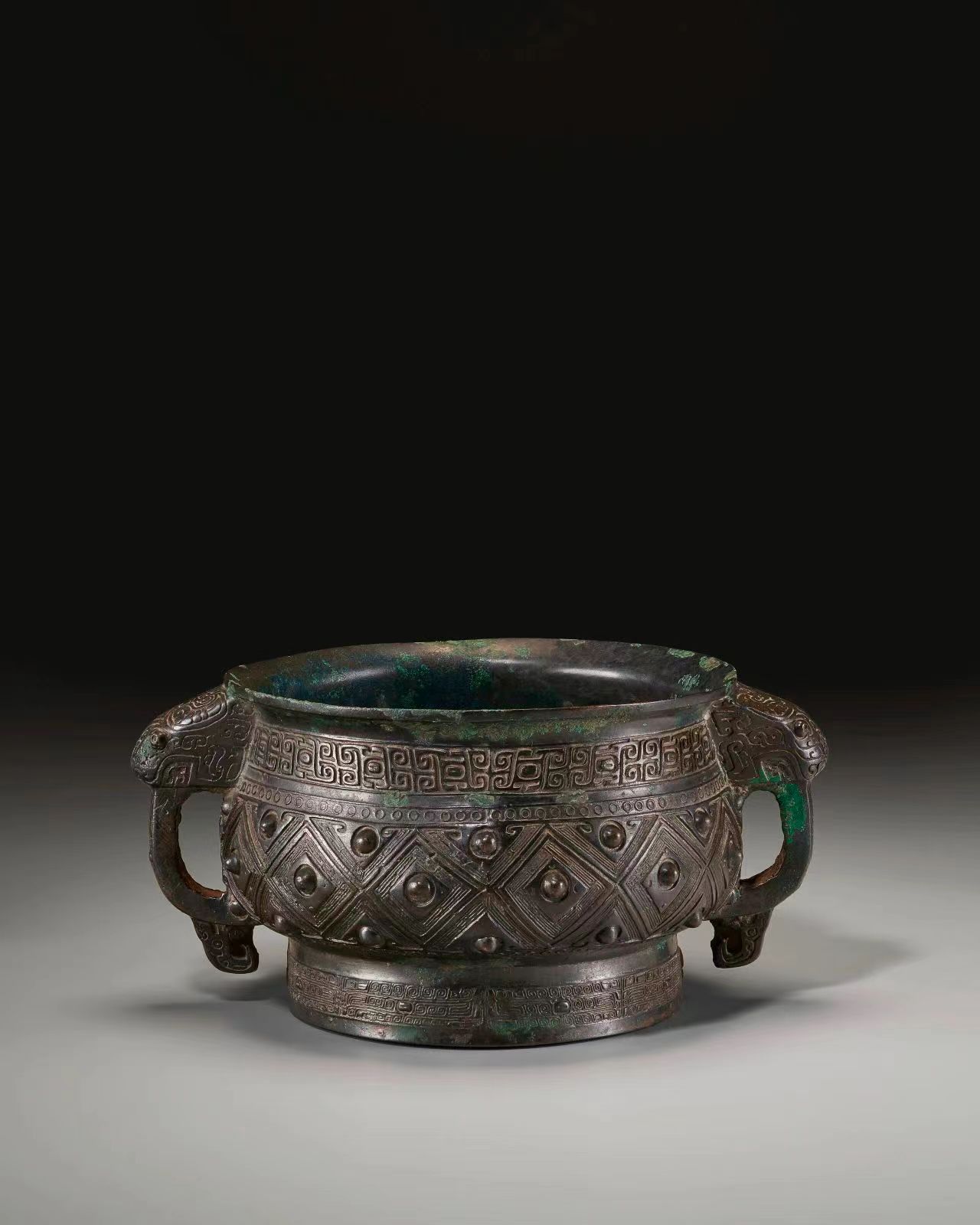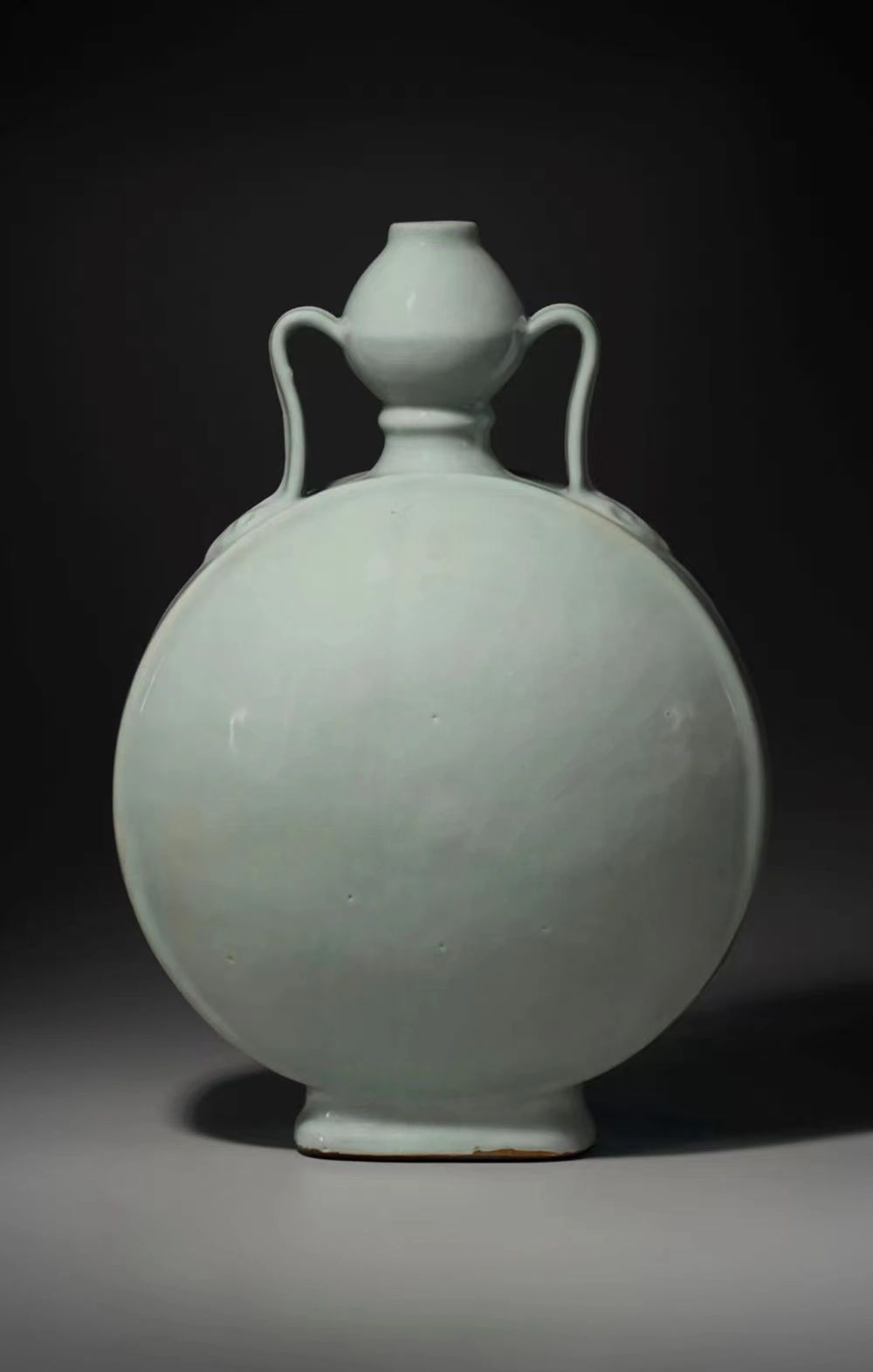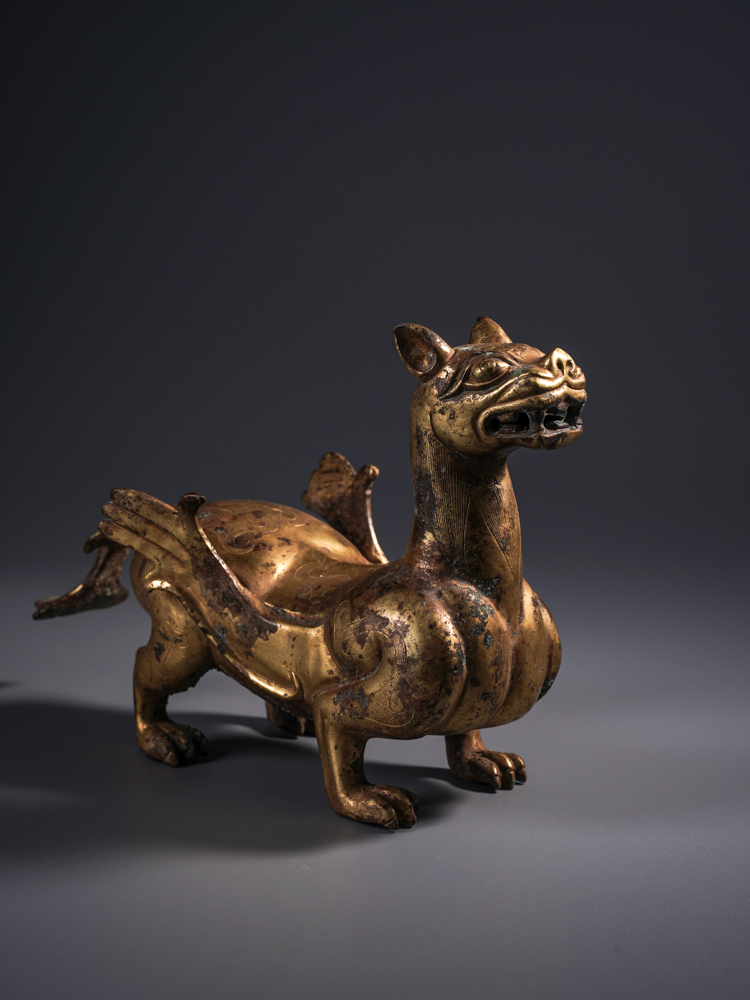One Session with Asian Art -
Every spring and autumn in New York, you have a week to get your finger on the pulse of current Asian art collecting.
This is the fifteenth year since the inception of Asia Week New York.
Back in 2009, a group of 16 galleries, then known as ‘New York's Upper East Side Asian art dealers,’ collaborated on the first Open House in March, and the format and subsequent week-long gallery exhibitions became a model. Soon after, the week grew in size and has now become one of the world's most anticipated art events of the year.
As someone once described it, ‘New York Art Week is the Paris Fashion Week of the art world’.
During the week-long period, the world's top auction houses, first-class museums, high-end galleries, art institutions and other powerful combination of ancient precious works of art from China, Japan, South Korea and other Asian regions, as well as modern and contemporary works, are gathered here.
Ancient traditions and pioneering modern and contemporary art are perfectly intertwined here, and many of them are rarely seen by important private collectors who have kept them in their possession for many years. The variety and quality of Asian Art Week's offerings attracts renowned antique dealers, art experts and art enthusiasts from all over the world.
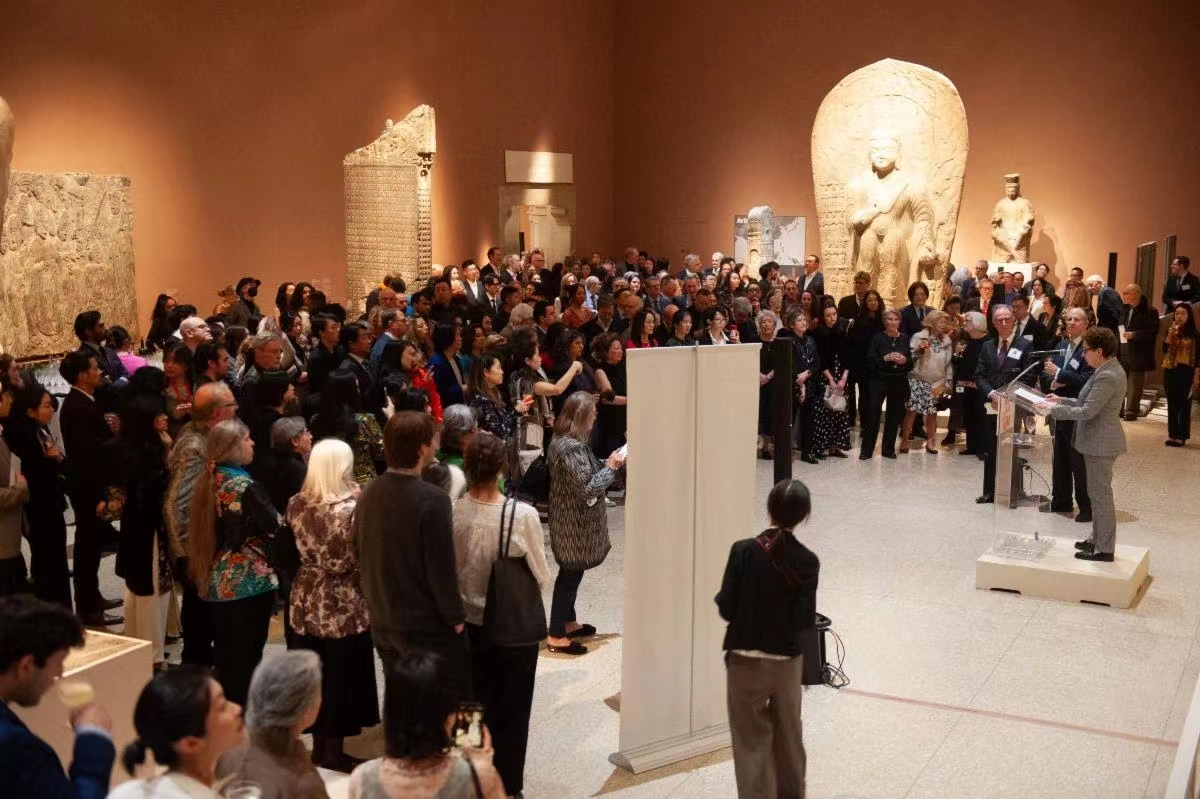
△ 往年纽约亚洲艺术周现场 ©asiaweekny.com
In September 2024, the second season of New York Asian Art Week returned with a vengeance.
As one of the most important auction houses, Christie's New York gathered the best of Asian art from the past and present, from the extremely rare Xuande blue and white peony plate, to the hot Francis Newton Souza oil paintings, and even the heart-wrenching Hokusai prints and other classic masterpieces, a star-studded collection.
Among them, the ‘Important Chinese Porcelain and Craft Masterpieces’ session brings together more than 200 outstanding works of art from the world's most prestigious private collections, including ancient bronzes, porcelains, silk enamels, lacquer, jade carvings, scholar's objects, fabrics, glassware and classical furniture.
Some of the most notable and important pieces include: a number of high antique Chinese bronzes from the renowned Kansai antiques collector, Mr Qin Fengnan; fine jades and porcelains from the renowned American Chinese art collectors, Mr & Mrs Wade Chu; Chinese ceramics from the Stewart Collection, including a rare black ceramic high-footed cup of the Longshan culture, as well as pottery and tri-colours from the Eastern Han Dynasty through to the Tang Dynasty; and a group of extremely fine Qing dynasty Yongqian period monochrome and porcelain pieces from a U.S. private collector. There is also a fine selection of monochrome glazed porcelain from the Yongqian period of the Qing dynasty from a private collection in the United States. The catalogue alone is a feast for the eyes.
This September, we invite you to join us for this once-in-a-lifetime art event.
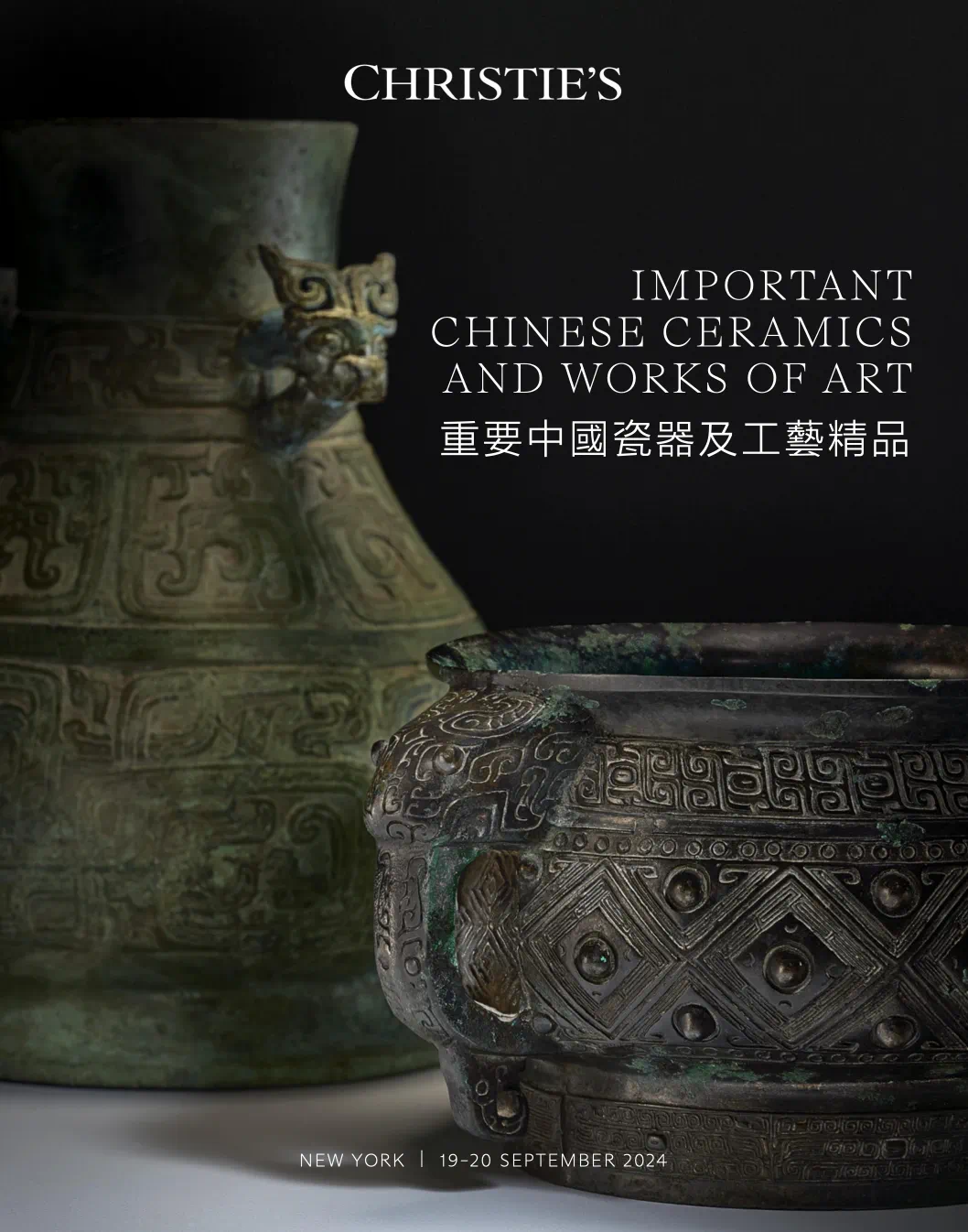
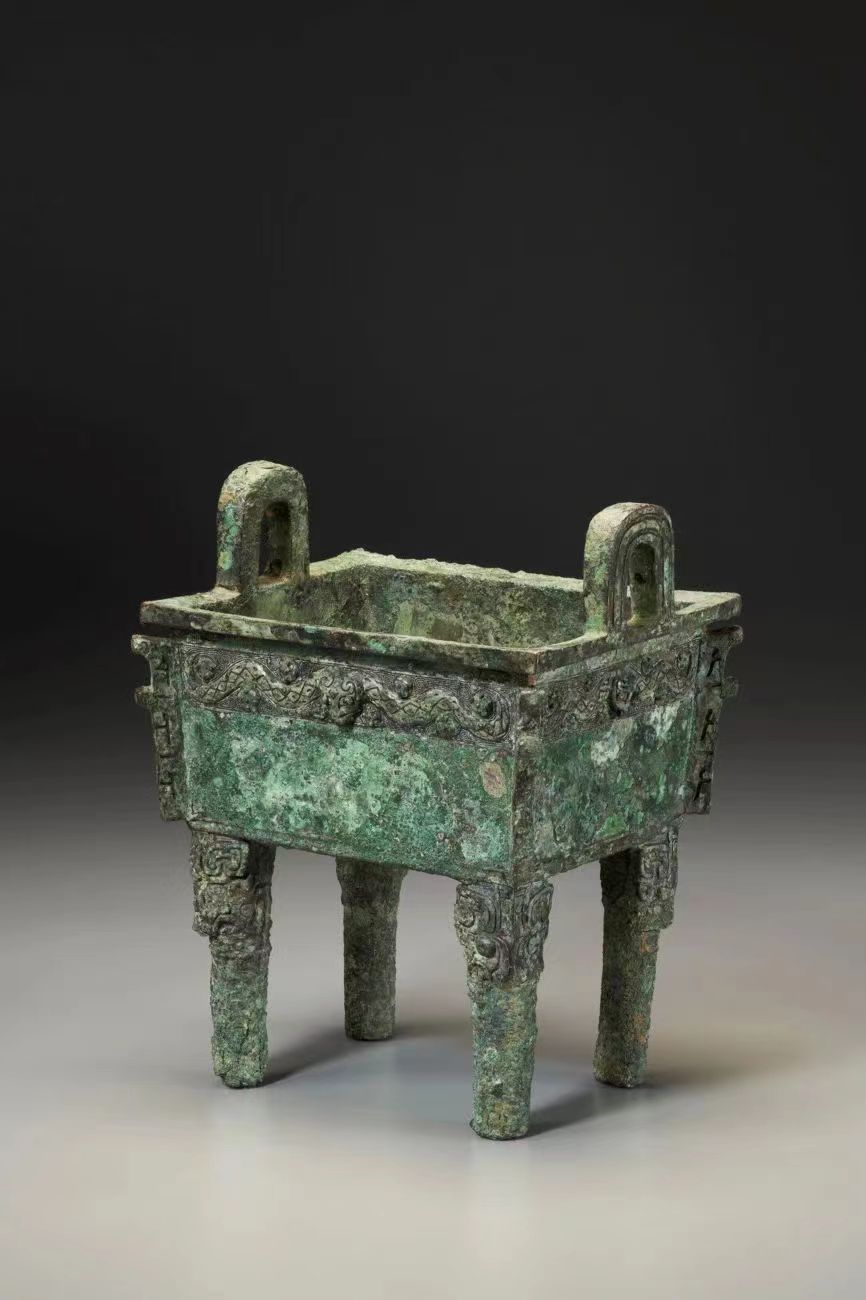
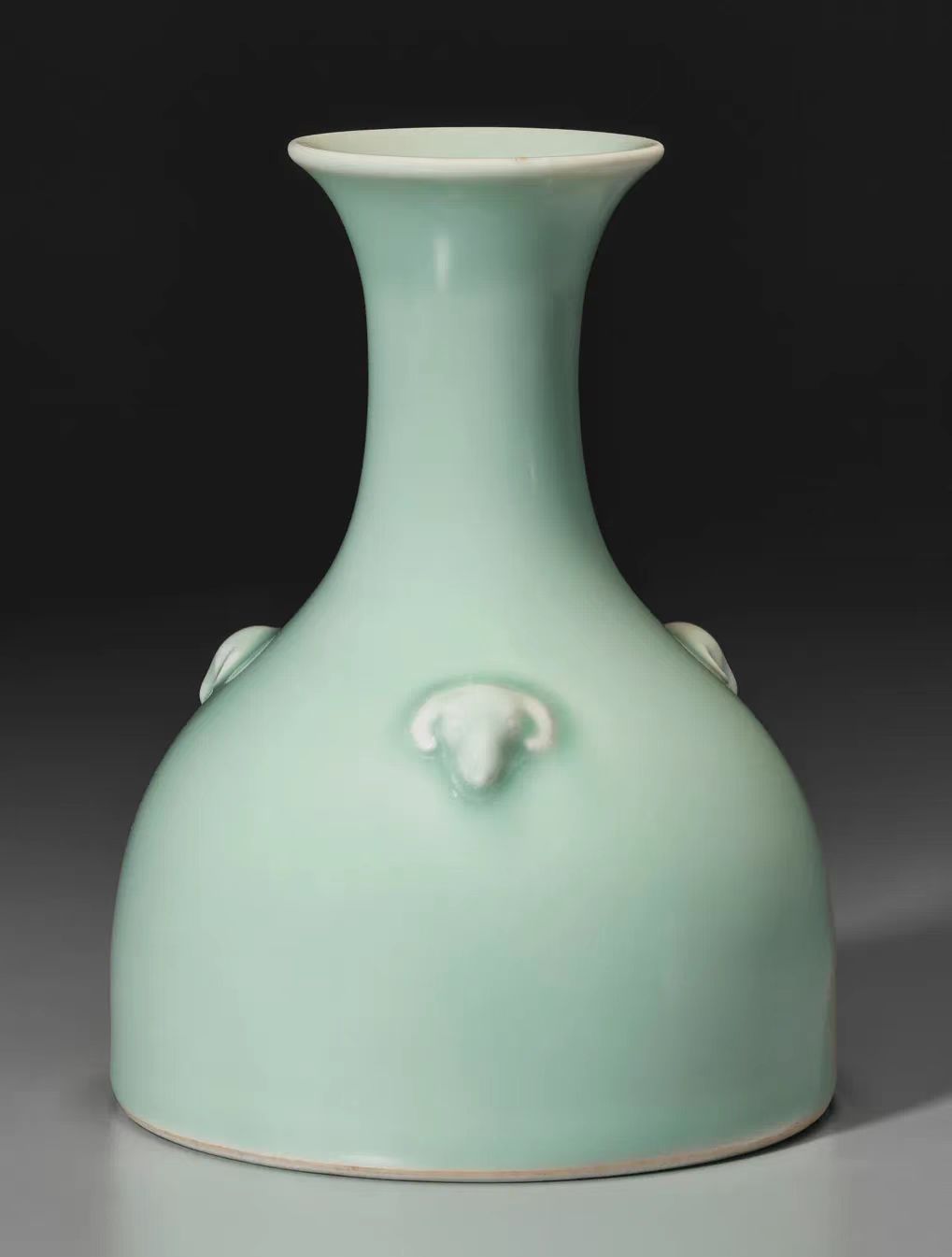
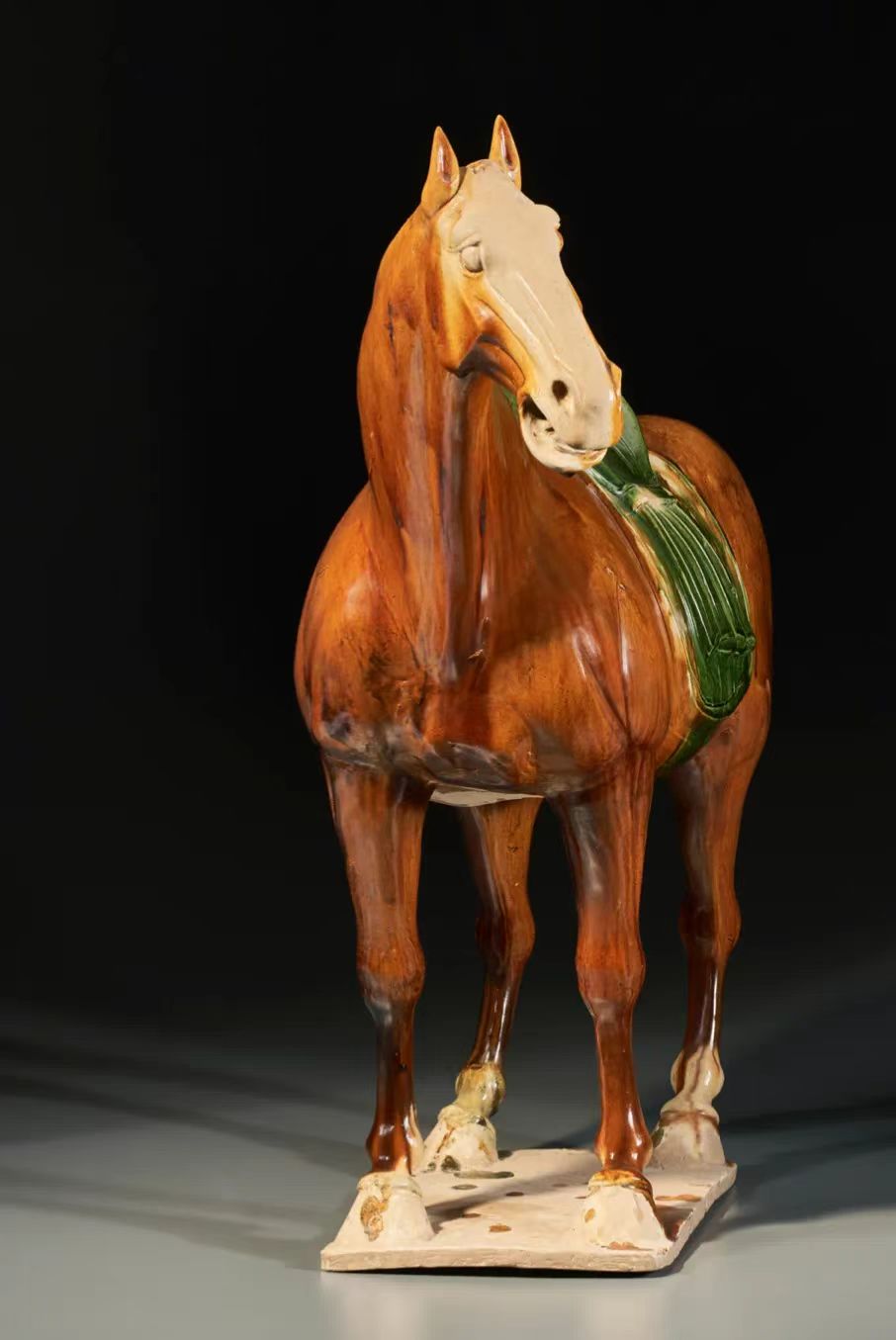
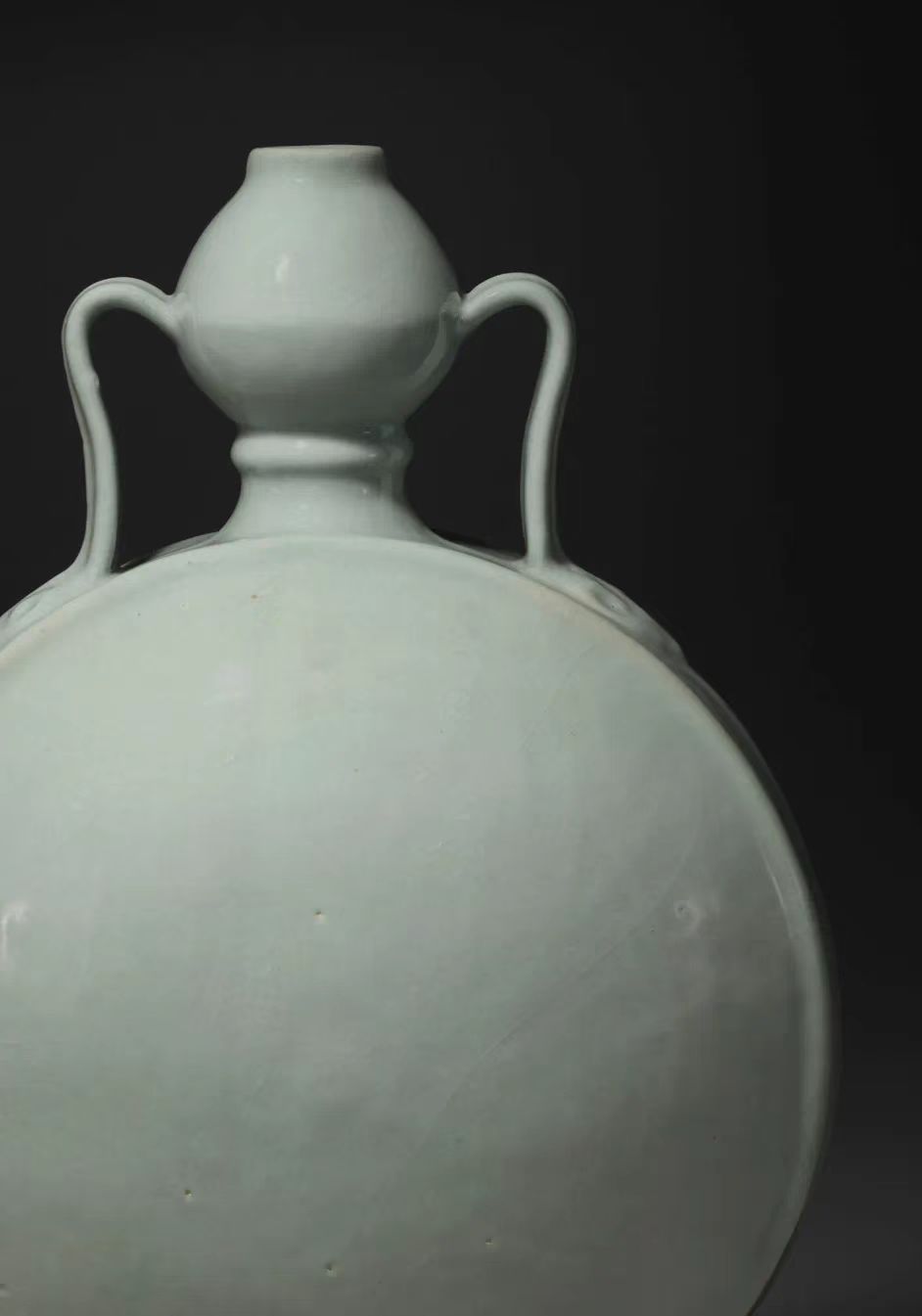
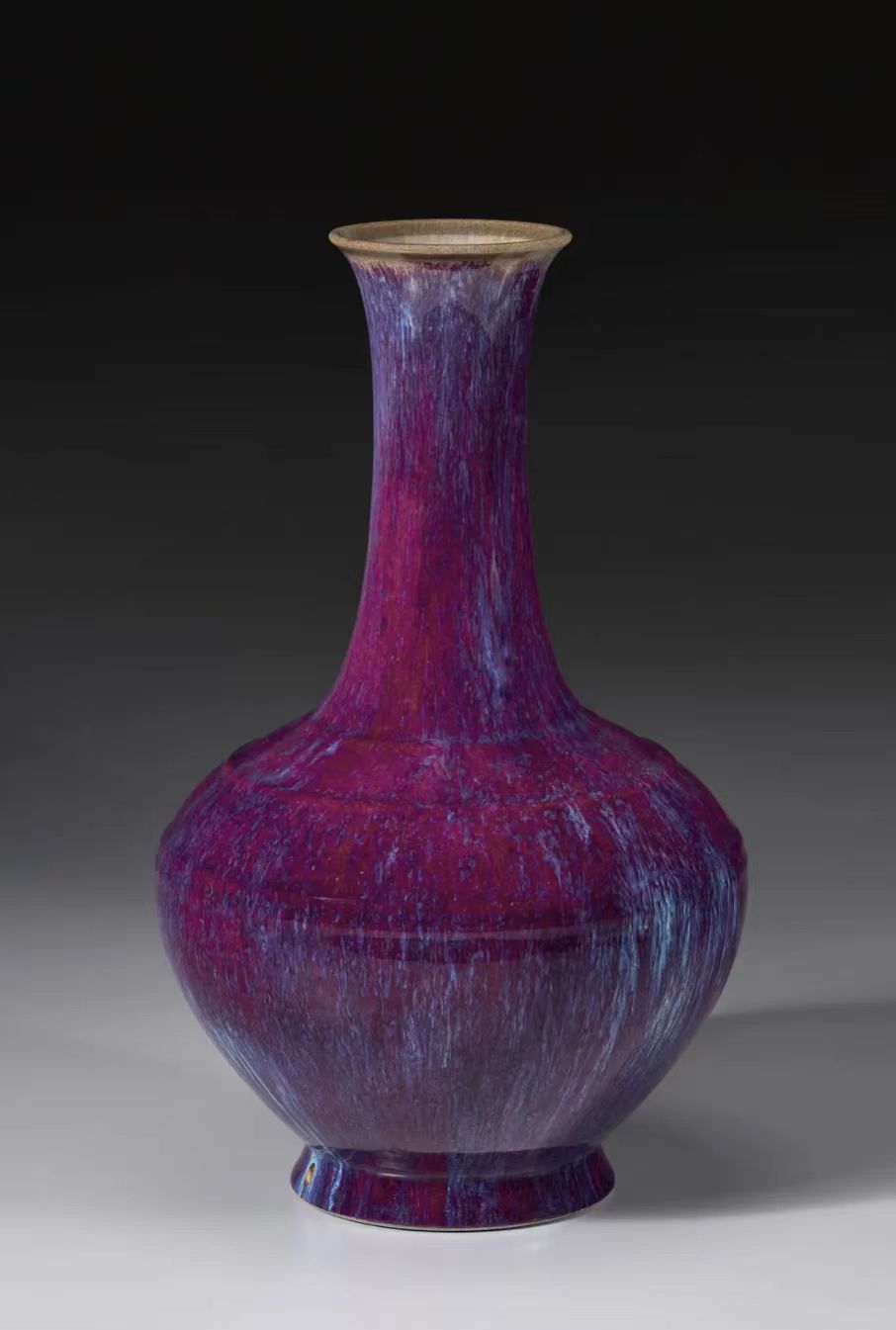
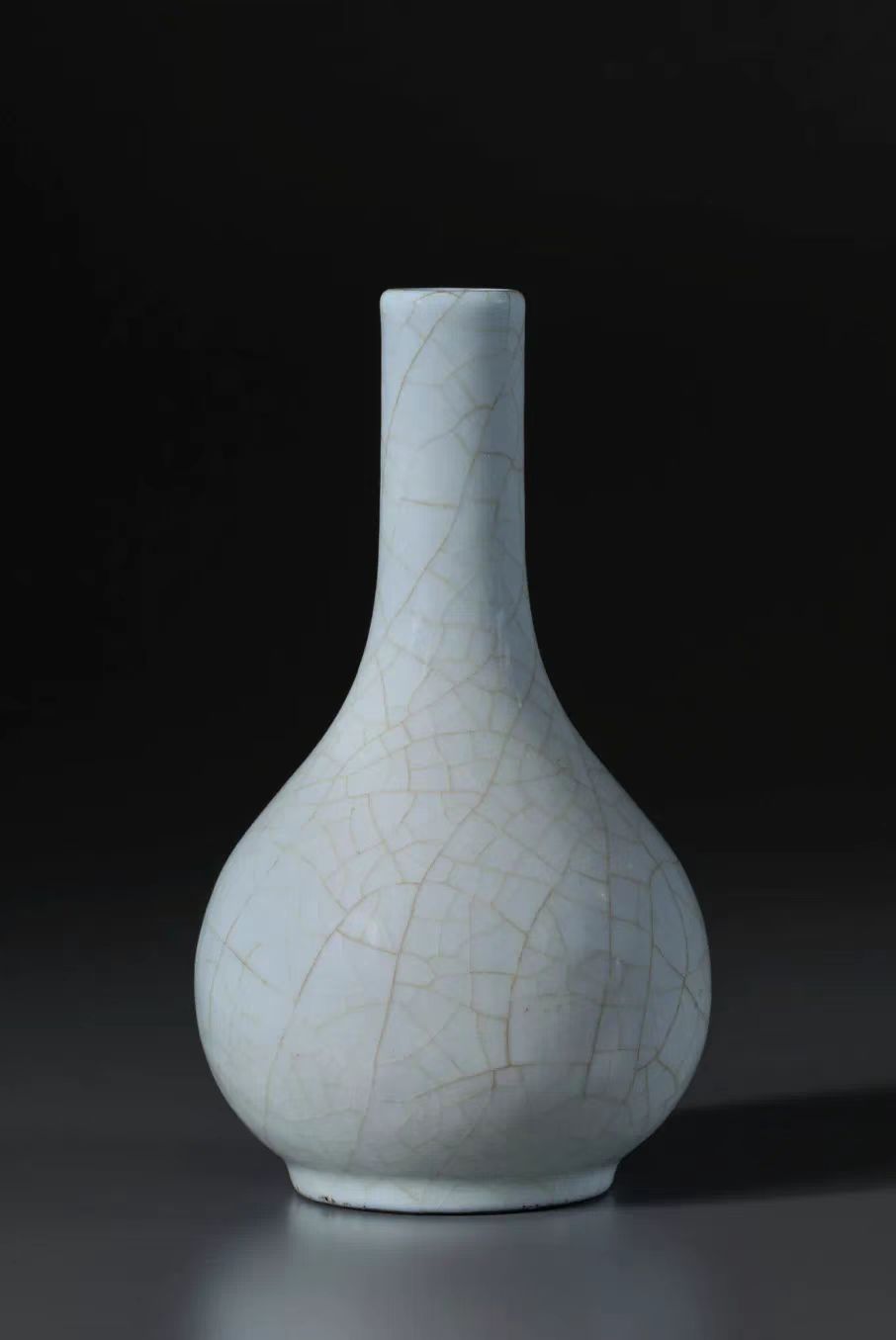
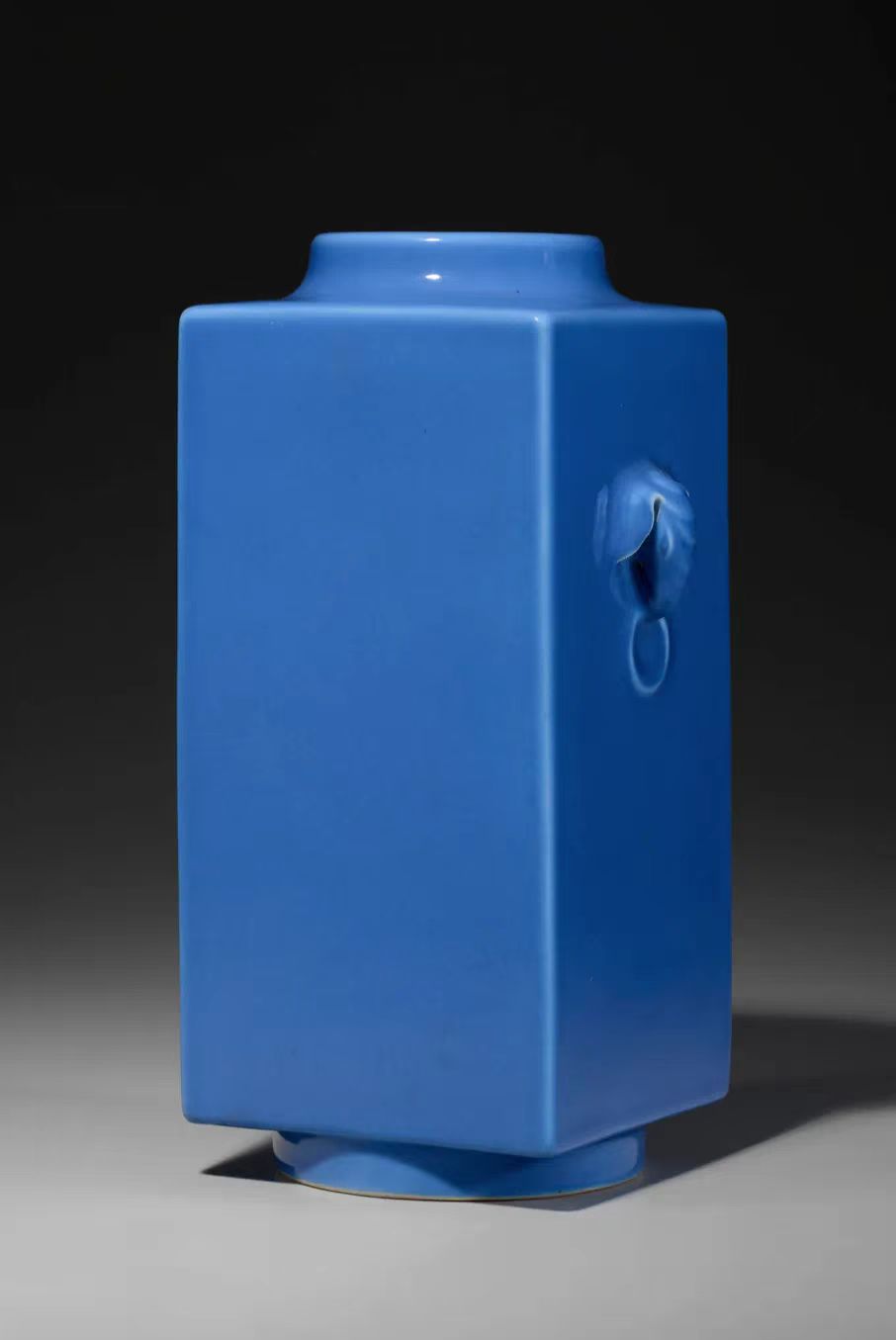
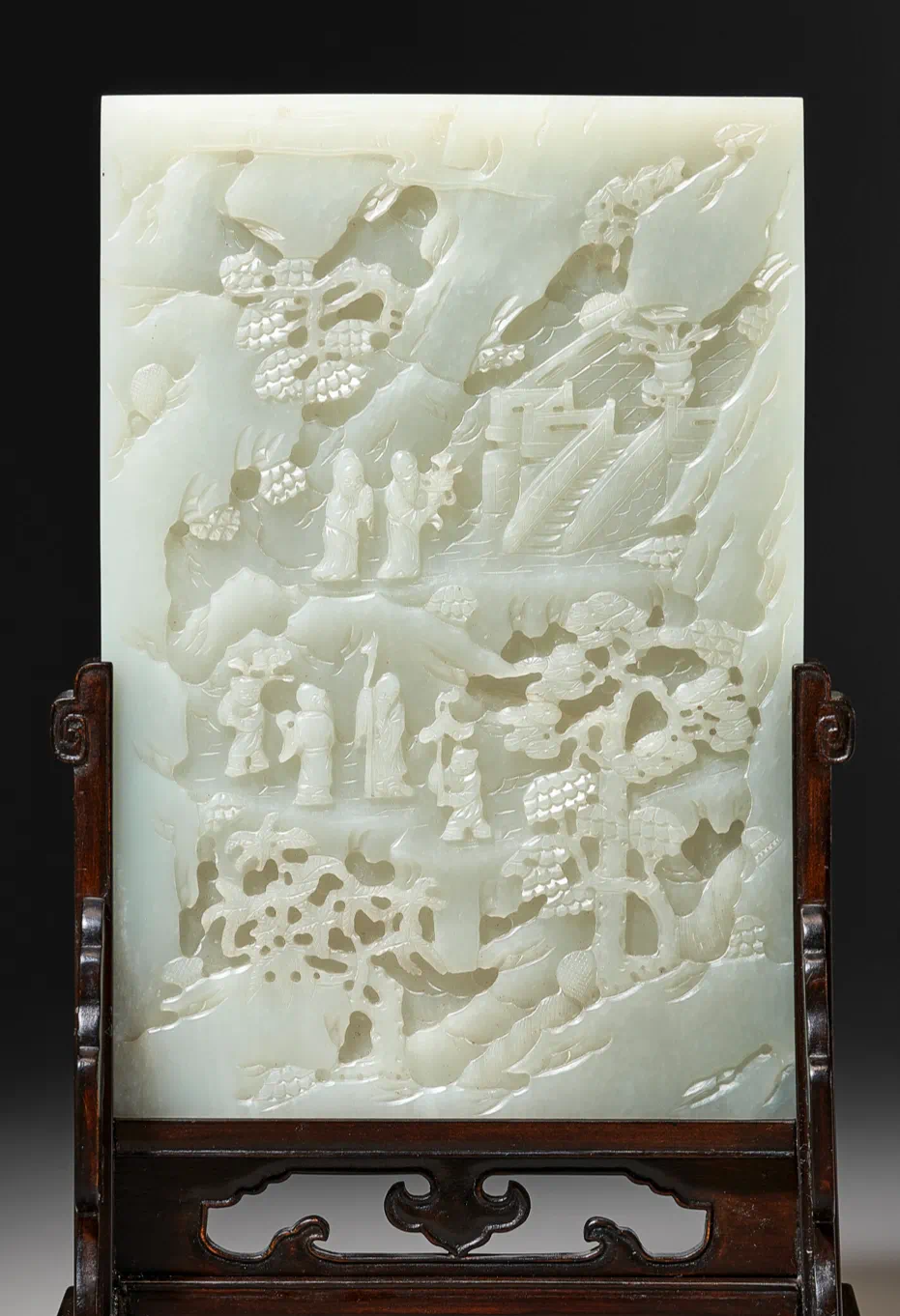
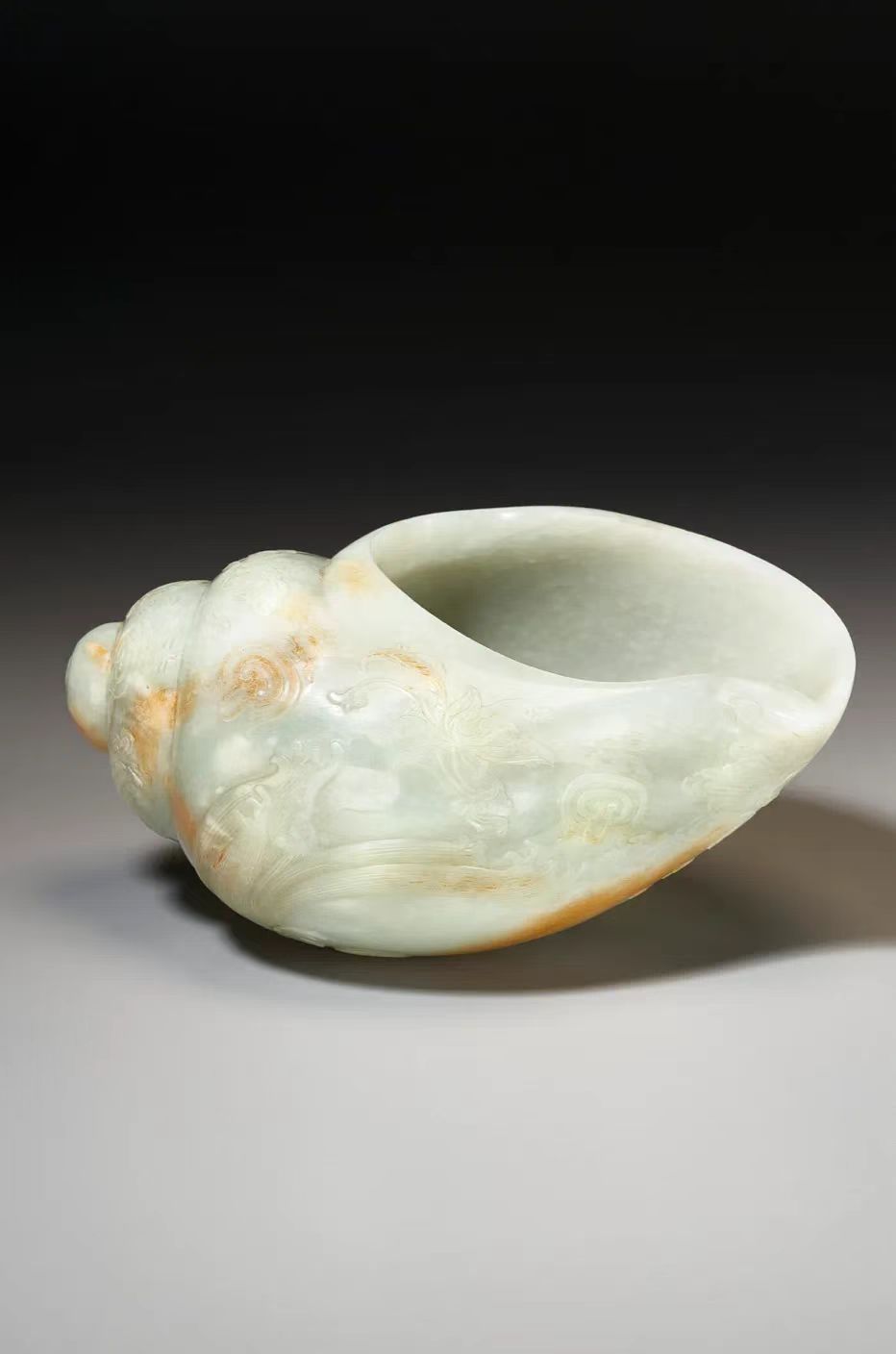
1.
Kobe at the beginning of the twentieth century.
This was the first place where Asian art was transported to Japan by cargo ships, and as a result, the best works of art were often in the hands of local connoisseurs, and the name ‘Kansai Collection’ was known far and wide. Even today, the Hakutsuru Museum of Art and the Kansetsu Museum of Art are globally renowned for their collections of Asian art, and the residences of major families can still be found at the foot of Mount Rokko.
In the world of Japanese antique art, Qin Fengnan is definitely a famous antique collector in Kansai, Japan. His collection can be taken as a representative of Japanese connoisseurship of Chinese art -
In 2008, Qin commissioned Christie's New York to auction a ‘Southern Song Longquan Kiln Fish Ear Vase’ from Matsudaira Fumi, a daimyo tea master of the Edo period; in 2009, Christie's New York released a set of ‘Konya Jacketed Red Patchouli with Praying Mantis and Two Carcasses of Armour,’ now in the collection of the Minneapolis Museum of Art. It is now in the collection of the Minneapolis Museum of Art. The seventeenth-century armour was passed down from generation to generation in the Kishu family, one of the three imperial families of the Tokugawa shogunate, and is in near-flawless condition. Last year's Asian Art Week in New York led the way with a large fish and dragon ear vase in blue glaze from the Longquan kilns of the Southern Song dynasty, which was hammered at $1.1 million above its estimate.
The splendour of Chin's collection is evident.
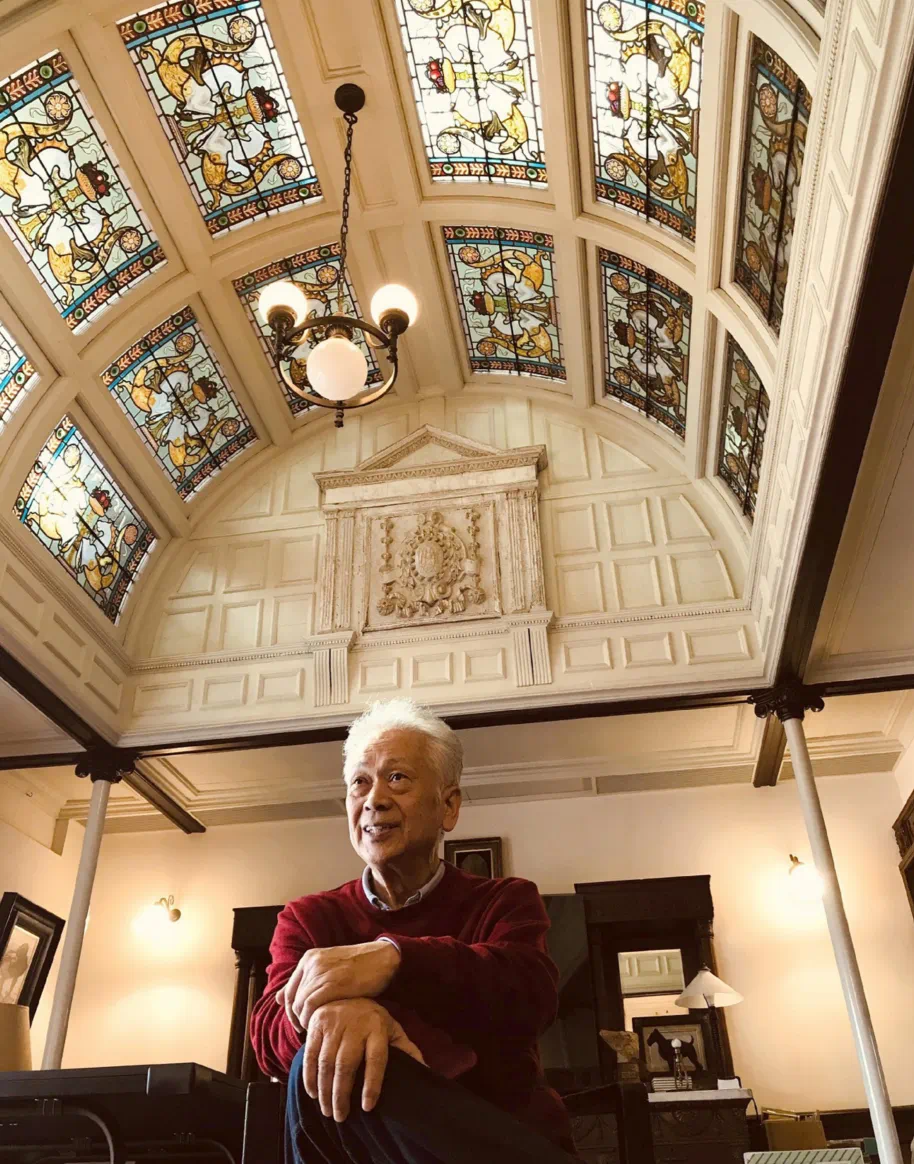
Born in Japan in 1949, Chin's interest in antiques really began in the 1960s. He was deeply inspired by the ‘minimalist’ aesthetic of the founder of the Folk Art Movement, Ryu Sogetsu - intuition first, market trends second - and persevered in his quest for first-rate works.
In 1984, he opened the first ‘Hata Kobiiutsu’ antique shop in Osaka's Nishitenmano Matsudori, near the famous Hirano Kotōken antique shop, and at the beginning of the 1990s, he joined the ‘Osaka Fine Arts Club’, which is a group of elite antique dealers in the Kansai region. ‘In the early 1990s, he joined the Osaka Fine Arts Club, a group of elite antique dealers in Kansai, and soon opened a second antique shop in Ashiya City, near his home in Kobe, while at the same time starting to bid at international auctions.
This autumn, bronzes from the Qin Collection will once again be offered at Christie's New York, with the theme ‘Spiritual Mind and Intelligent Eyes: Chinese High-grade Bronzes from the Qin Fengnan Collection’ leading the ‘Important Chinese Porcelains and Crafts’. ‘Jessica Rosen
Professor Jessica Rawson, who in the 1990s published the seminal work on ancient Chinese bronzes, The Sackler Collection of Western Zhou Bronze Rituals, can be seen in Volume 2, where six square tripods (pp. 234-39, pls. 6 and 6.5-6.9) are shown alongside the early Western Zhou bronze from the Sackler Collection, which is to be unveiled at Asian Art Week. ‘The six square tripods (figs. 6, 6.5 and 6.6.9) are similar to this early Western Zhou tripod, which will be shown at the Asian Art Week, in that they have narrow bands of decoration on the upper sides of the body, a double-bodied serpentine motif, a double-bodied body underneath, and an anisotropic body with a rhombus pattern running up and down the body and through the nipple motifs. The difference is that this piece is glossy underneath the four-sided serpentine motifs, whereas several of the pieces included in the book are encircled with nipple decoration.
▼
Lot 803
西周早期 公元前十一至十世纪 青铜方鼎
铭文:丙作父乙
高 22.5 cm.
$150,000-250,000
来源:
秦峰男珍藏,神户,1995年前后购于日本(传)
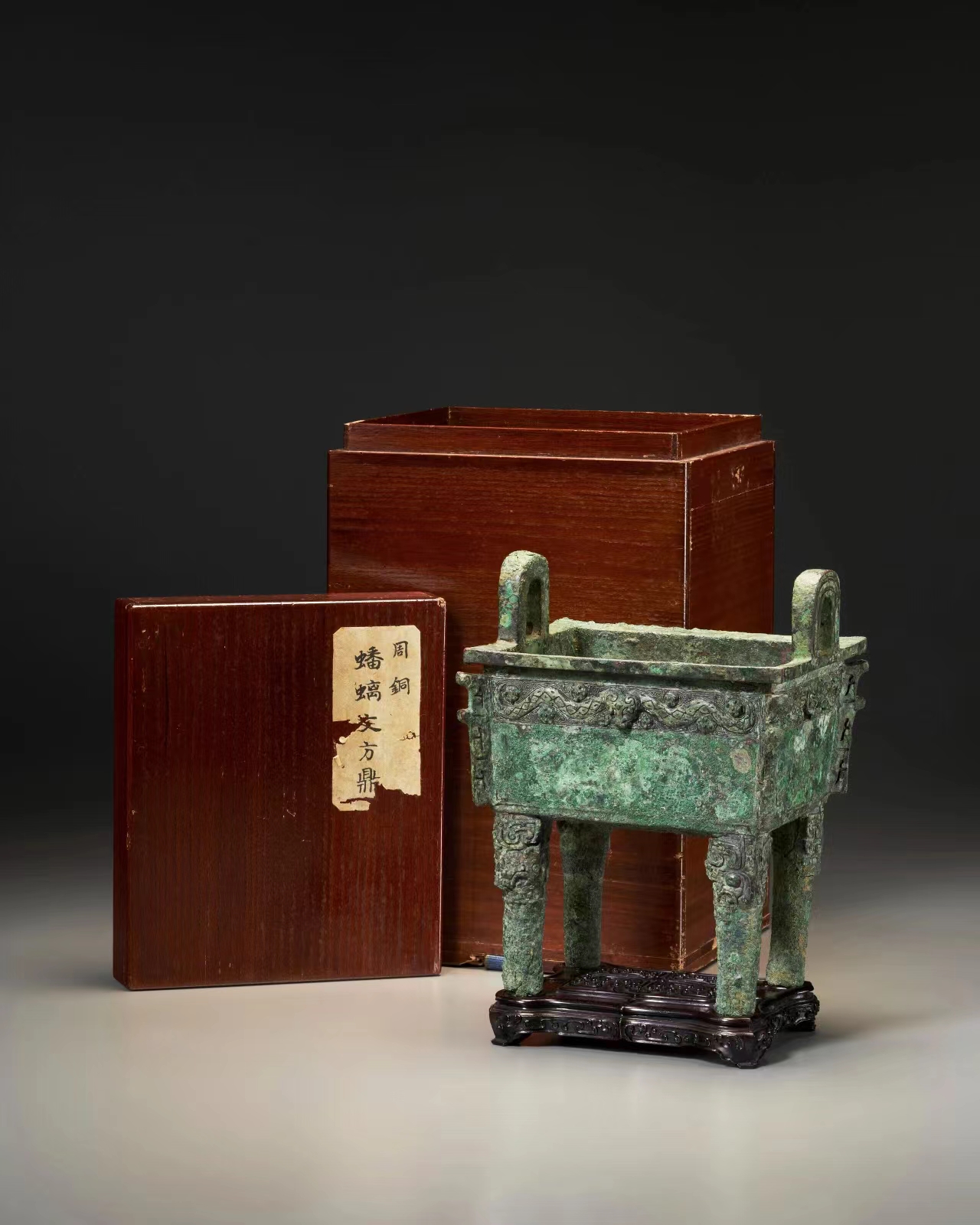
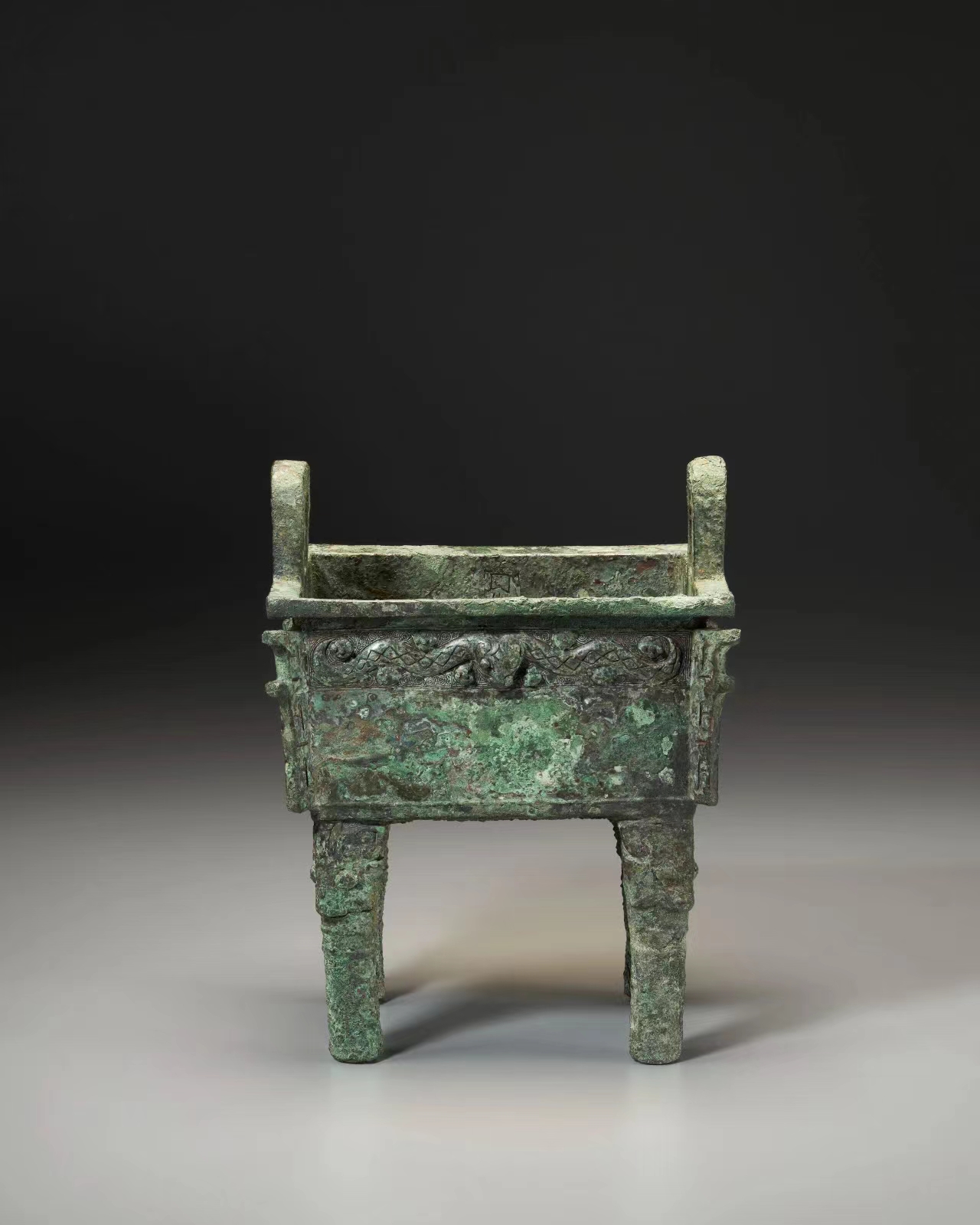
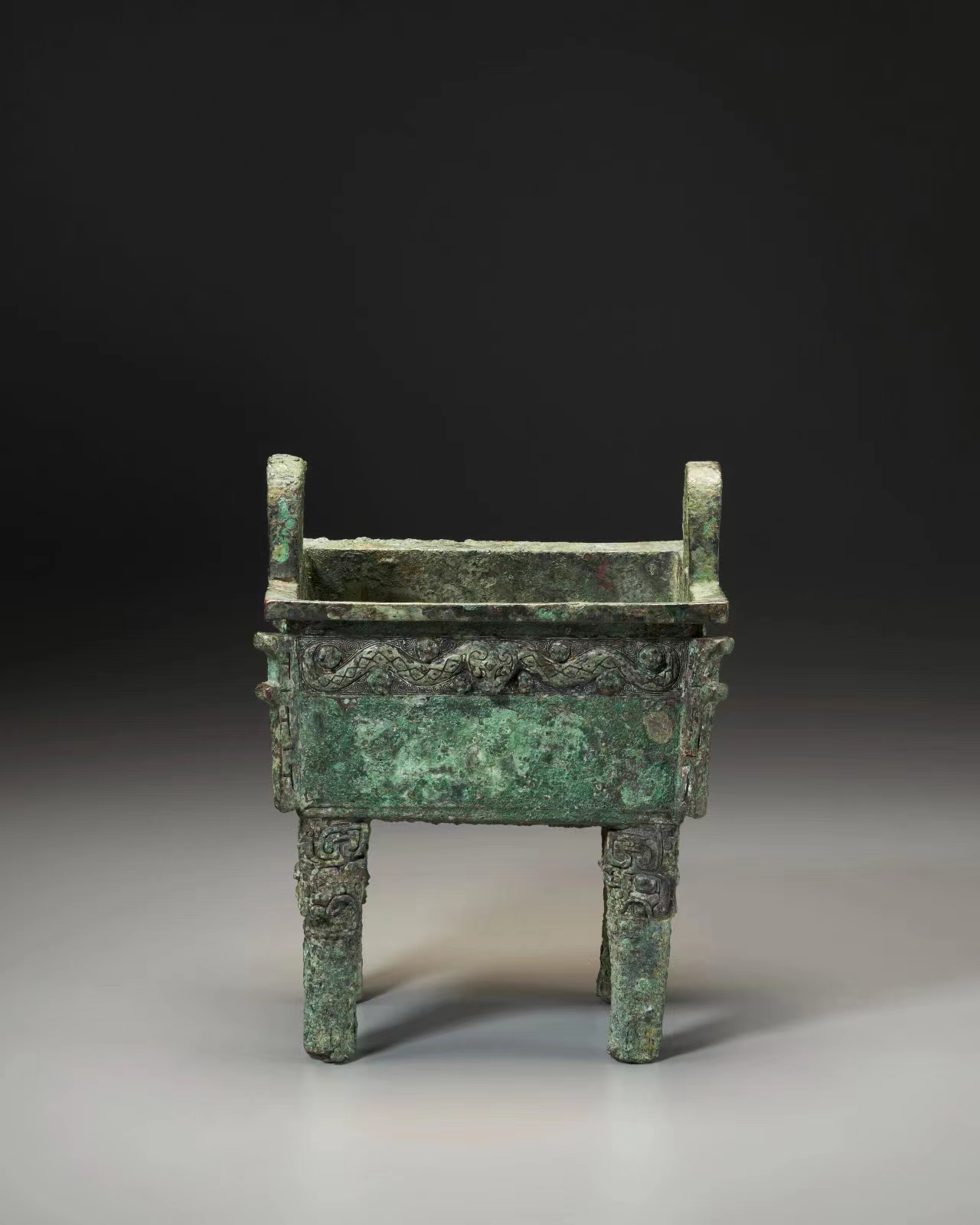
The narrow band on other similar square tripods is usually cast with bird or dragon motifs rather than serpentine. Chen Peifen, a leading bronze expert, includes a square ding in Ancient Chinese Bronzes in the Shanghai Museum (London, 1995, p. 50, no. 23) with a pair of birds facing each other.
In September 2004, Christie's New York offered a square tripod from the Doris Duke Collection, very similar to the one in the Shanghai Museum, and there is a square tripod from the Western Zhou excavated in Tengzhouzhuang, Shandong province (see The Complete Collection of Chinese Bronzes: The Western Zhou, vol. 6, no. 2, Beijing, 1997, p. 73, no. 75) with a pair of confronting kui dragons in the same area. The same area is decorated with confronting kui dragons; the Palace Museum in Beijing also has in its collection a bronze square tripod with the inscription ‘C father B,’ which dates from the early Western Zhou period. A top copy of this inscription is recorded in the famous Qing dynasty bronze scholar Wu Dazhi's ‘愙齋集古錄’, which is a collection of inscriptions from the Qing dynasty.
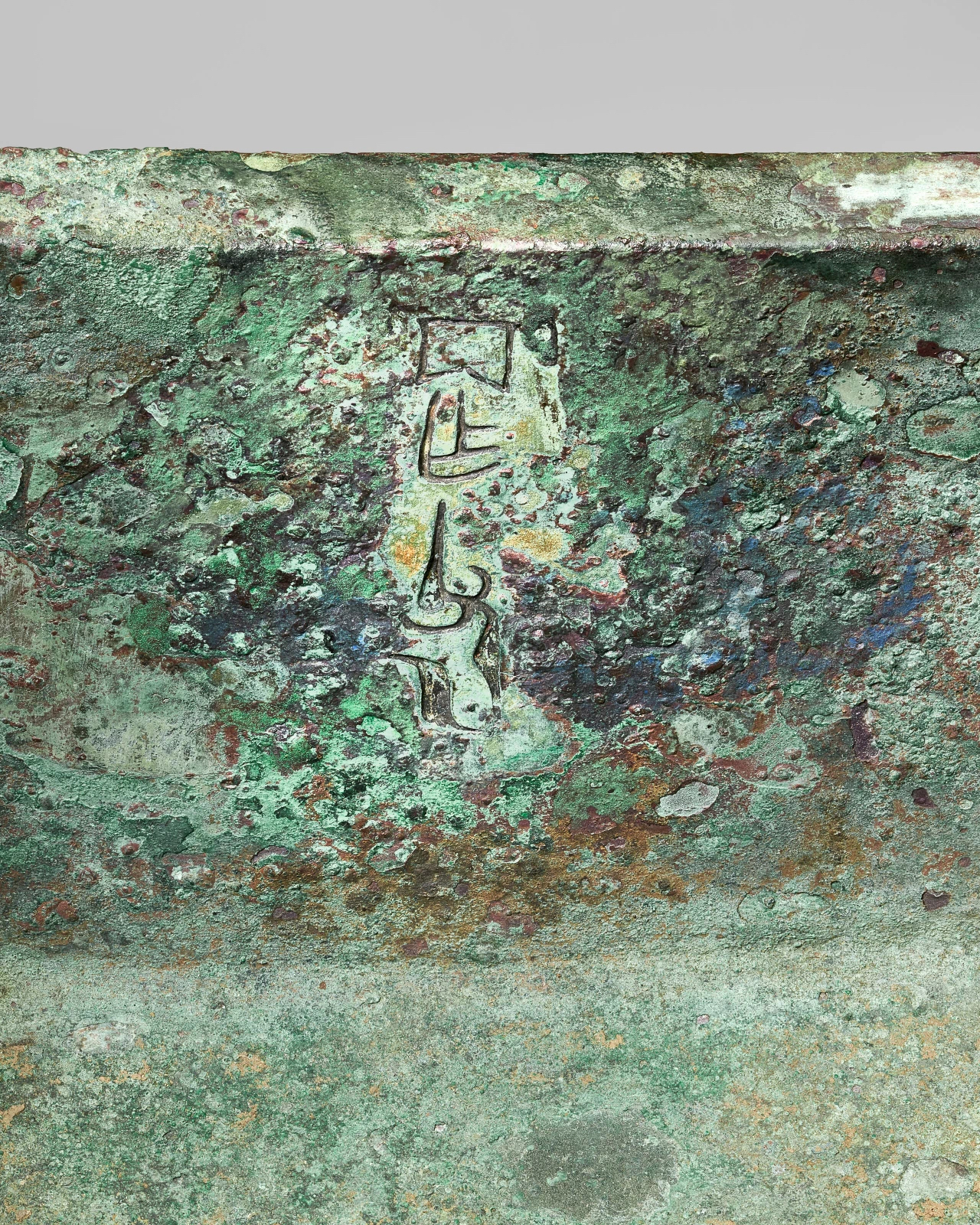
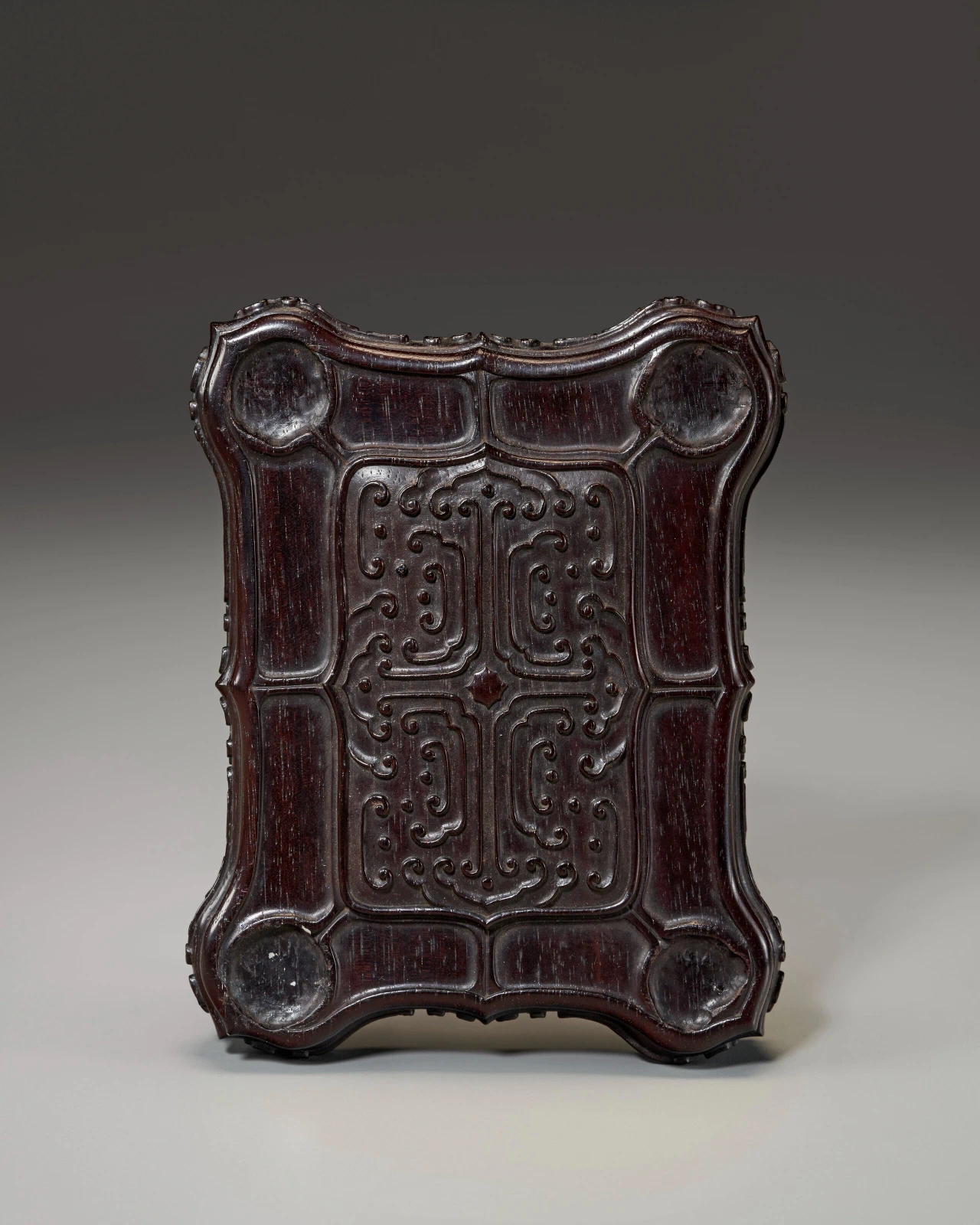
An early Western Zhou bronze gui with breast studs, previously recorded in Wu Dazhi's Jiegu Lu (愙斋集古录), will also be on view. Two other similar bronze gui, one from the old Klingenberg Collection and now in the Museum of East Asian Art, Berlin, has a lozenge-shaped motif and nipples that are particularly similar to those on this lot, although the slender convex lines of the gui in the Berlin Collection are not quite the same; and the other, from the Seattle Art Museum, Washington, has a lozenge-shaped motif and a wider band of convexity than the lot on this release and the other examples mentioned above.
▼
Lot 804
西周早期 公元前十一至十世纪 青铜乳钉纹簋
铭文:亚父辛
带柄直径 28 cm.
$80,000-120,000
来源:
吴镇峰,《商周青铜器铭文曁图像集成》,卷八,上海,2012年,页139,编号03829
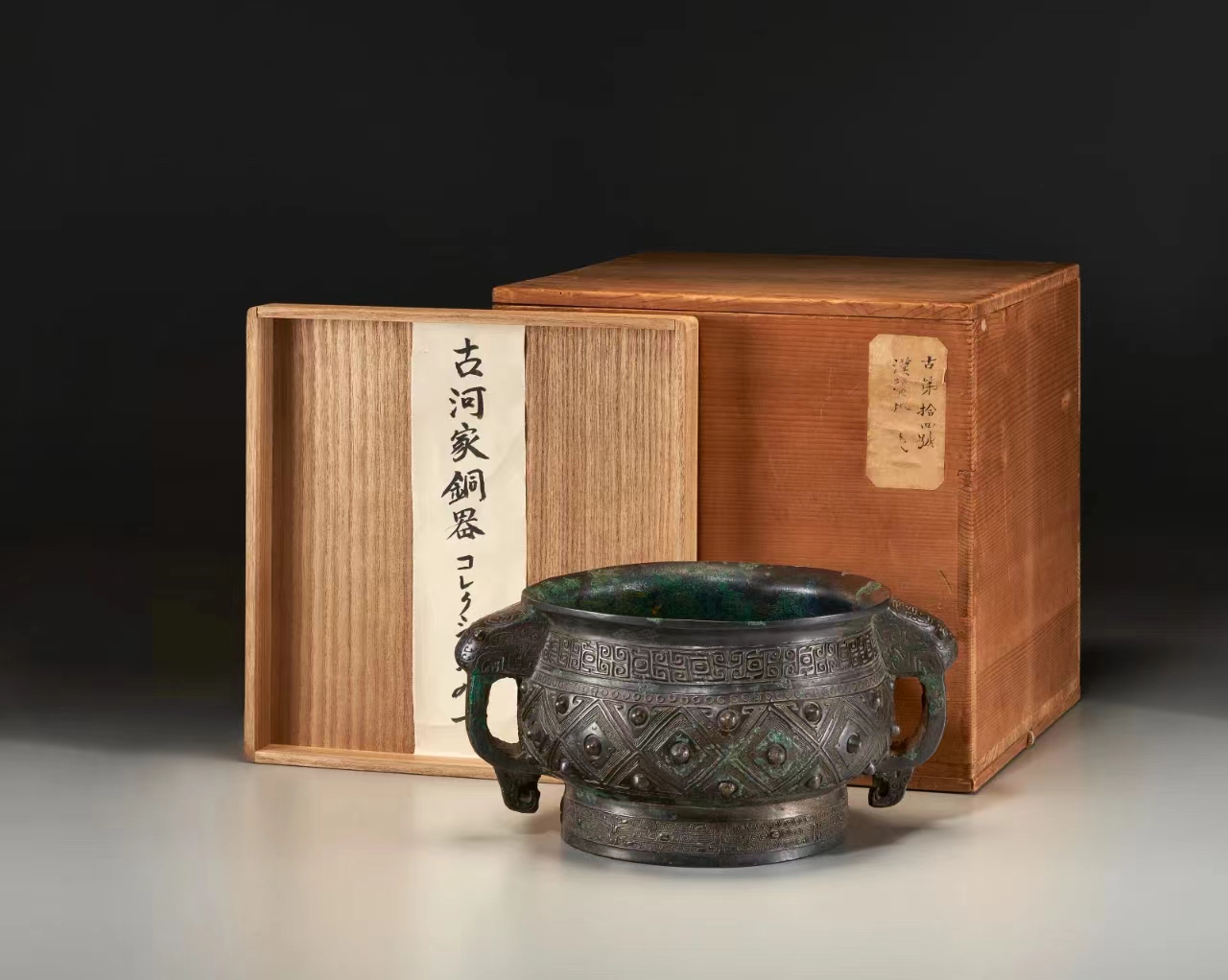
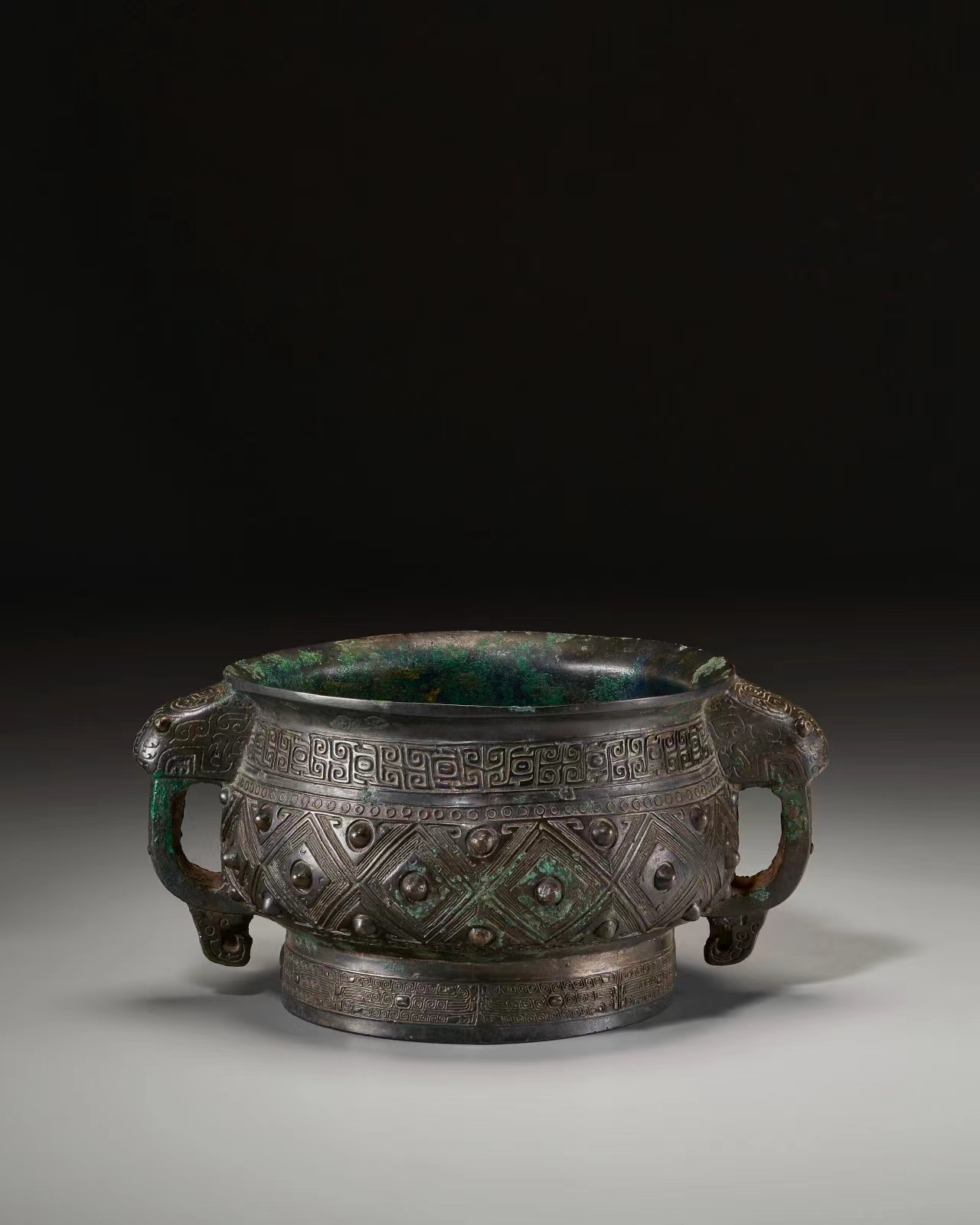
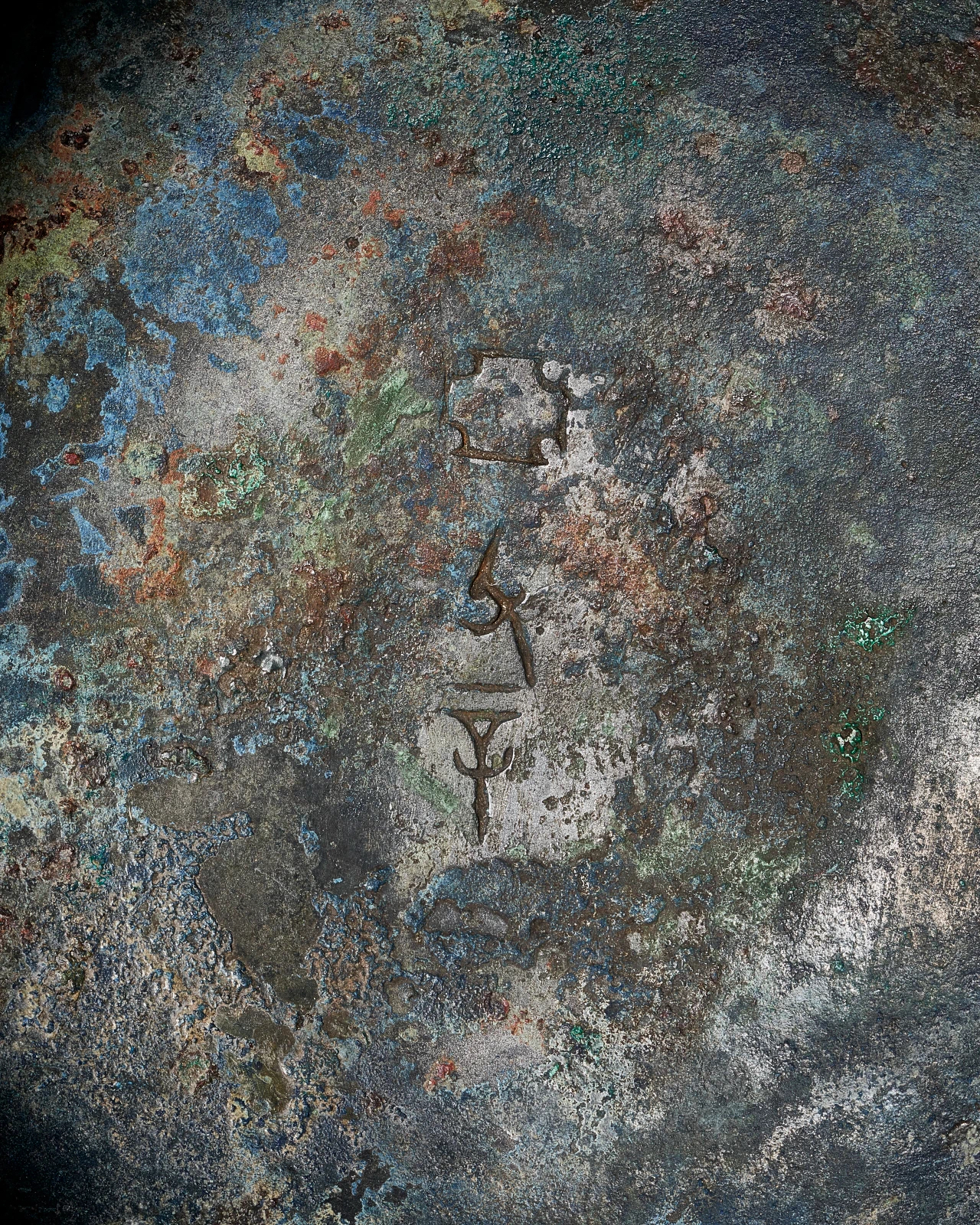
Lot 806, an early Western Zhou bronze taotie zun, is the long-lost ‘Bei Bo Zun’ - it was once included in Luo Zhenyu's ‘Zhen Song Tang Jie Gu Mei Wen Renquan’ (A sequel to the Ancient Remains of the Zhen Song Tang Collection), and was later acquired by Mr Qin Fengnan in Japan. It was once included in Luo Zhenyu's Jingsongtang ji guwen zhi xueji (The sequel to the Jingsongtang Collection of Ancient Writings), which was in the hands of the Asami family in Japan, and later in the collection of Mr Qin Fengnan. It is part of a set with the Beibo wine vessel in the collection of the Museum of Fine Arts, Boston, which has an almost identical inscription and a particularly similar body decoration.
▼
Lot 806
西周早期 公元前十一至十世纪 青铜饕餮纹尊
铭文:北伯作口宝尊彝
高 24.5 cm.
$100,000-150,000
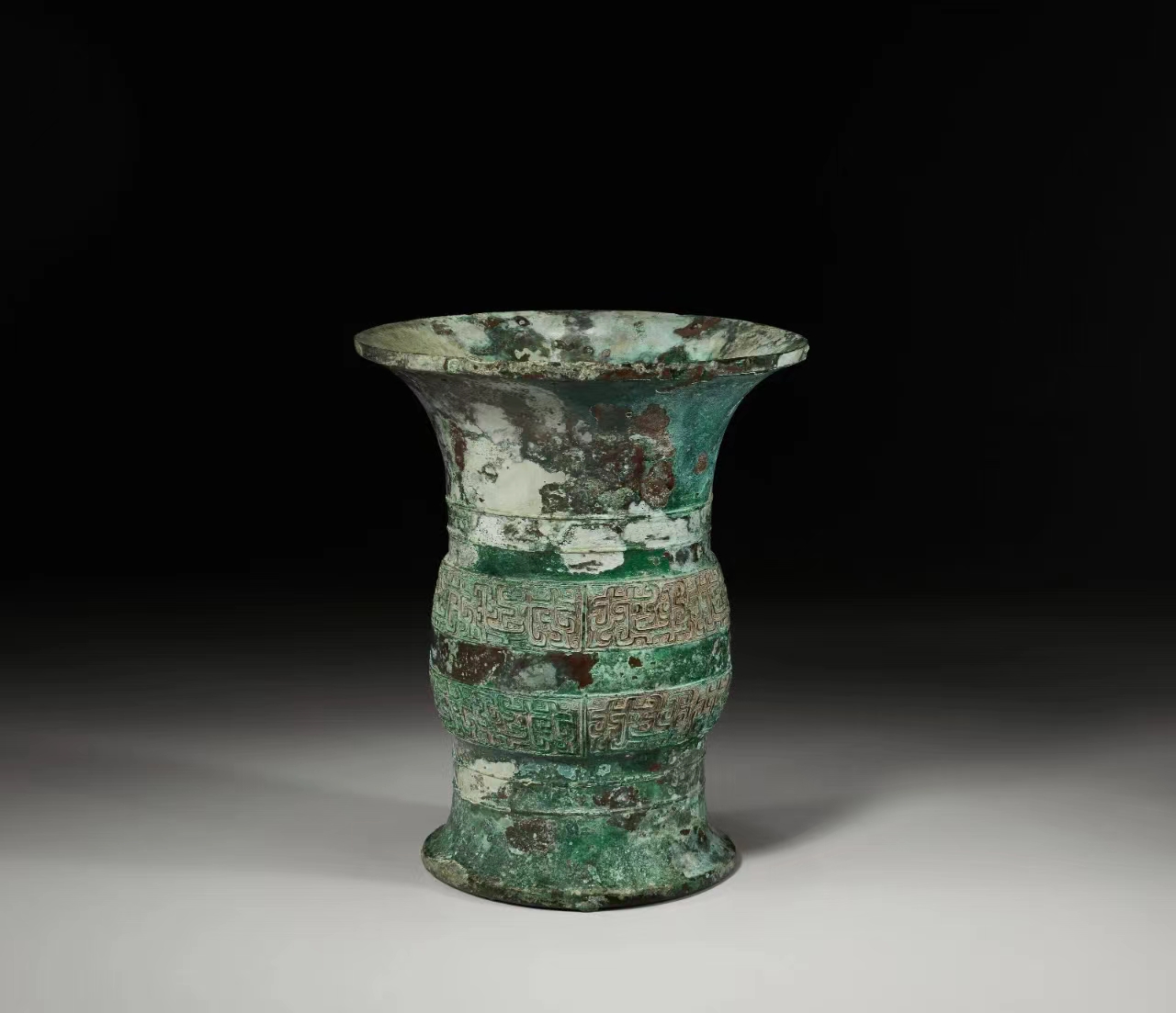
来源:
严一萍,《金文总集》卷七,1983年,编号4780
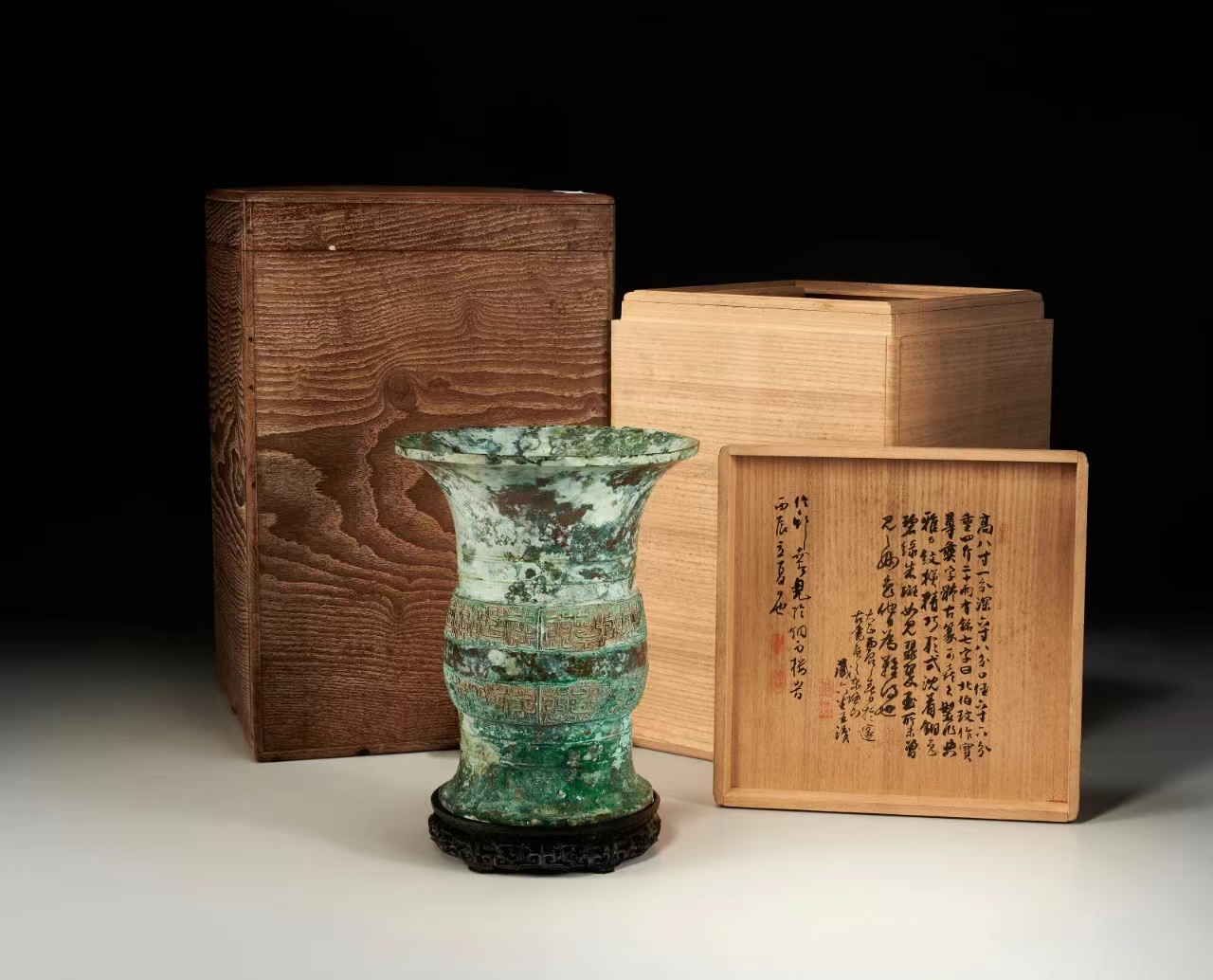
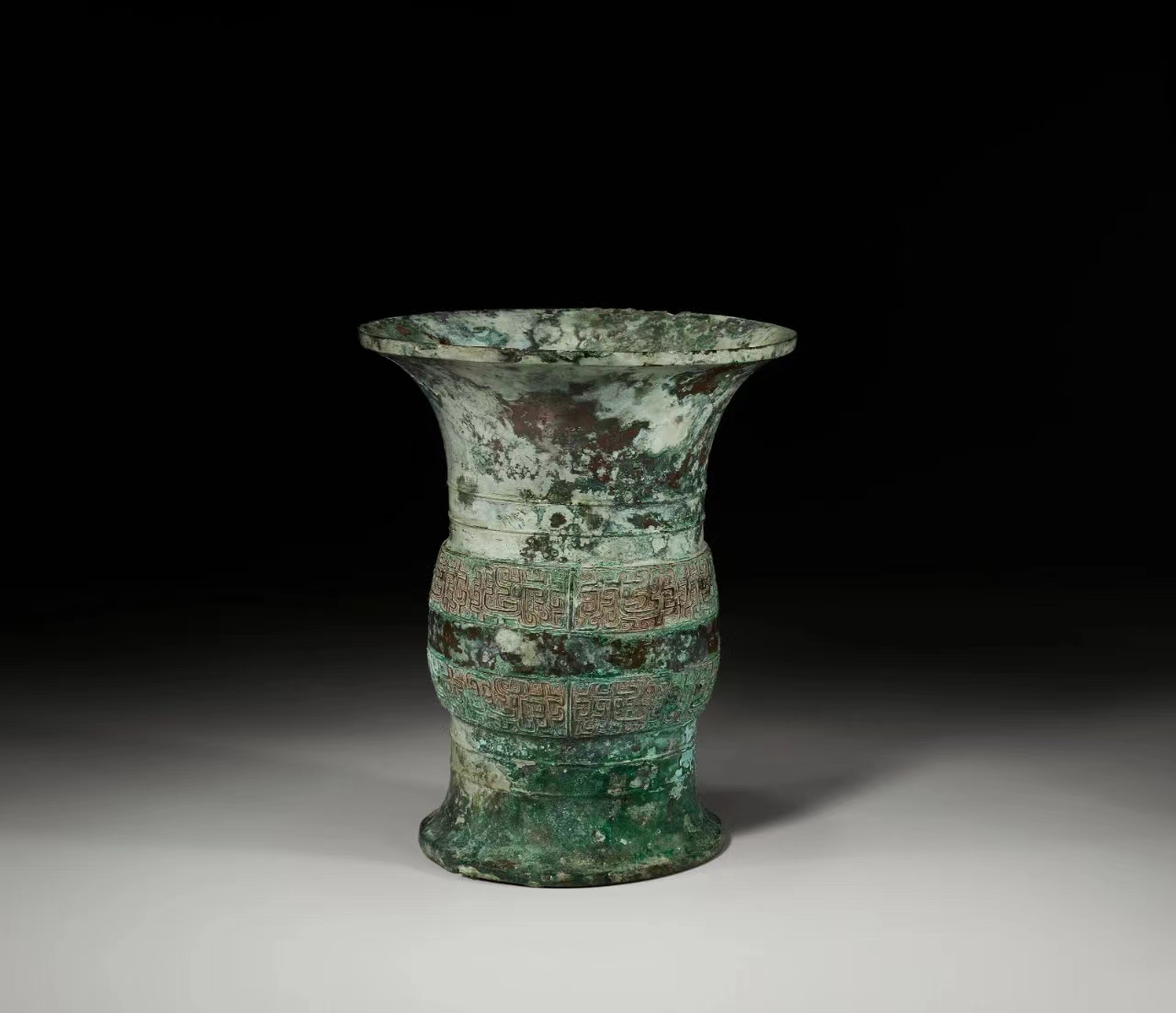
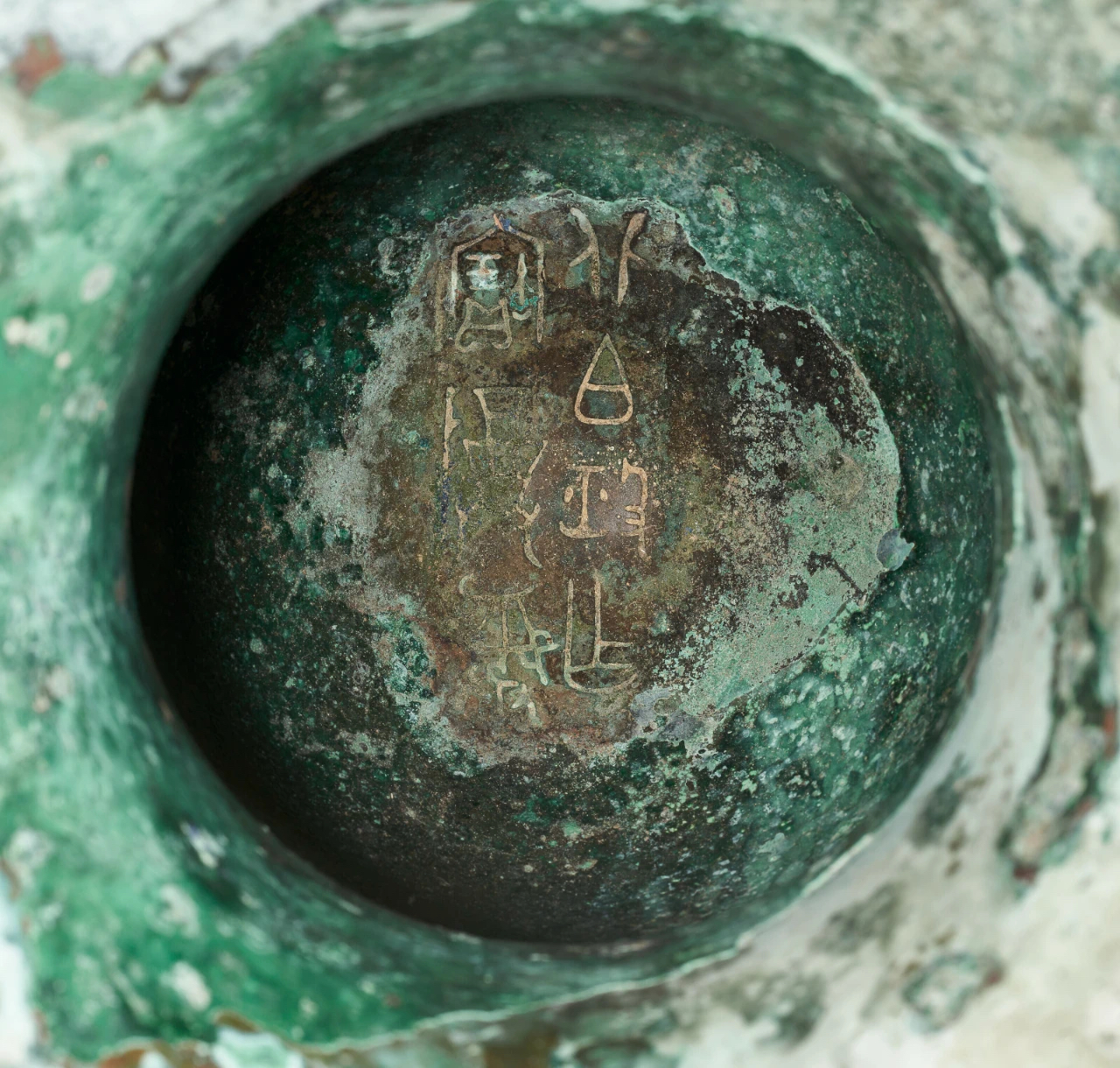
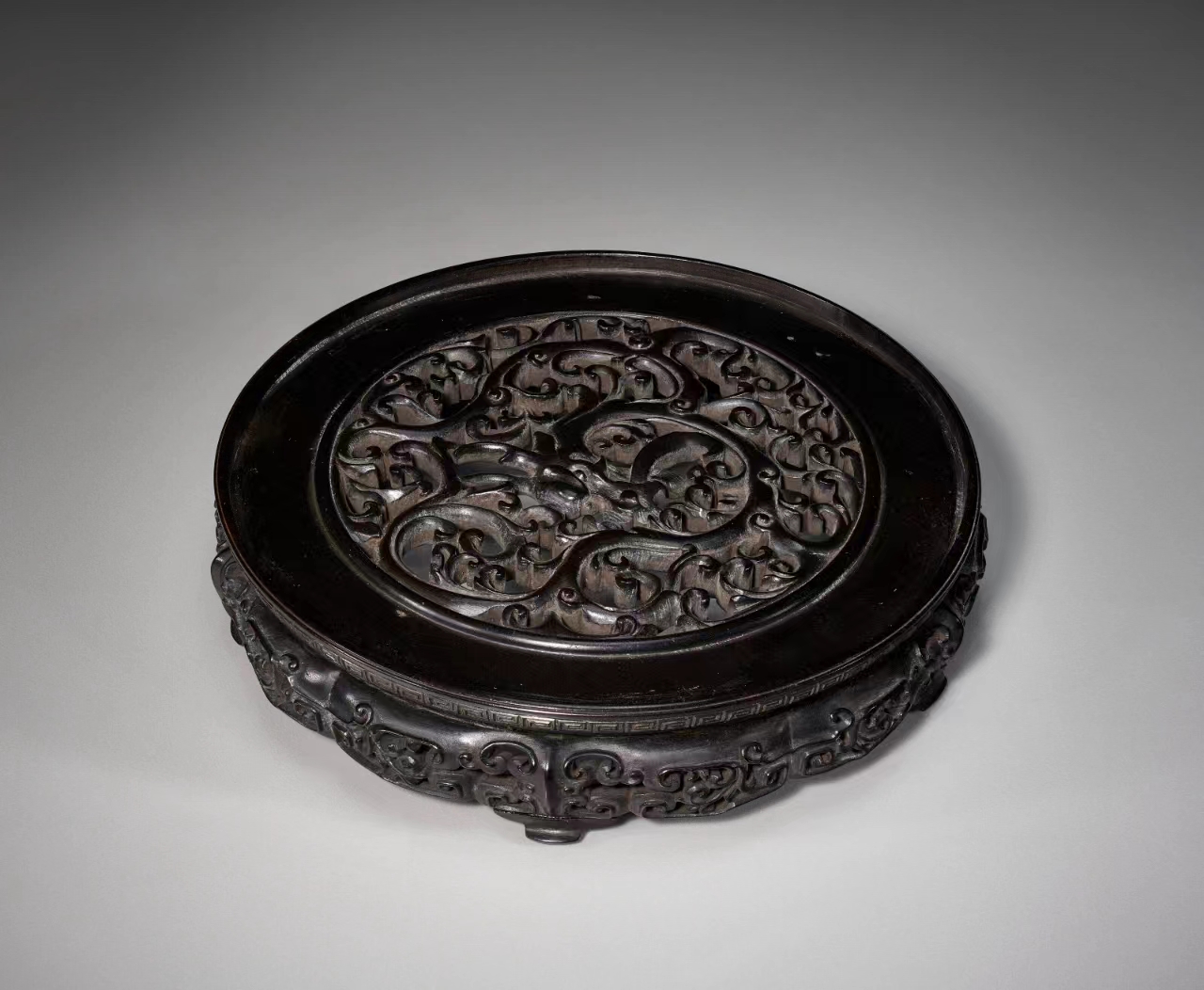
A rather rare form, the Gisaku-fu Bi-Bao pot has an undecorated surface and is as simple as it gets. According to scholar Su Fangshu, when the lid was inverted, it could be used as a goblet, and when the double holes in the handle of the lid, the holes in the tubular handle at the base of the neck, and the double holes in the flared foot ring were aligned, it could also be carried on a string for travelling purposes.
A similar bronze jug decorated with narrow leiwen (thunder pattern) is in the Hakutsuru Museum, Kobe, and a similar bronze vessel decorated with kui dragons is in the National Palace Museum, Taipei. An example of a similar vessel with a bird band around the neck is also illustrated in a Qianlong-period line drawing in the Xiqing xuanjian jiejie (Western Qing dynasty).
▼
Lot 807
西周早期 公元前十一至十世纪 青铜壶
铭文:鬼作父丙宝壶
高 34 cm.
$40,000-60,000
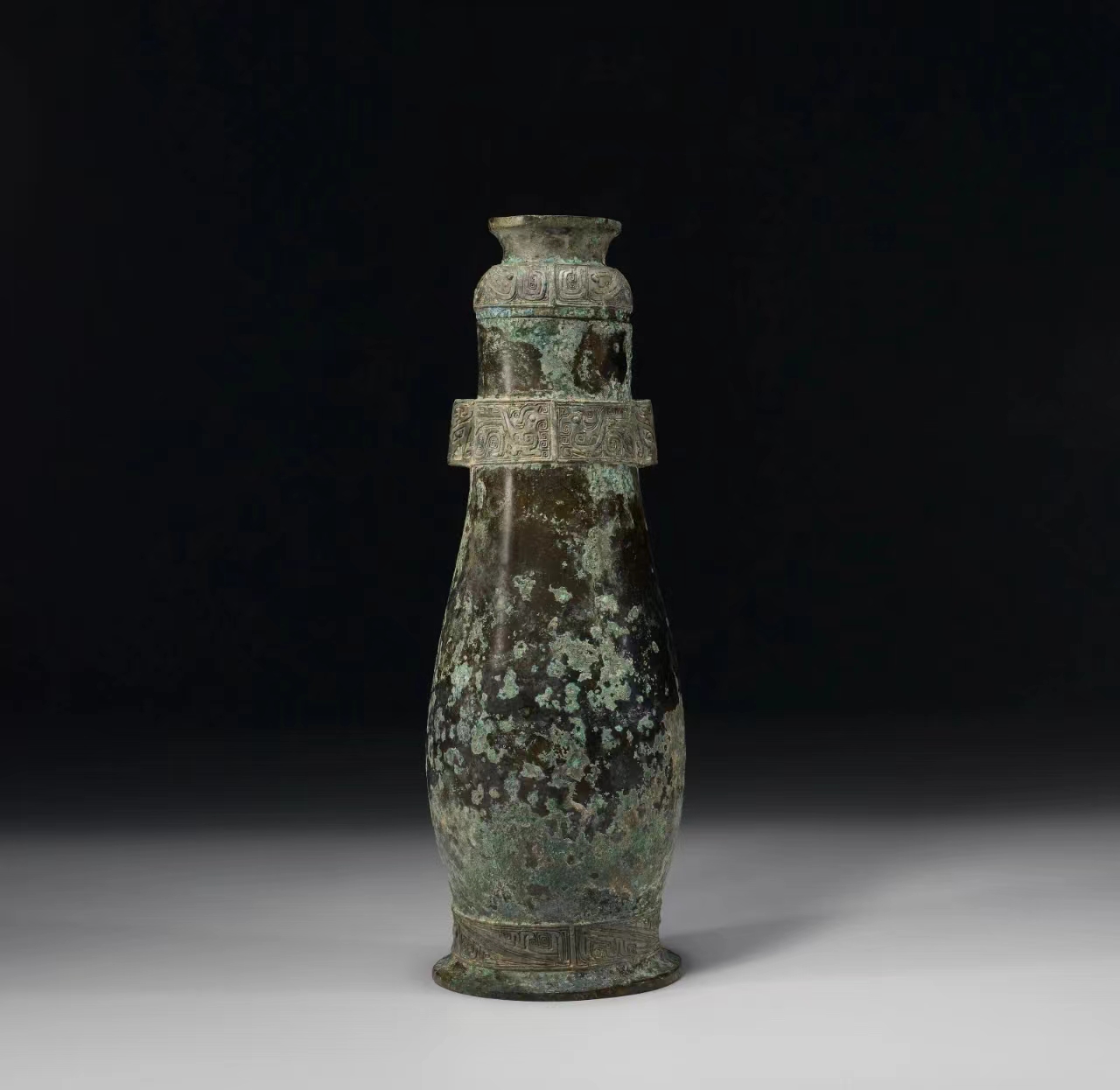
来源:
严一萍,《金文总集》卷八,台北,1983年,编号5698
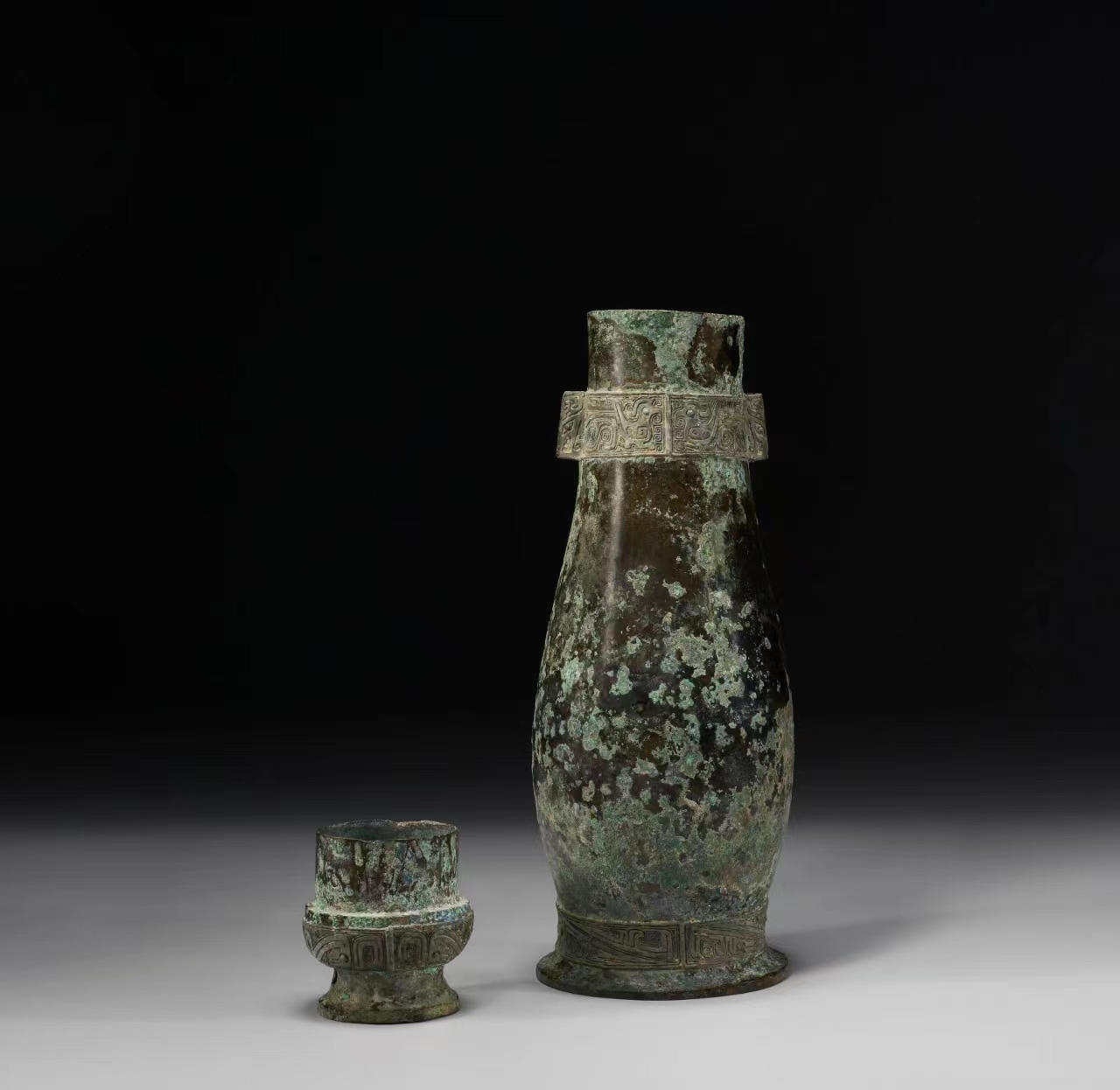
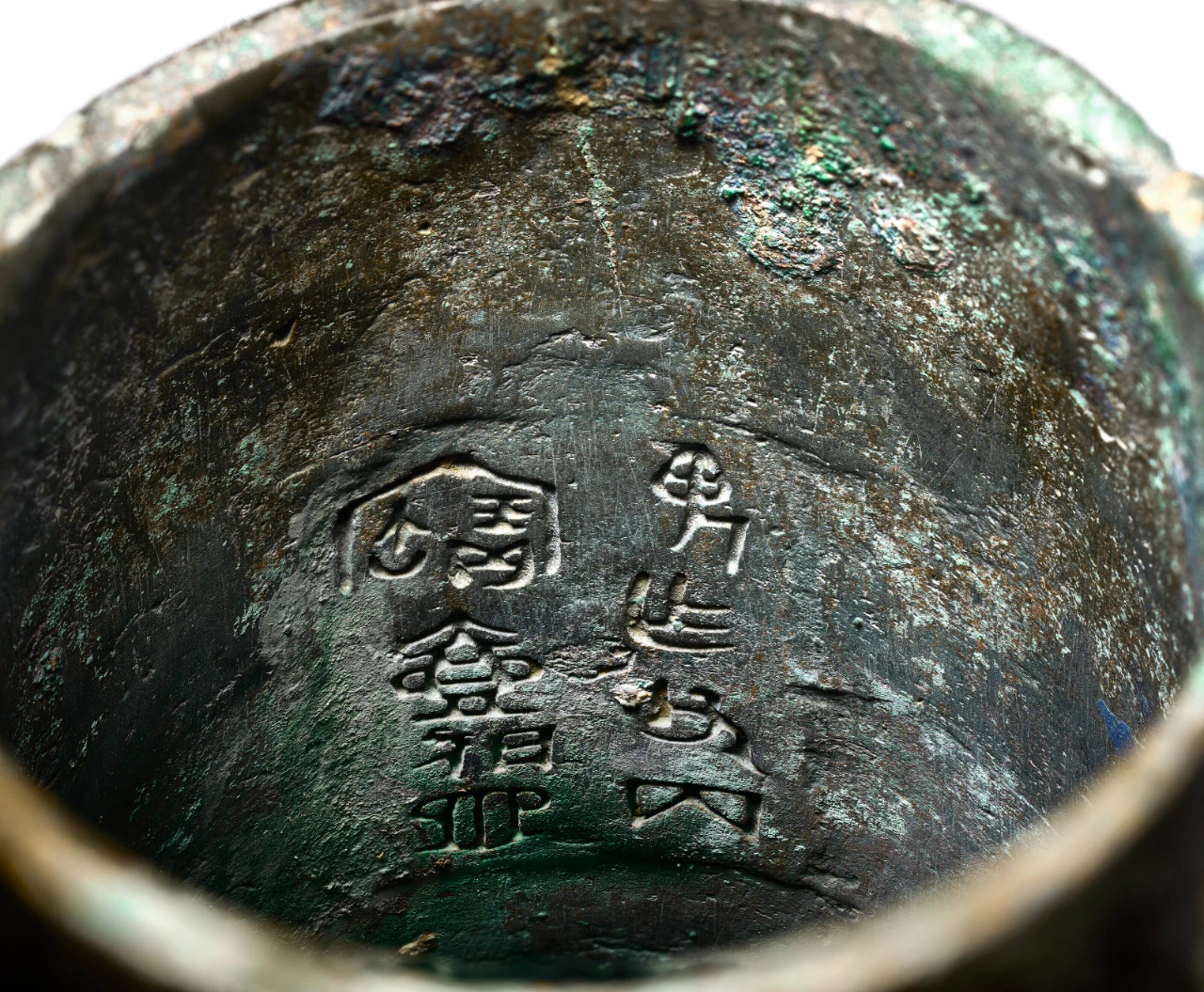
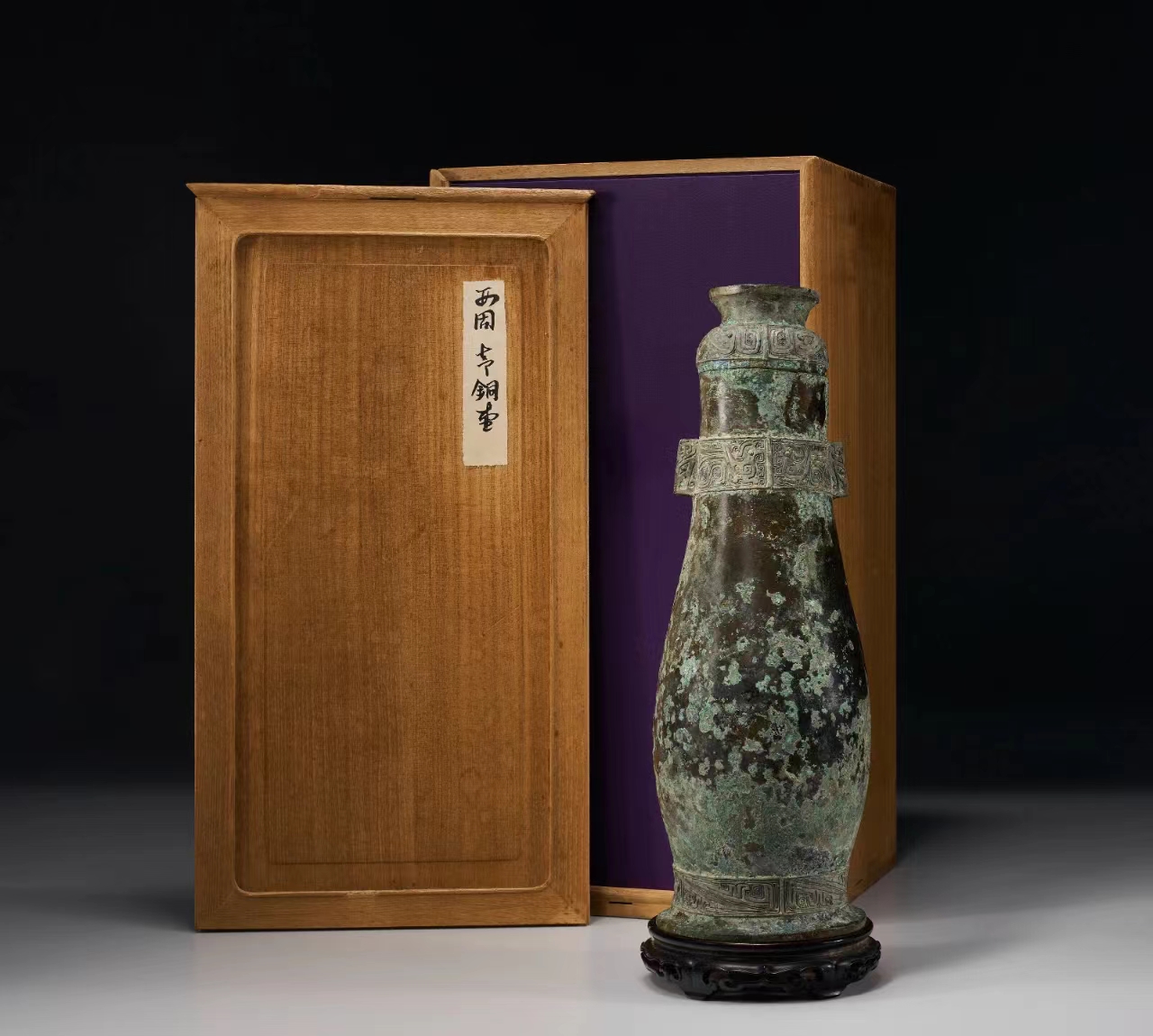
As a ceremonial vessel used for washing, the washbasin was often used together with the dish - the vessel for holding water and pouring water from the top downwards was the washbasin, and the vessel for receiving the discarded water was the dish. The washbasin is nearly oval in cross-section, similar to the current dipper or scooper, with a flow in front and a handle (i.e. handle) at the back. Cast on the flow of animal head statues, like an open mouth, generally to dragons, tigers mostly.
This bronze washbasin with animal heads and chi dragons is a rare example of a washbasin that still retains its original design. Many of the covers have long been lost, as is usually the case in museums. A similar example can be found in the collection of the Palace Museum, Beijing, in Bronzes and Musical Instruments 27: The Complete Collection of the Palace Museum, Beijing (Hong Kong, 2006, pp. 212-13, no. 135); and also in Selected Inscriptions on Shang and Zhou Bronzes, edited by Wu Zhenfeng (Shanghai, 2012, vol. 26, nos. 14933, 14964, 14981 and 14989).
▼
Lot 808
西周晚期/东周早期 公元前八世纪 青铜兽首蟠螭纹匜
铭文:其万年子孙永宝用
宽 38 cm.
$40,000-60,000
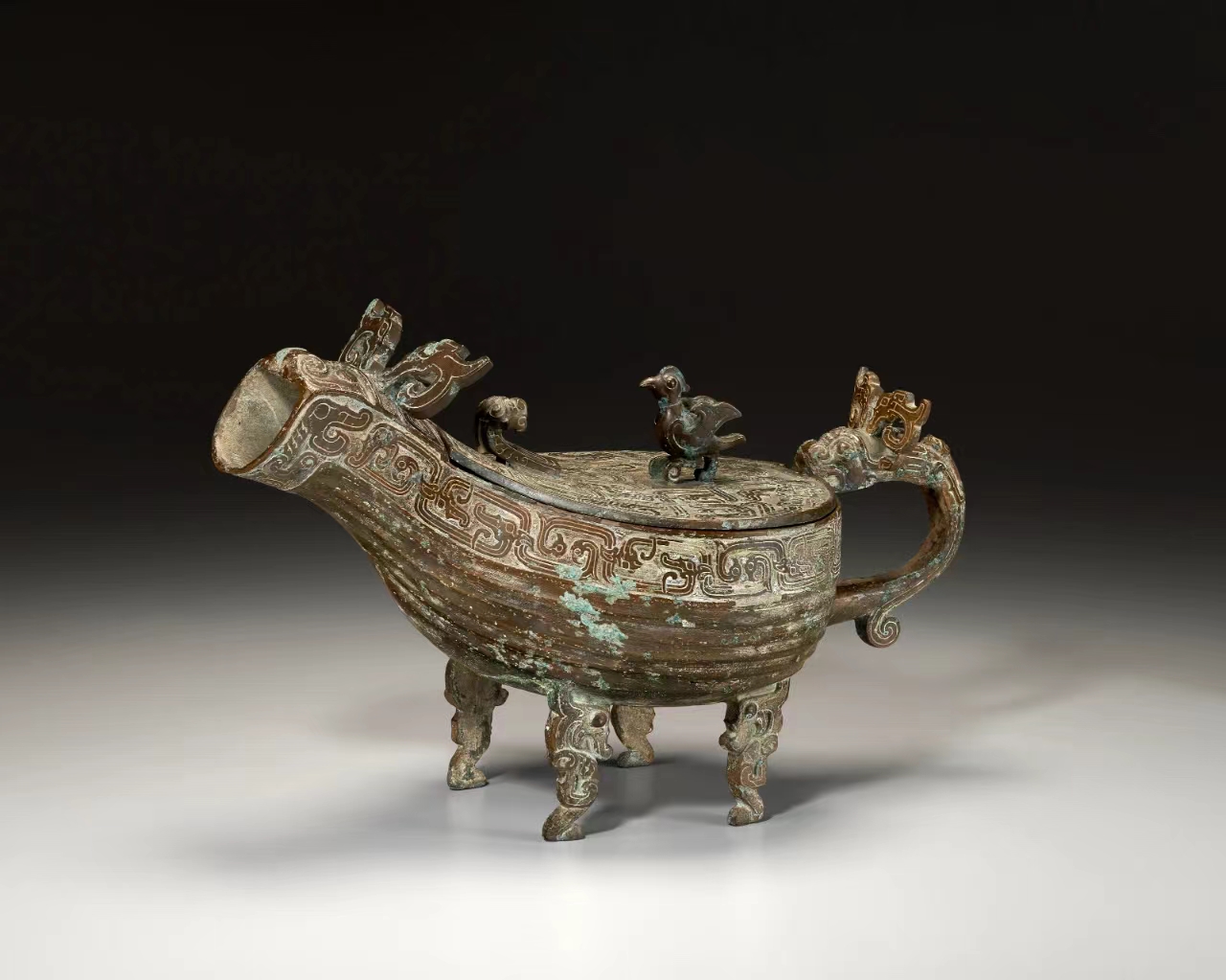
来源:
林巳奈夫,《春秋战国时代青铜器之研究》,卷三,东京,1989年,页166,编号13
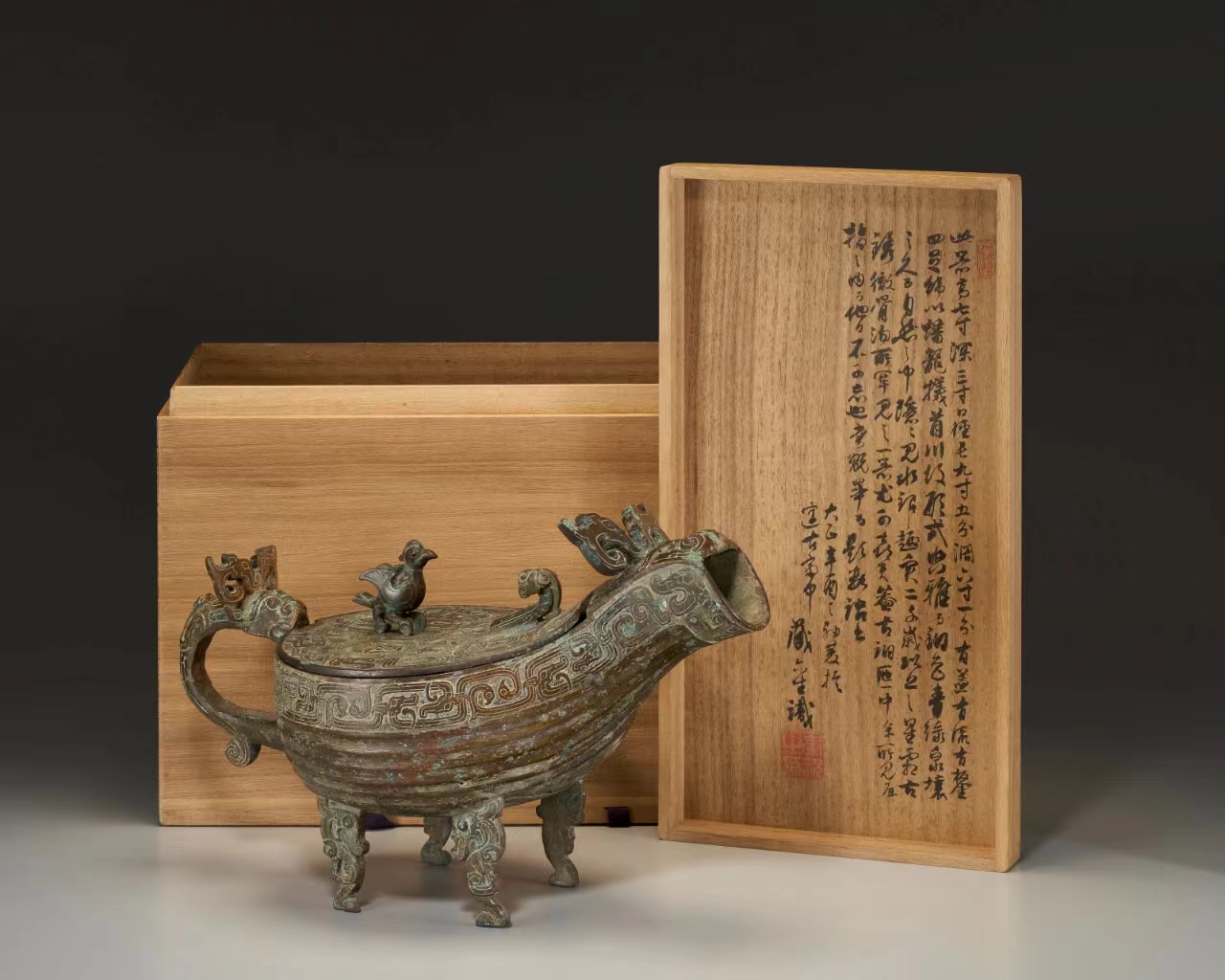
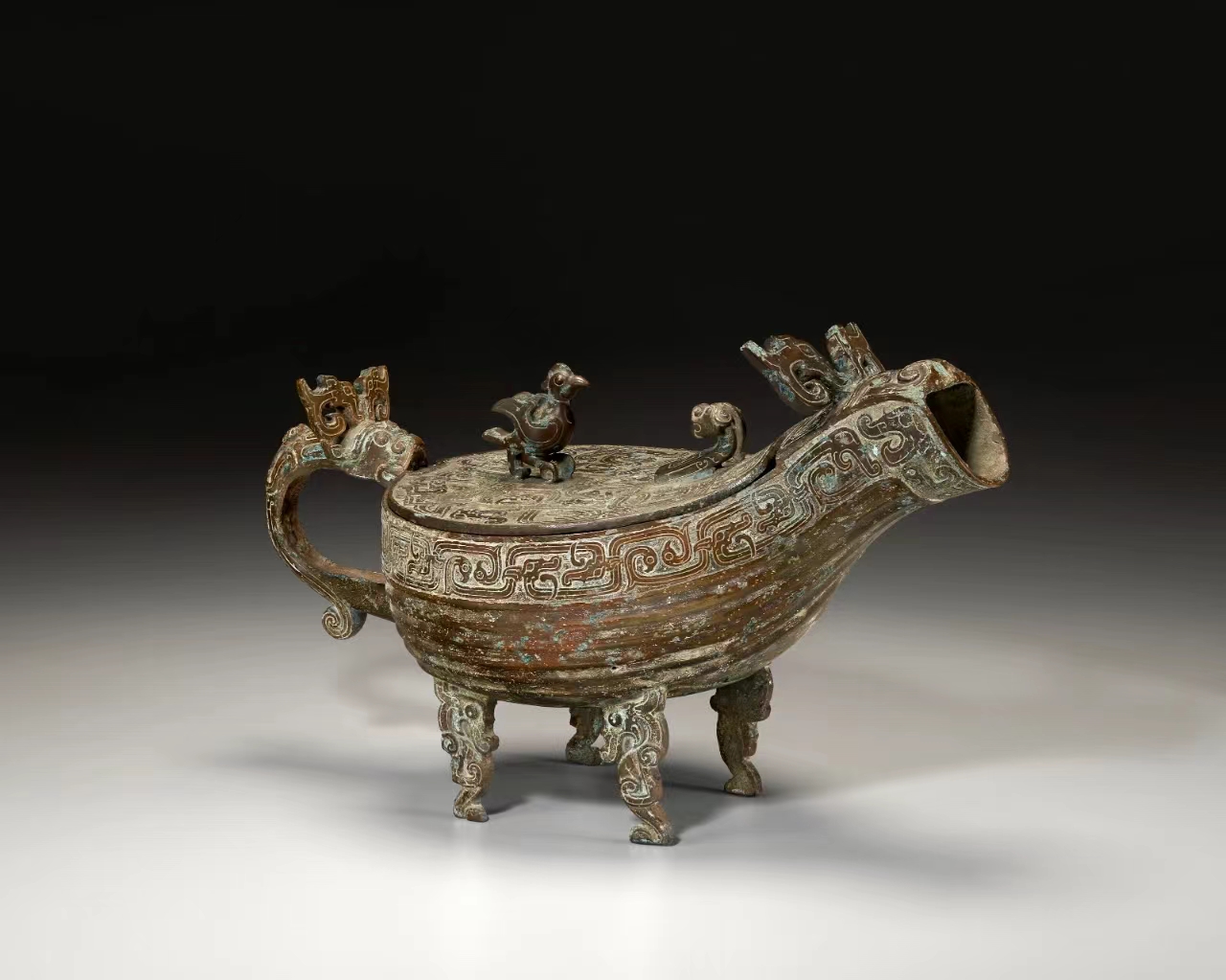
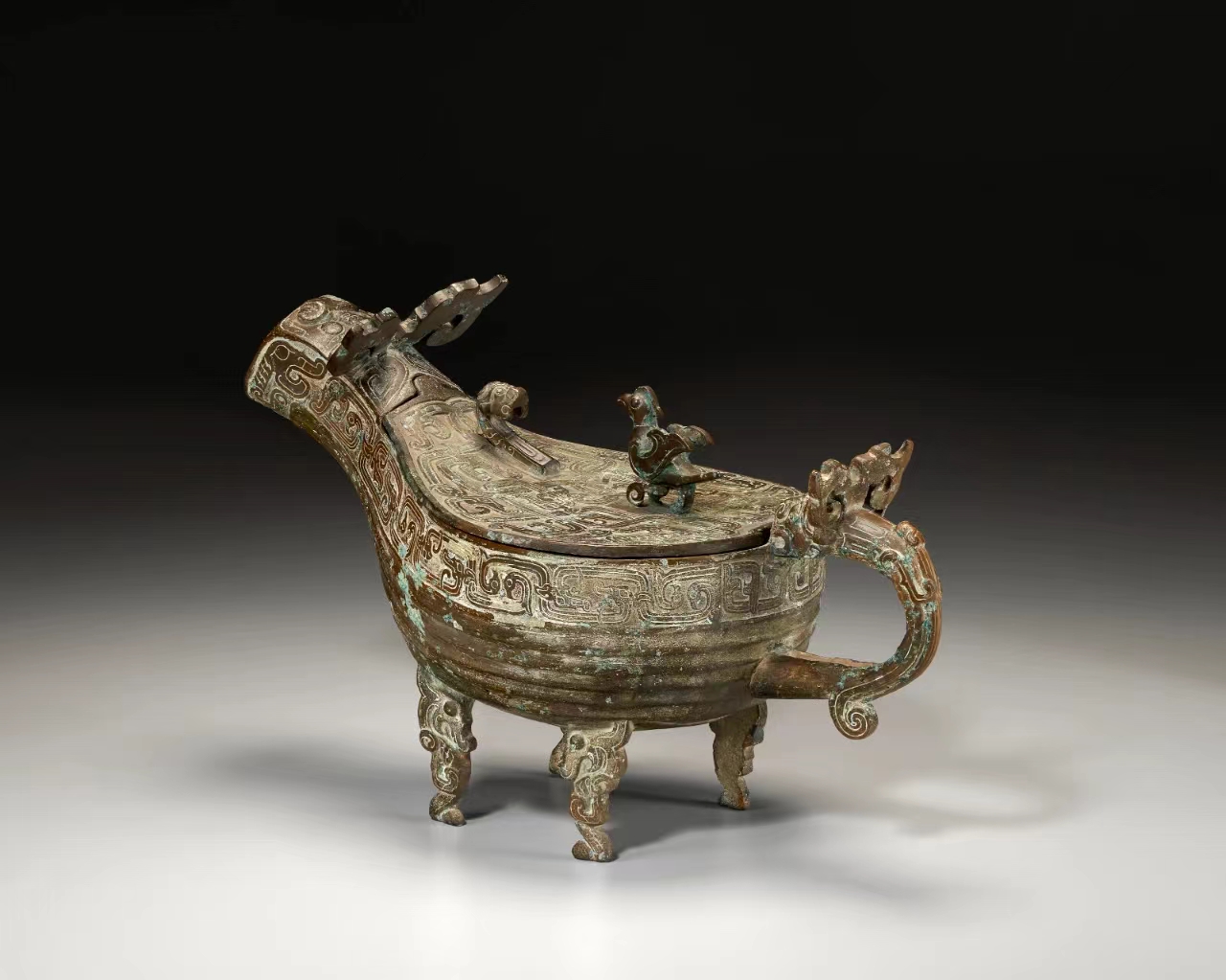
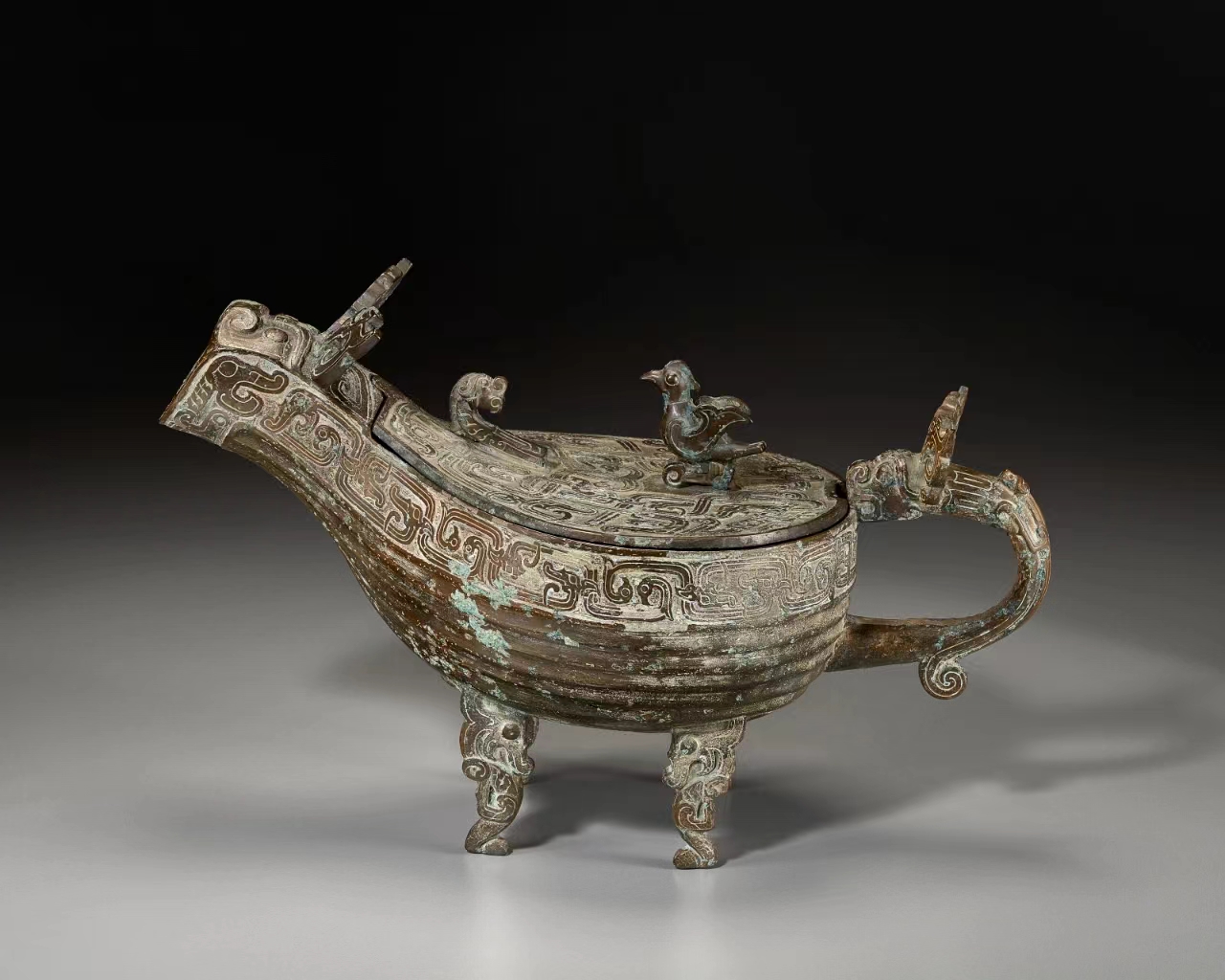
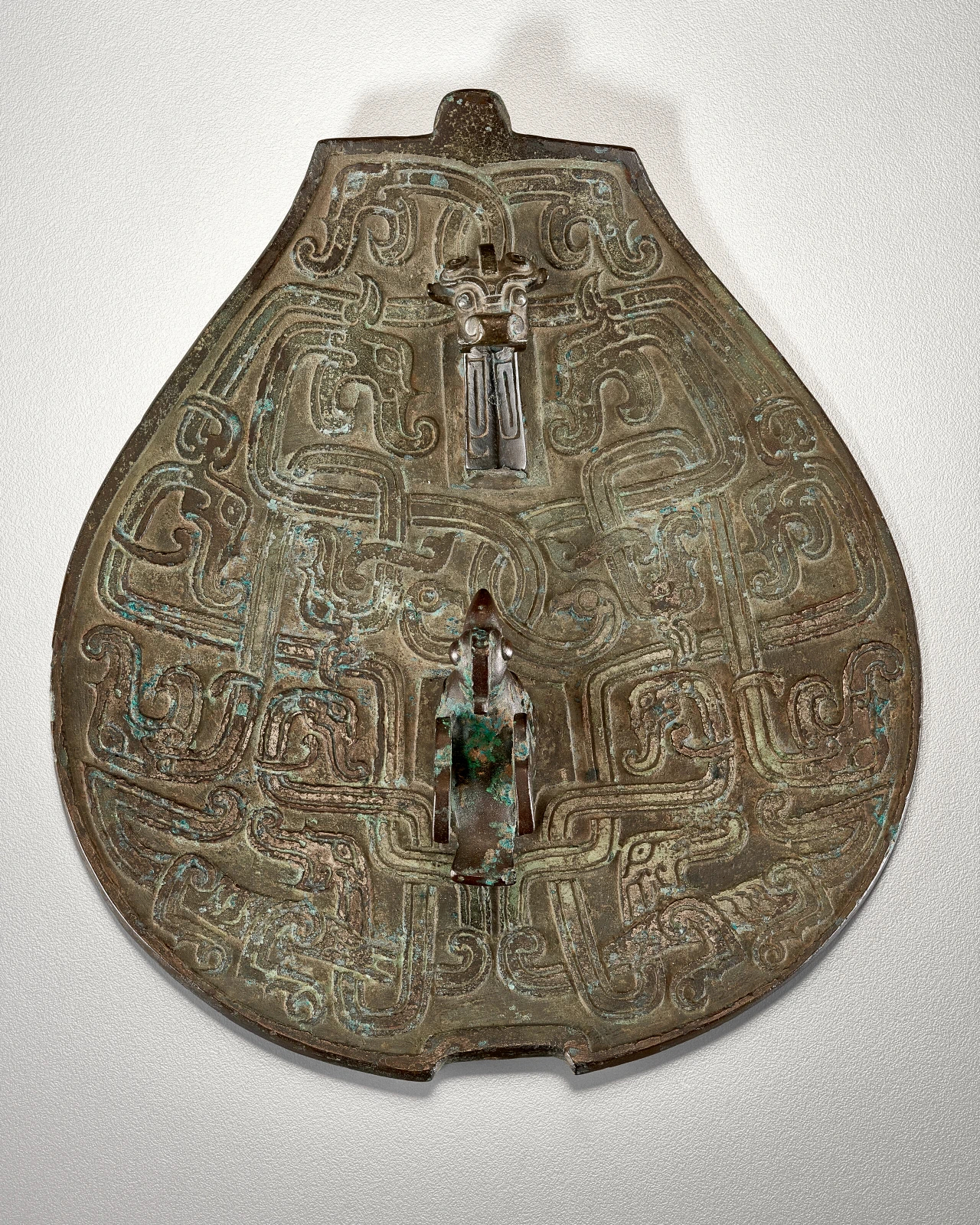
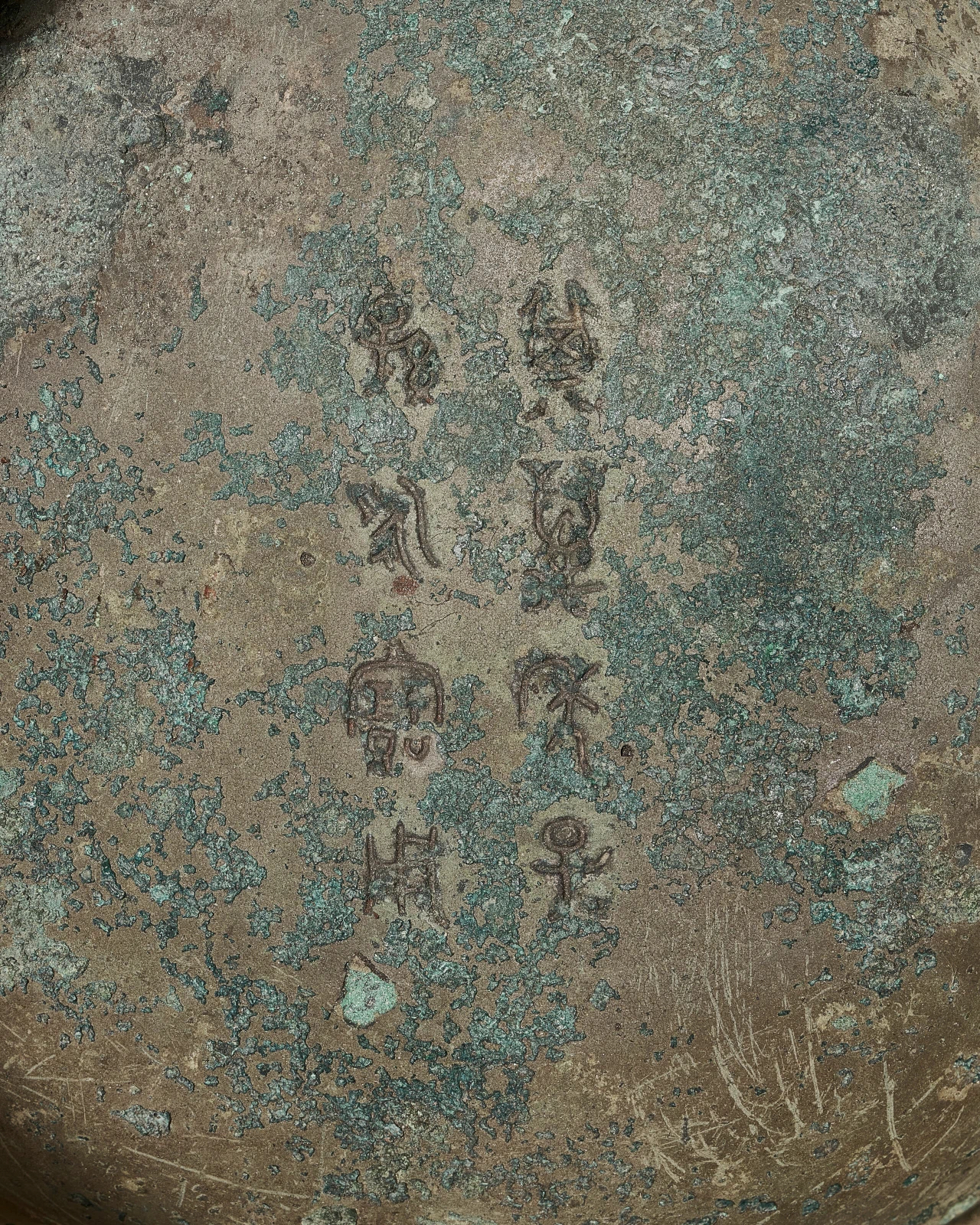
This bronze amphora is also included in the Qin Collection.
The ‘hundred pots of clear wine’ contained in the Classic of Poetry appeared in the early Shang dynasty, and these bronze pots were also important bronze ceremonial vessels for serving wine. This bronze amphora, with its full belly and slightly open mouth, is a heavy and robust vessel, with two ears at the neck, each decorated with the head of an animal. The body of the pot is decorated with a three-part ring, with the upper segment of the decoration located on the neck of the pot, symmetrically distributed for an orderly and rich visual effect.
A bronze pot of similar proportions can be found in Bronzes of the Zeng State (Beijing, 2007, pp. 100-1), where the lower part of the Zeng pot is decorated with a similar coiled chi dragon motif, but, unlike this example, there is no decoration above the shoulders of the pot; similar coiled chi dragon motifs can be found on earthenware pots from the early Spring and Autumn period.
▼
Lot 810
东周早期/春秋早期 公元前八世纪 青铜双耳壶
高 28 cm.
$80,000-120,000
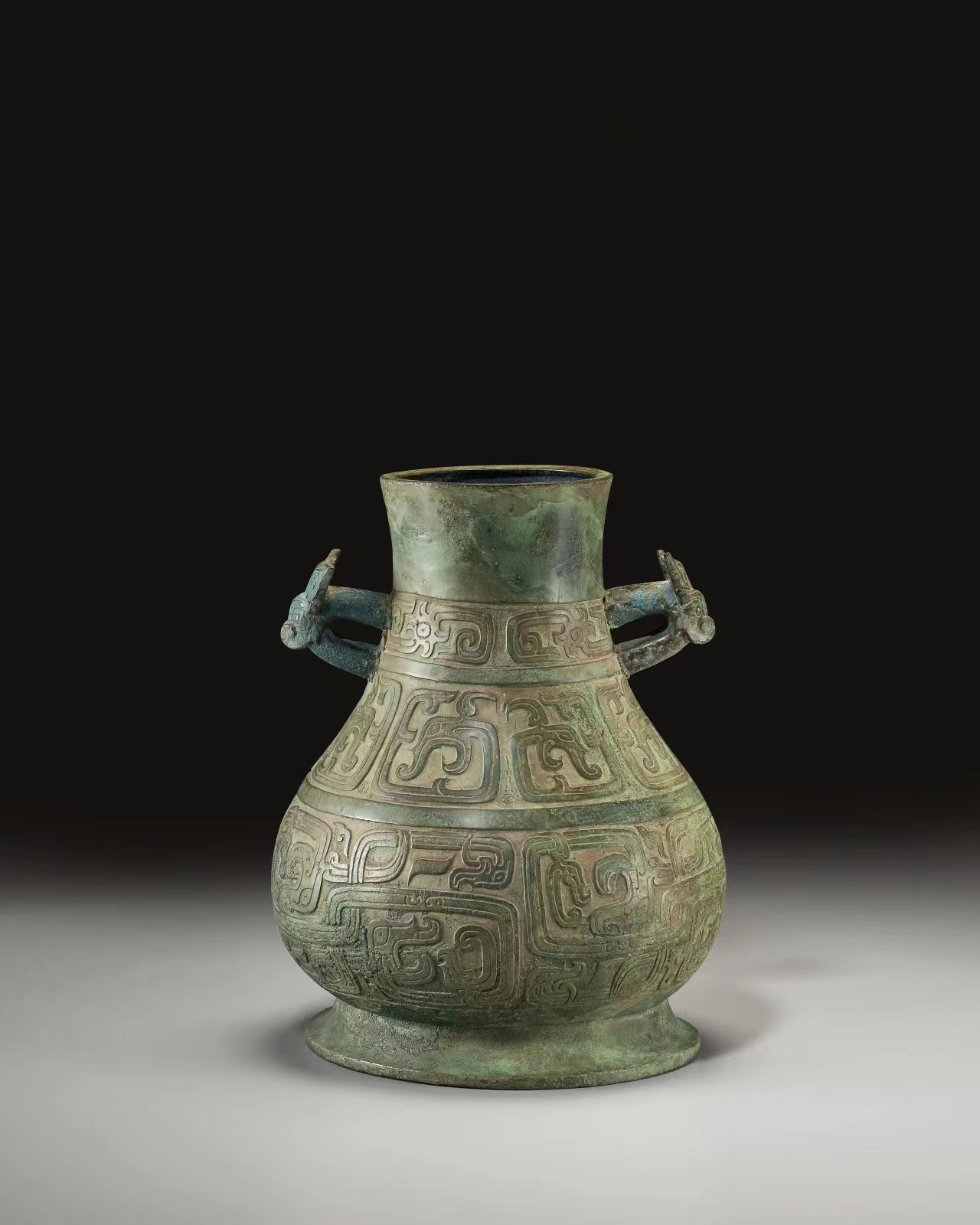
来源:
秦峰男珍藏,神户,日本
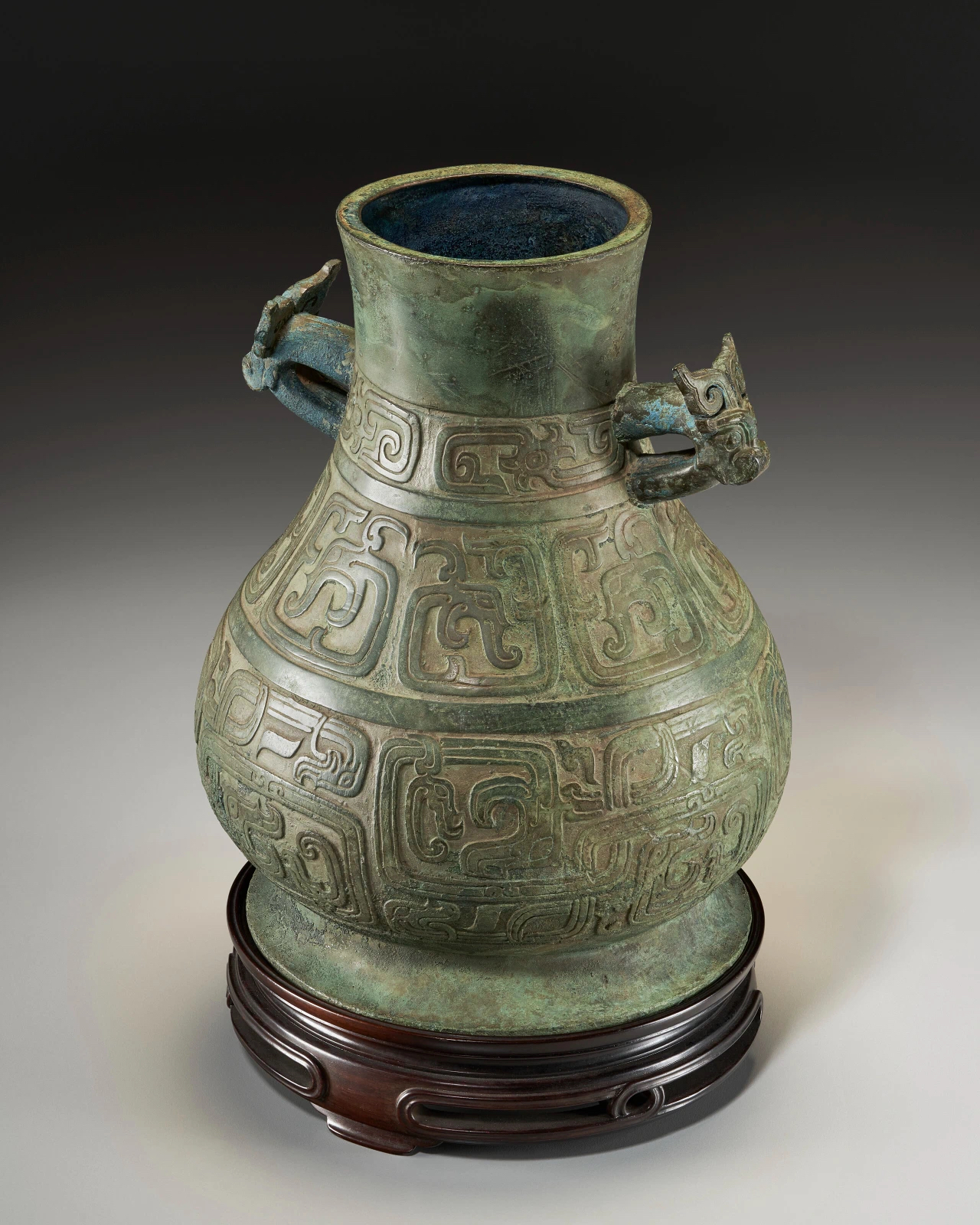
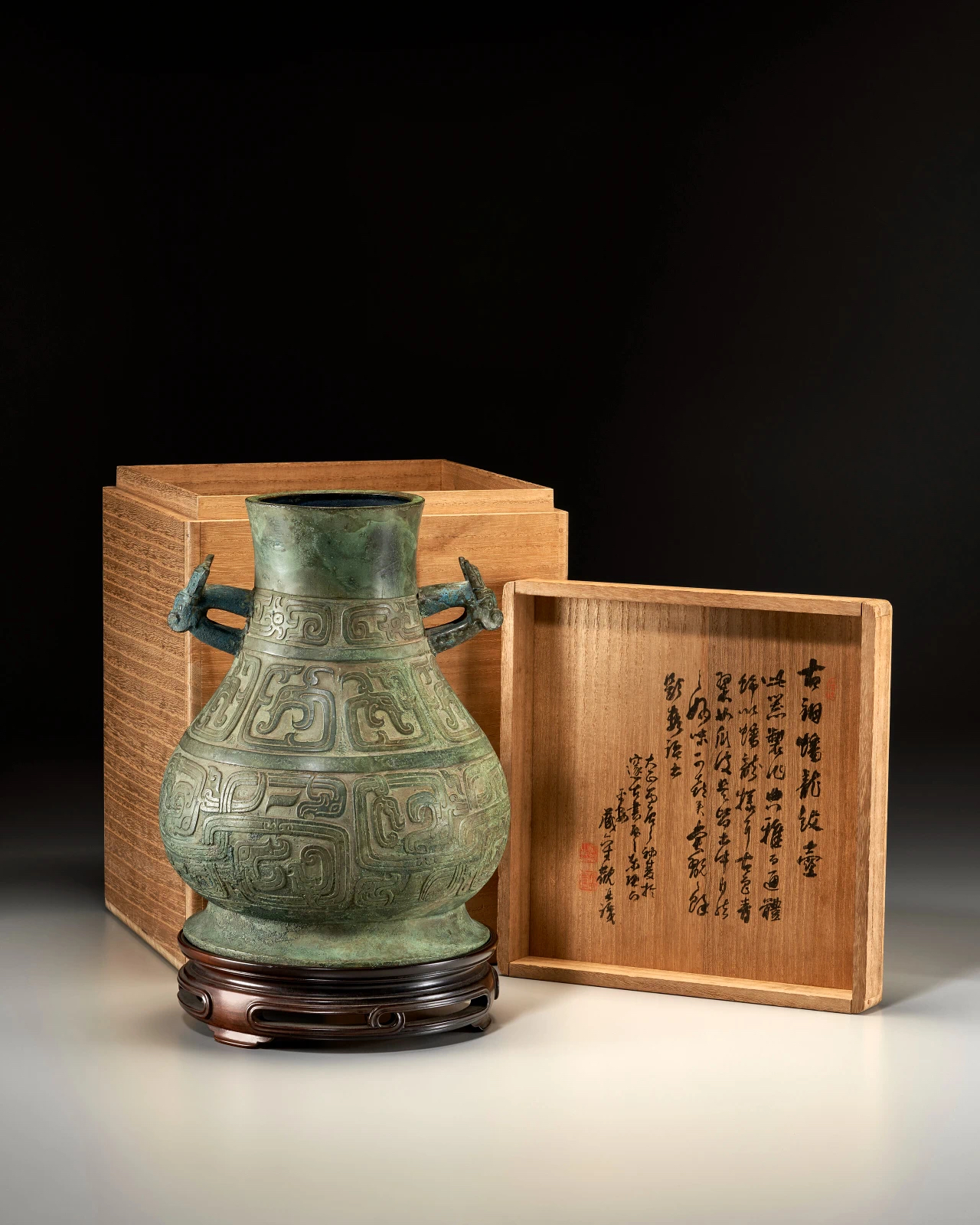
2.
In 1936, the then U.S. Olympic Committee Avery Brundage (Avery Brundage), when passing through the United Kingdom visited the London International Exhibition of Chinese Art. Shocked, the sports figure took the road of collection - about 60 pieces of artefacts in the exhibition were included in Brundage's collection.
Driven by his passion for collecting, Brundage collected a large number of Asian artefacts, especially objects and sculptures, which led him to consider finding a suitable depository. It was the Society for Asian Art in San Francisco that pushed him to settle on a place for his collection.
At the time, George Frederick ‘Fritz’ Jewett, Jr. from an American lumber family was elected president of the San Francisco Arts Commission, and he and his wife, Lucy McIntire, were the first to be elected. his wife, Lucy McIntyre Jewett, were dedicated to fighting relentlessly to secure the Brundage Collection for San Francisco.
The two entertained politicians and celebrities at their mansion on numerous occasions to push for the admission of the Brundage Collection. After Mr and Mrs Chu Weide through the needle, eventually, the first batch of about 4,500 pieces, the second batch of about 3,200 pieces, a huge collection finally found a suitable depository, into the Dion Memorial Museum - that is, today's San Francisco Asian Art Museum. The Chinese bronze rhinoceros zun, now the San Francisco Asian Art Museum's ‘treasure of the museum’.
This feat has also made Mr and Mrs Wade Chu famous in the world of collectors. Together for more than half a century, they have been devoted to art and charity. The pair of fine white jade snuff bottles in this sale was a gift from Brundage to Mr and Mrs Jouveldt, highlighting the collector's great contribution to San Francisco.
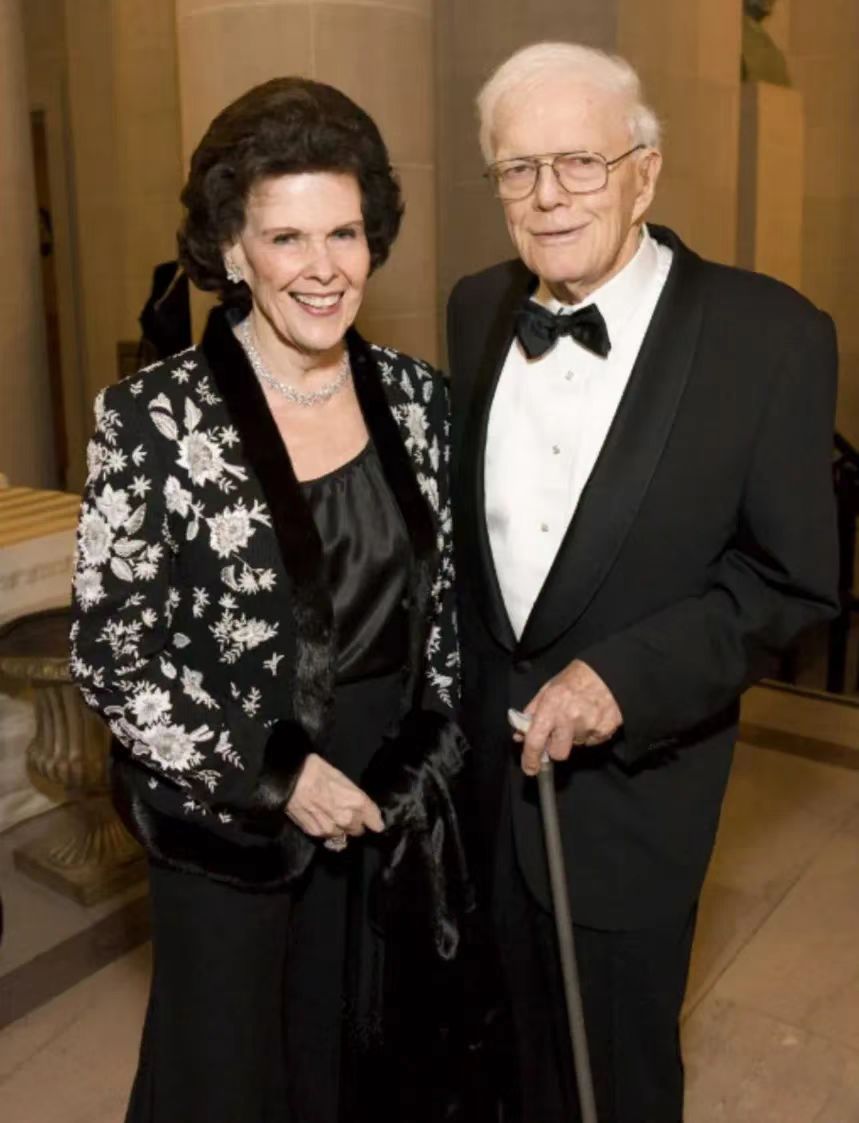
Exquisiteness is the experience of the Mr and Mrs Wade Chu Collection - the
Whether it is jade or porcelain, the eternal pursuit of beauty and goodness is what Mr and Mrs Wade Zhu have always insisted on.
In this exhibition, a white jade conch is a favourite.
Dharma conch, known as the Tibetan language ‘DongGaYeQi’, is regarded as one of the eight treasures of Buddhism. Metaphorically speaking, it is a rare and pure example of the Buddha's voice and the dissemination of Buddhist teachings. The Dharma snail was also popular in the Qing Dynasty, when Tibetan Buddhism was the main belief of the royal family.
This piece can be compared to the large jade conch that appeared in the Shorenstein Collection at Christie's Hong Kong in December 2010, except that it is also inscribed with the eight auspicious characters for longevity and good fortune.
▼
Lot 903
清乾隆 白玉海螺
长 16.2 cm.
$20,000-30,000

来源:
Gump's,旧金山,1983年前
出版:
M. A. Clark, 《Jade & Other Arts: The Collection of Mr. & Mrs. George F.Jewett,Jr.》,旧金山,1983年
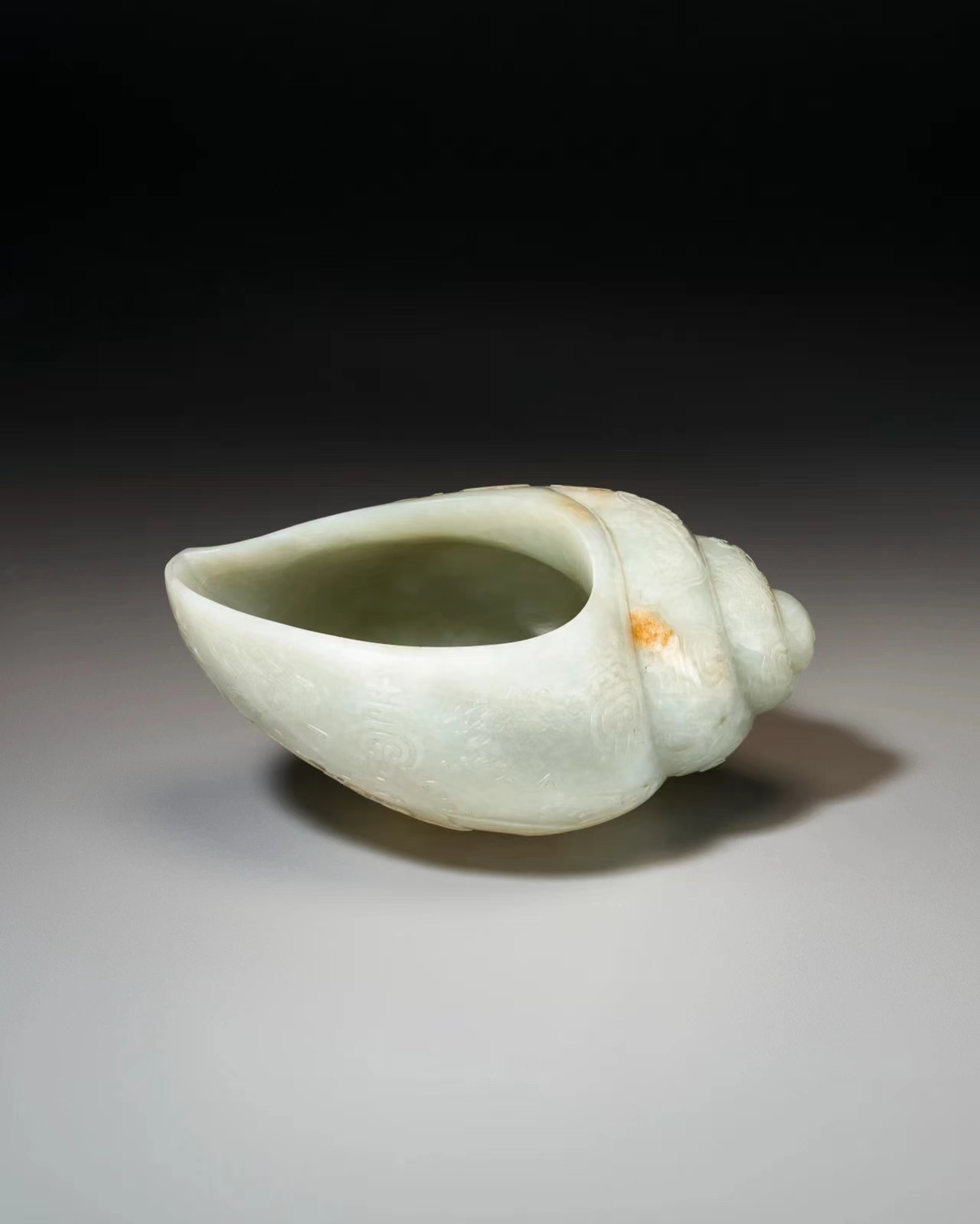
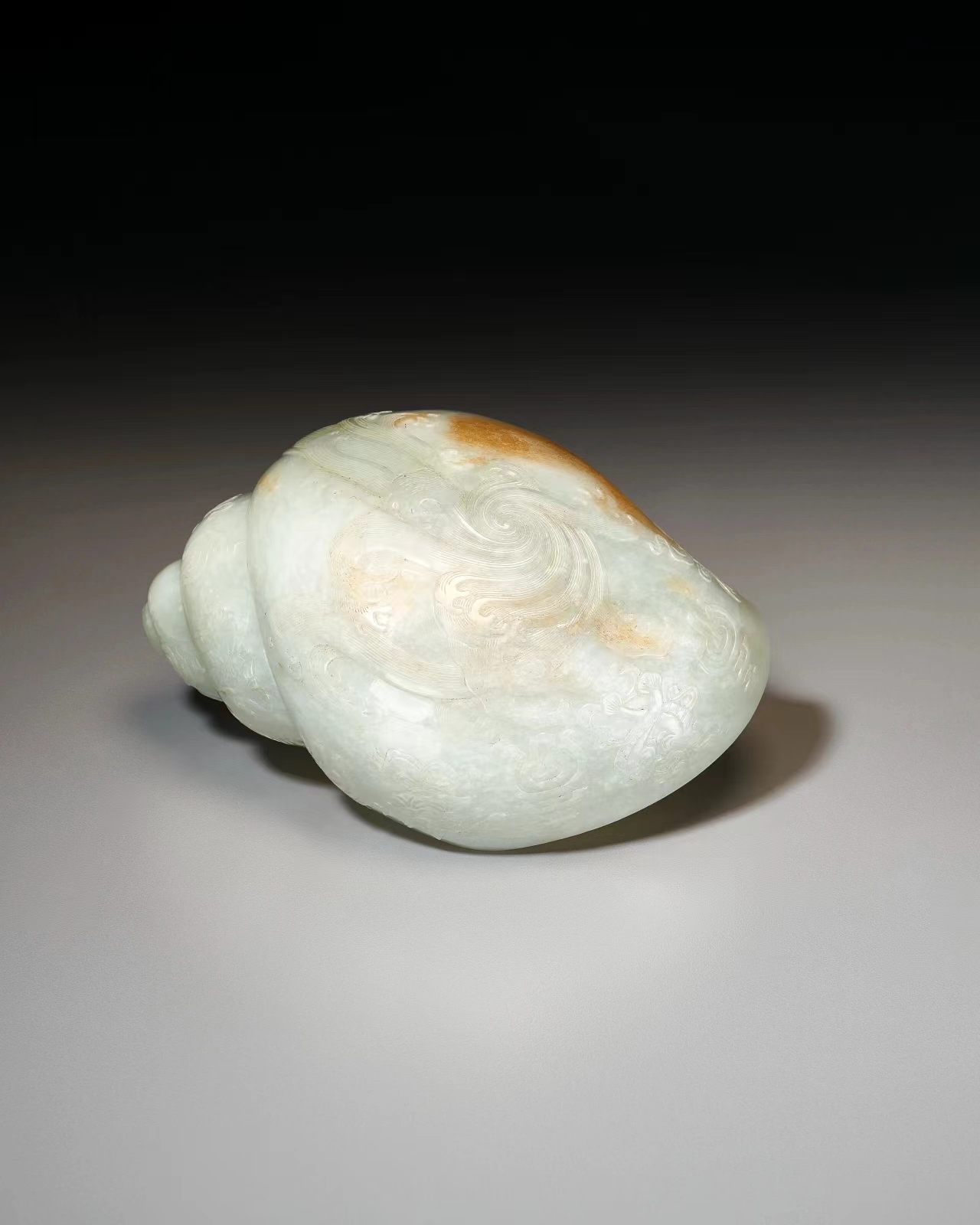
This 23.6 cm high green and white jade carving screen, also contains the same auspicious symbolism, the picture is carefully carved by the lucky life auspicious celebration picture - one side of the carving of the figure holding the ten thousand years of youth, in order to pray for longevity; attendant is holding a halberd, halberd on the suspension of the bell, composed of ‘auspicious celebration ’; in addition, there are sycamore, pine trees, lingzhi, etc., meaning good luck and longevity. On the back of the screen, deer and ‘Luk’ harmony, cypress and ‘hundred’ homophonic, further presenting the good wishes of this screen.
▼
Lot 904
清十八/十九世纪 青白玉雕福寿吉庆图插屏
高 23.6 cm.
$70,000-90,000
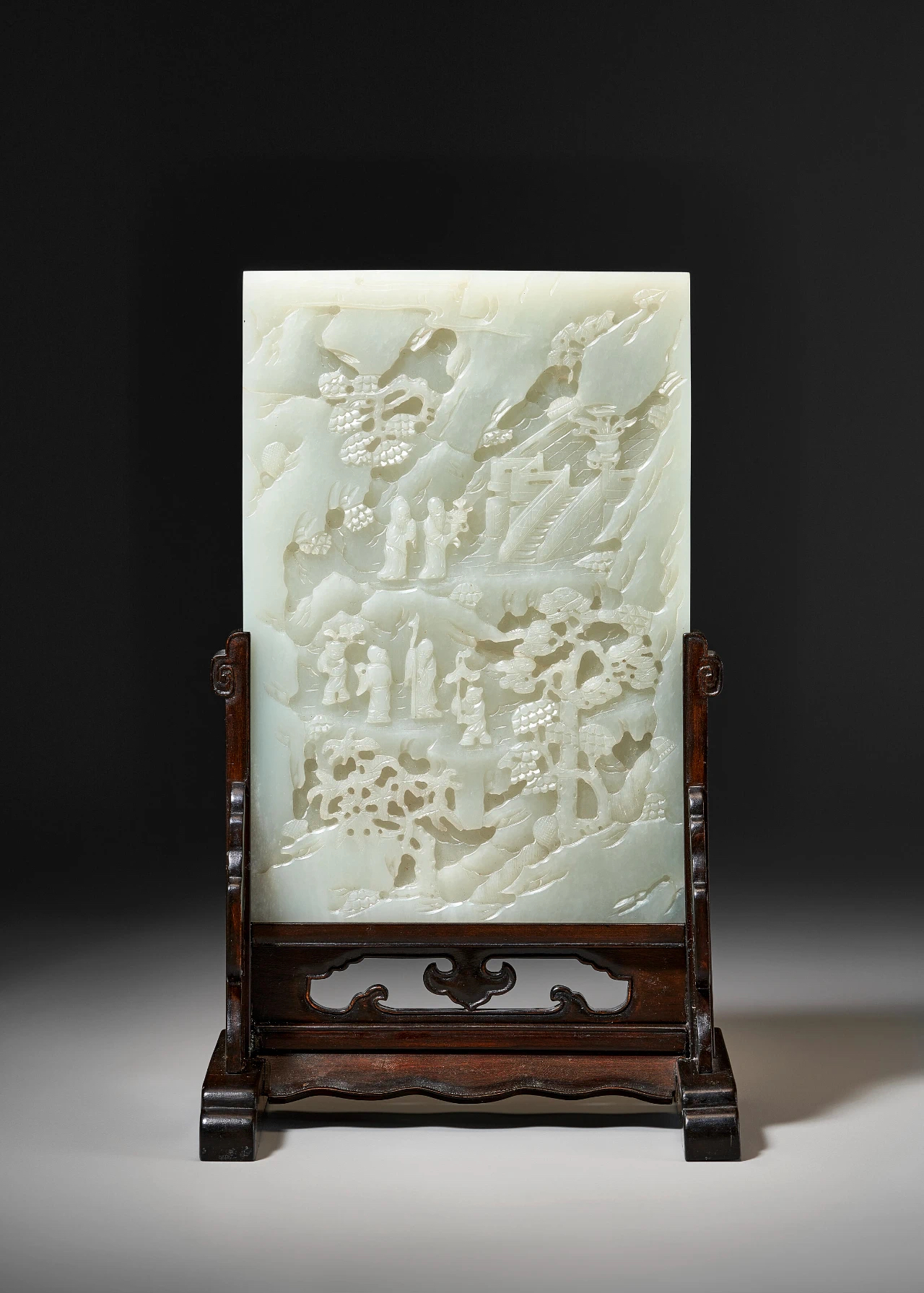
来源:
M. A. Clark, 《Jade & Other Arts: The Collection of Mr. & Mrs. George F.Jewett,Jr.》,旧金山,1983年
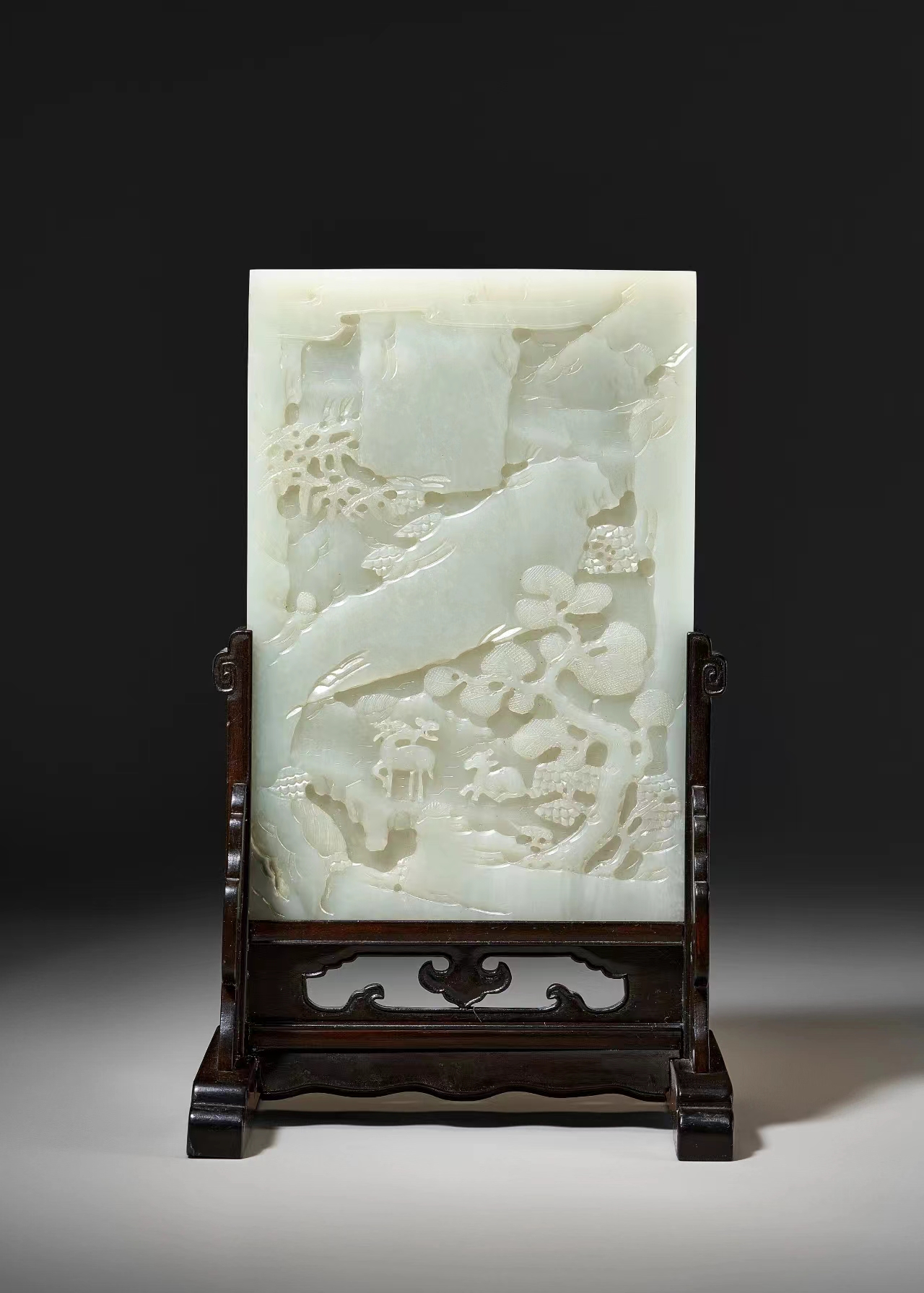
This grey celadon jade carving of a scholar in a boat is a good thing to play with on the desk. Look carefully, the boat characters are all vivid - the right side of the two high priests are talking cordially, the left side of the one is listening to the side of the rowing children, is struggling to shake the yawl, pushing the boat forward.
▼
Lot 906
清十八世纪 灰青玉雕高士乘舟摆件
长 11.8 cm.
$6,000-8,000
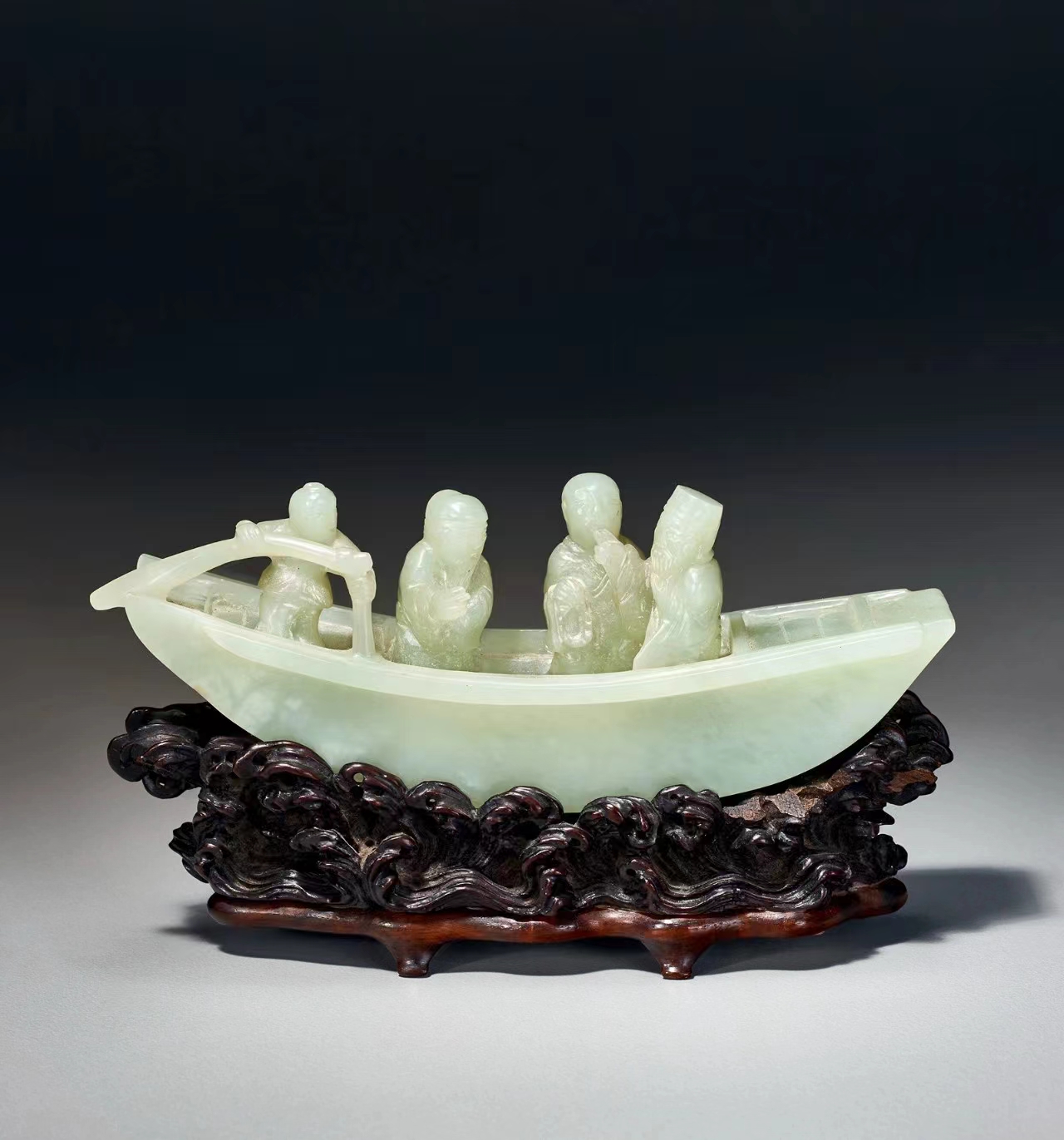
出版:
M. A. Clark, 《Jade & Other Arts: The Collection of Mr. & Mrs. George F.Jewett,Jr.》,旧金山,1983年
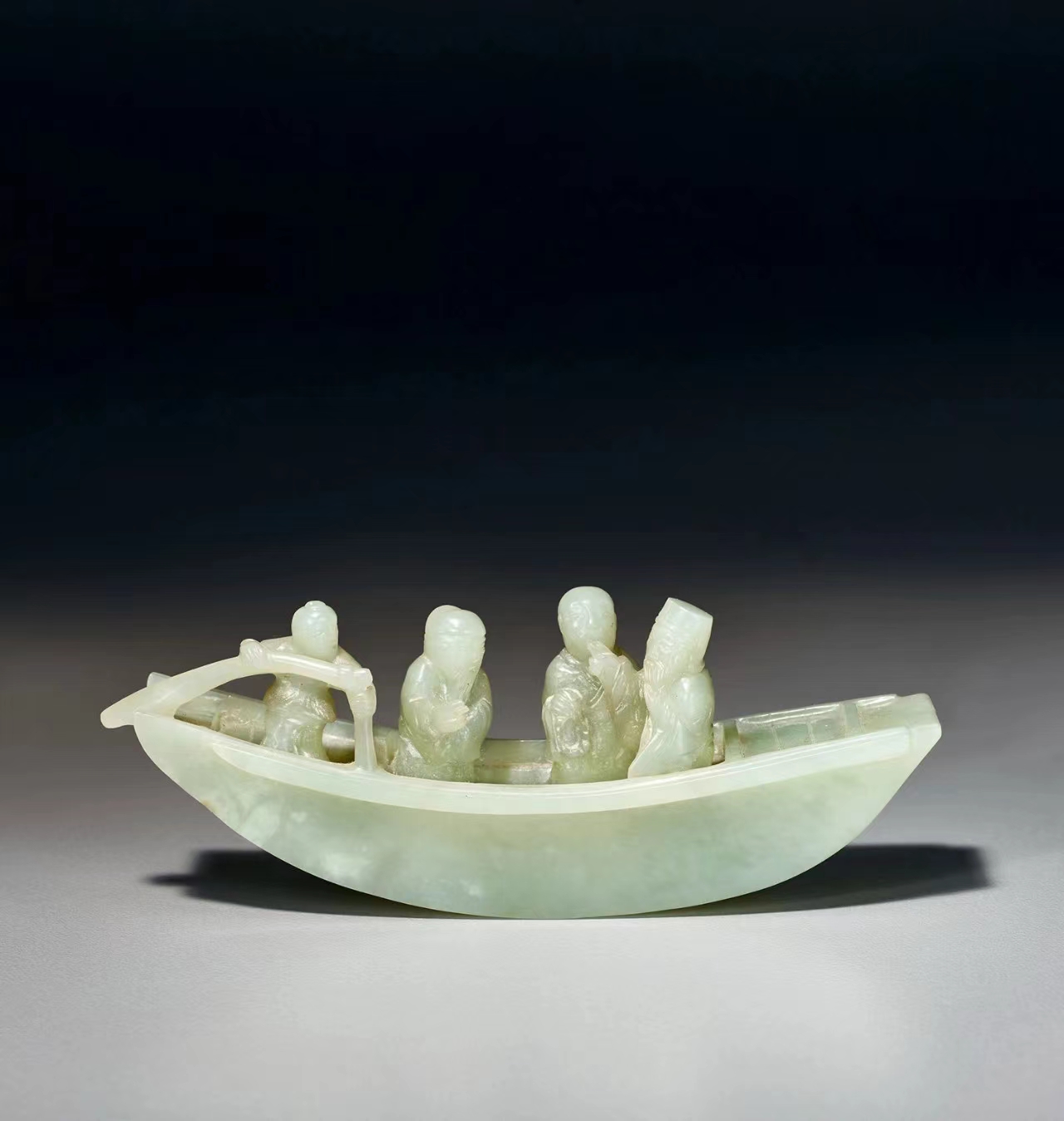
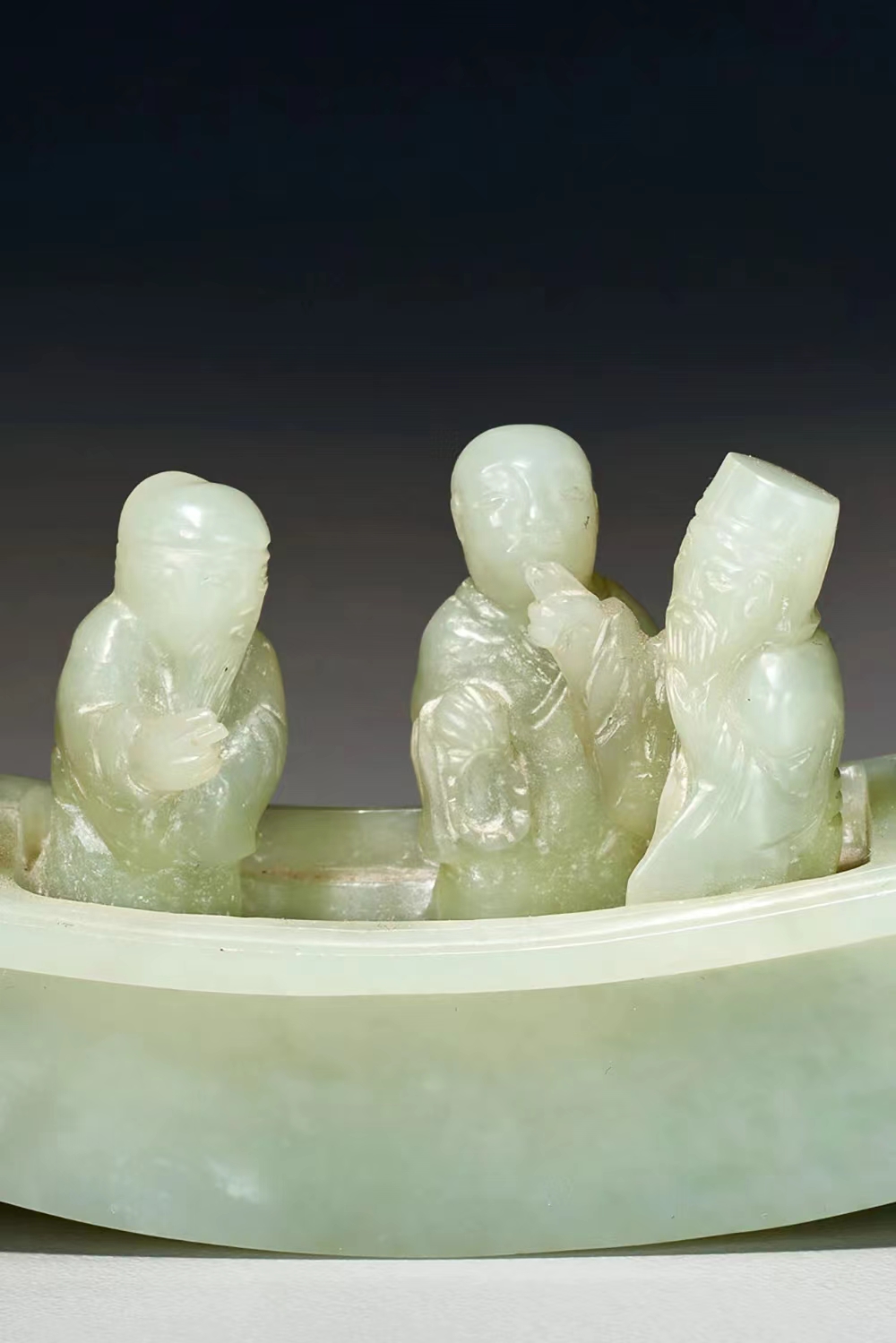
In the porcelain section of the collection of Mr and Mrs Wade Zhu, we are pleased to present an extraordinary Yuan/Ming Jun kiln blue-glazed three-legged wash.
The charm of the kiln is in its wonderful glaze, the lustre and the sense of blending with the water, which is evident in this lot. This three-legged wash belongs to a group of flowerpot wares, complete with daffodil bowl, flowerpot and stand.
This piece is marked with a ‘yi’ mark, which was a special mark for the kilns - each vessel was also made in the same style and in different sizes, with a number in Chinese characters from one to ten inscribed on the bottom of the vessel to mark the size of the vessel, with the smaller the number the larger the vessel. Recent research by Chinese scholars tends to support the idea that numbered kiln wares date to the Yuan or early Ming dynasty, between the late 14th and early 15th centuries.
It is noteworthy that before the Ming dynasty, there seems to be no mention of Jun wares in the literature, but they are mentioned with increasing frequency in the late Ming period. And even more interesting is the comparison with other kiln porcelains, including those from Jingdezhen, where these well-made, numbered Jun wares may have been imperial in the early Ming period. The bases of some of these Jun kiln flower wares are inscribed with glazed inscriptions in addition to the numbers, indicating where they were used in the Qing court.
▼
Lot 1048
元/明 十四至十五世纪 钧窑蓝釉三足洗
“一”字款
直径 25.5 cm.
$300,000-500,000
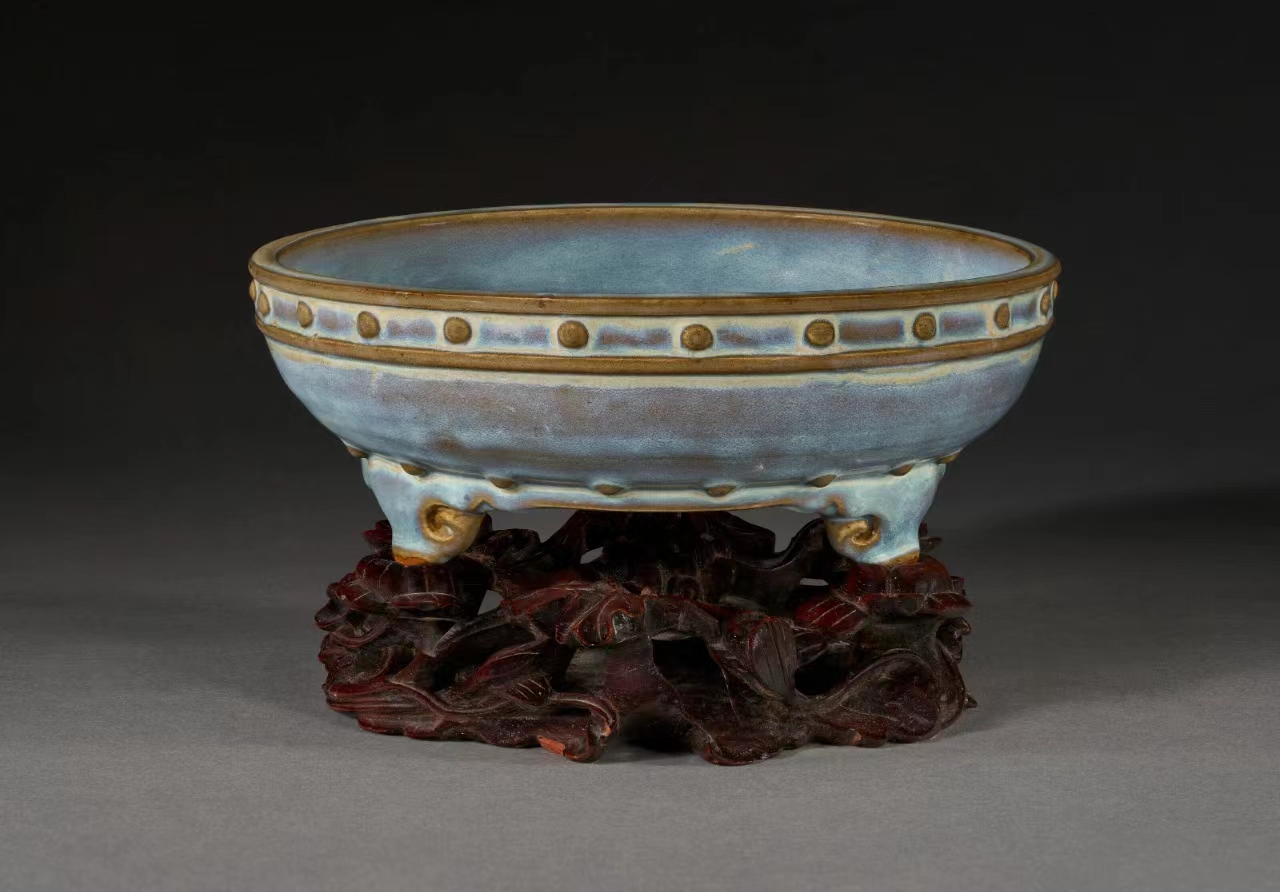
来源:
M. A. Clark, 《Jade & Other Arts: The Collection of Mr. & Mrs. George F.Jewett,Jr.》,旧金山,1983年
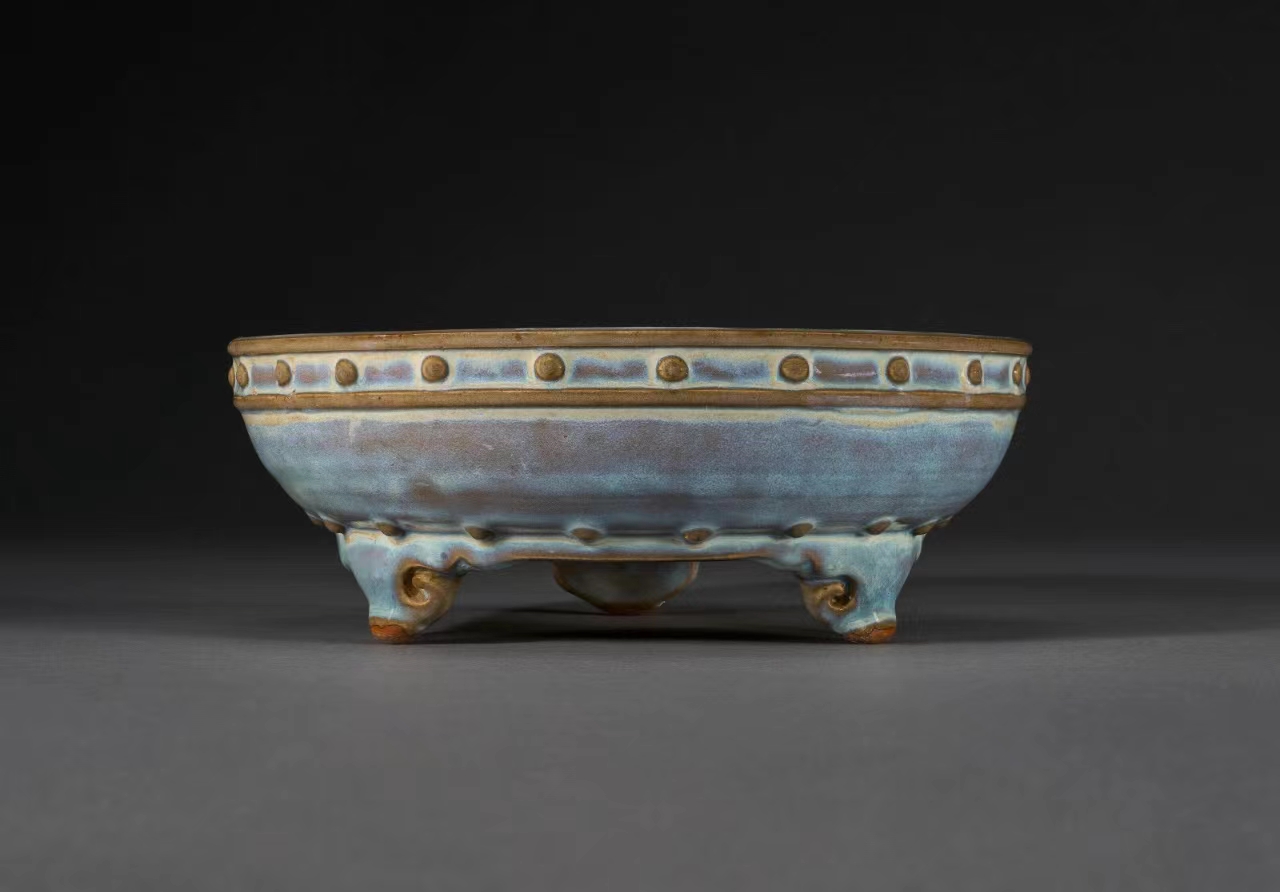
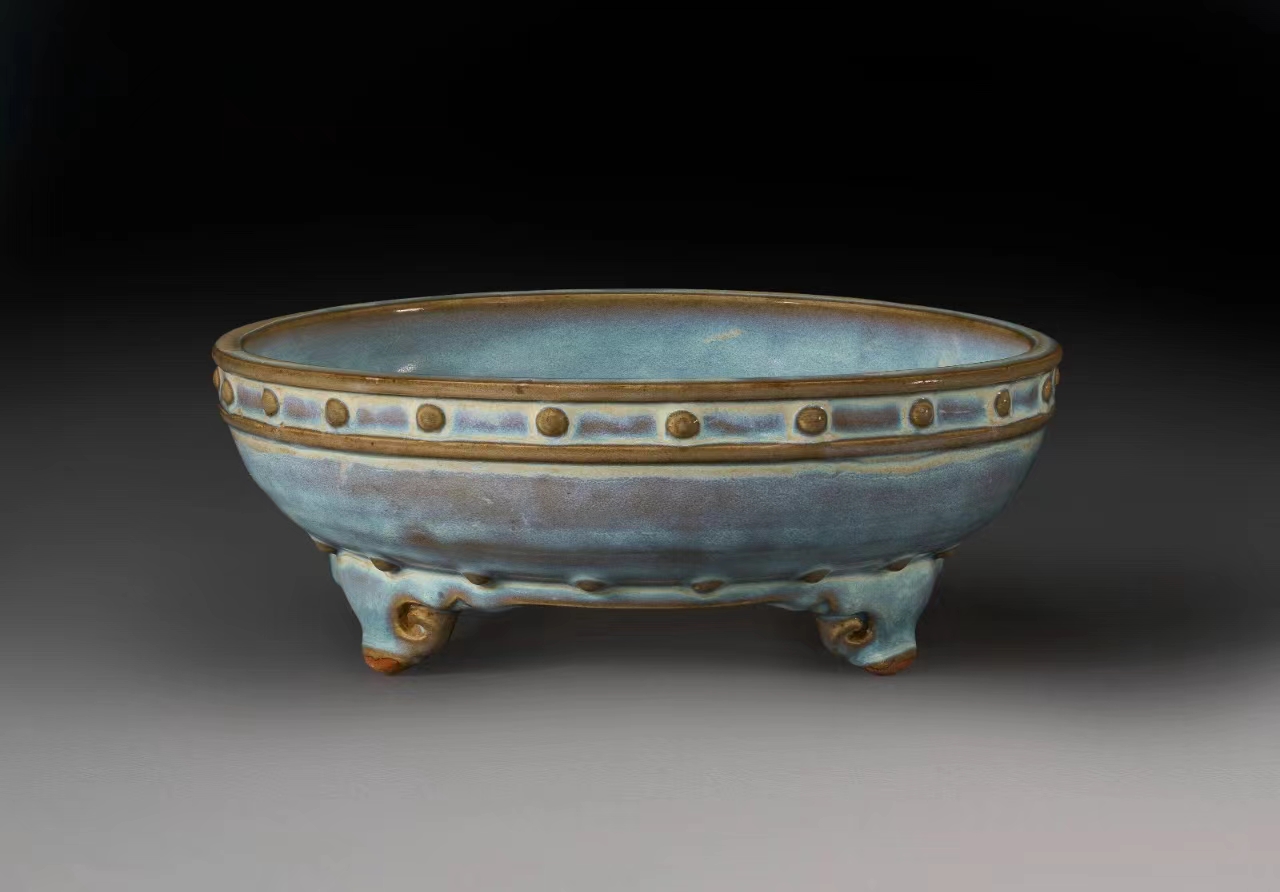
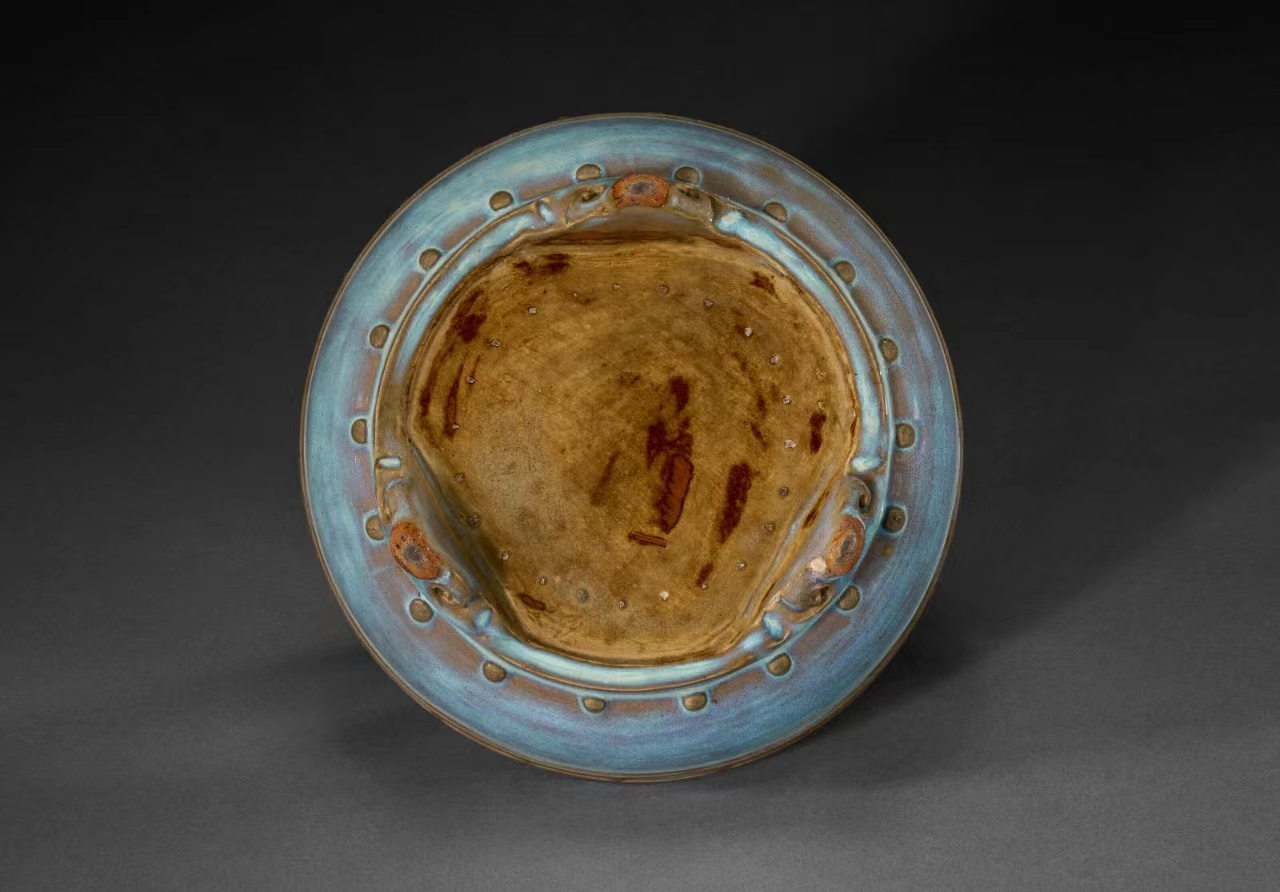
元/明 十四至十五世纪 钧窑蓝釉
Several similar bowls of Jun Shui Xian were preserved from the Qing dynasty, and are marked with the Chinese character for ‘one’. Four are in the collection of the Palace Museum, Beijing, and can be found in The Complete Collection of the Palace Museum - Porcelain of the Song Dynasty (I) (Hong Kong, 1996). The National Palace Museum in Taipei also has four pieces of the ‘one’ mark Narcissus dish, recorded in the collection of the National Palace Museum of Taipei: Jun kiln of the Department (Taipei, 1999). No. 27, in moon white, is inscribed as having been used in the Hall of Hanyuan in Yingtai; No. 28, in lavender blue; No. 29, in grape purple; and No. 30, also in moon white, is inscribed as having been used in the Changchun Study Hall in the Hall of Hsiu-hsin.
The Harvard Art Museums and the Sackler Art Museum have the largest and finest collection of numbered Jun porcelain outside of Beijing and Taipei, and in 1942 Ernest B. and Helen Pratt Dane donated all 60 pieces to the museums. Similar in form to the present example, the three ‘I’ mark Narcissus dishes are in a group. The Metropolitan Museum of Art, New York, has a similarly shaped narcissus dish in its collection, also with a ‘I’ mark.

This from the Kangxi dynasty doucai peach longevity plate is not lost.
Plate ‘life’ character decorated with a peach, peach and painted with cranes, peach longevity, cranes, this word in the figure, figure in the set of words in the composition, making the ‘longevity’ theme is more prominent, the overall colour is full, soft and gorgeous. Visible in the Kangxi period, Doucai process has reached the realm of pure perfection.
▼
Lot 1052
清康熙 斗彩蟠桃献寿纹盘
双圈六字楷书款
直径 21 cm.
$30,000-50,000
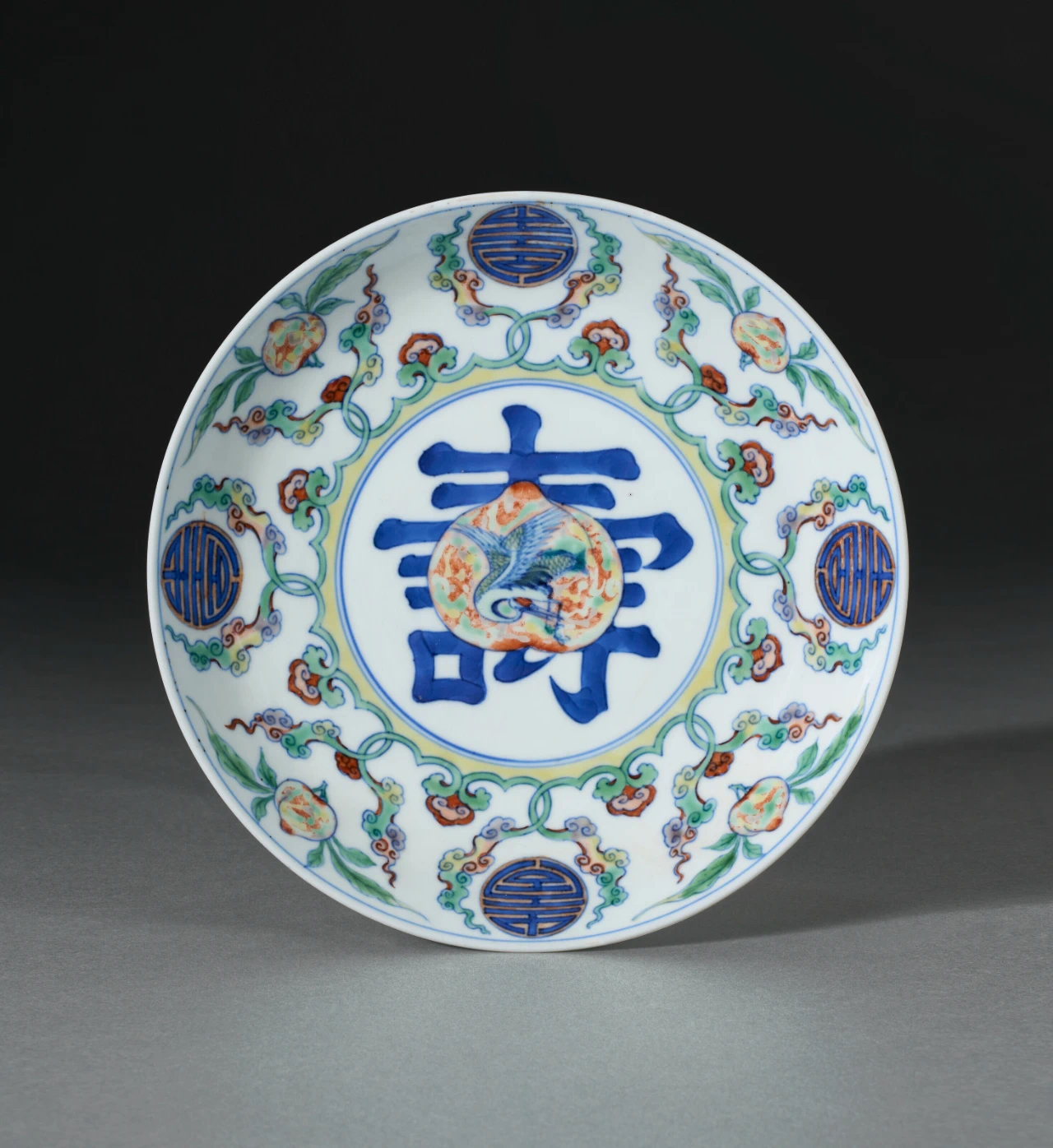
来源:
M. A. Clark, 《Jade & Other Arts: The Collection of Mr. & Mrs. George F.Jewett,Jr.》,旧金山,1983年
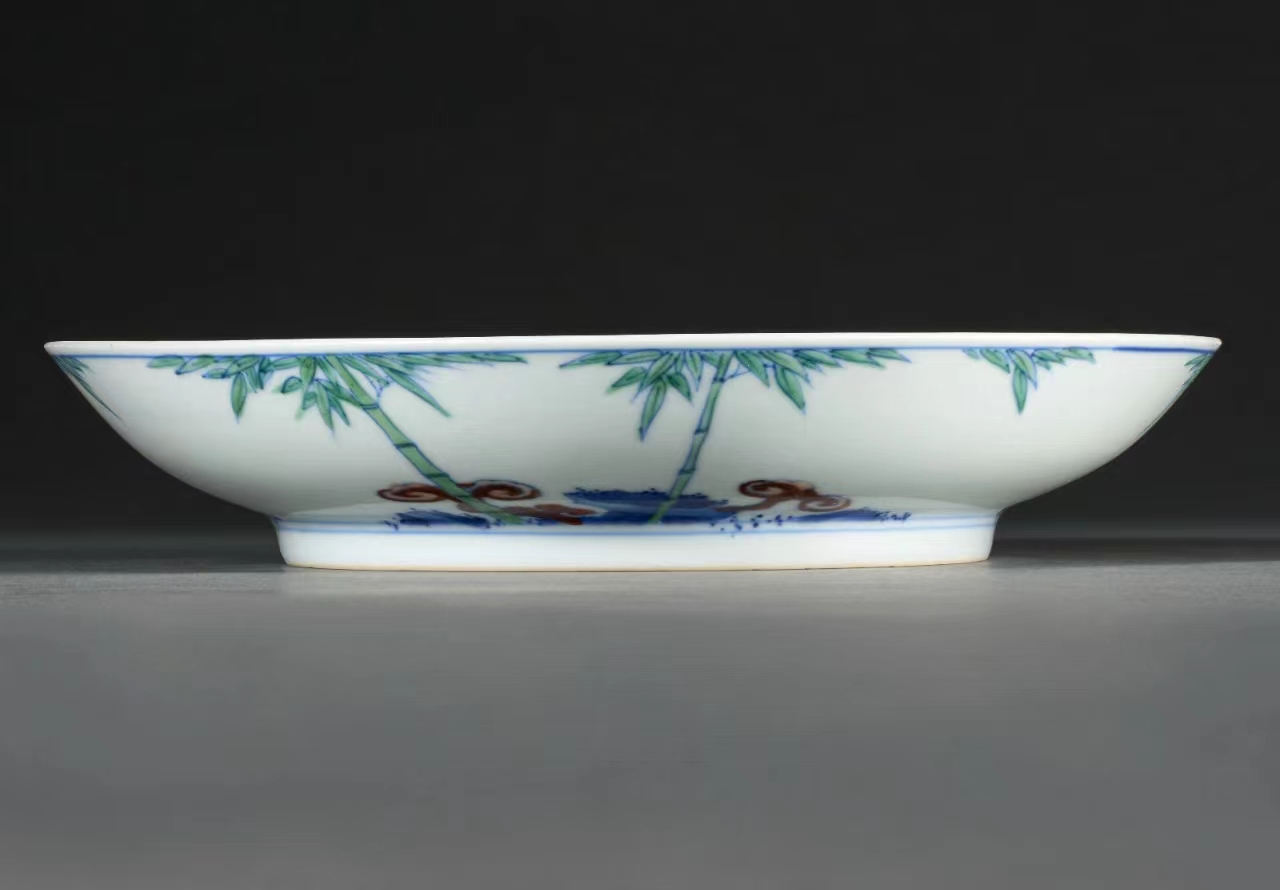
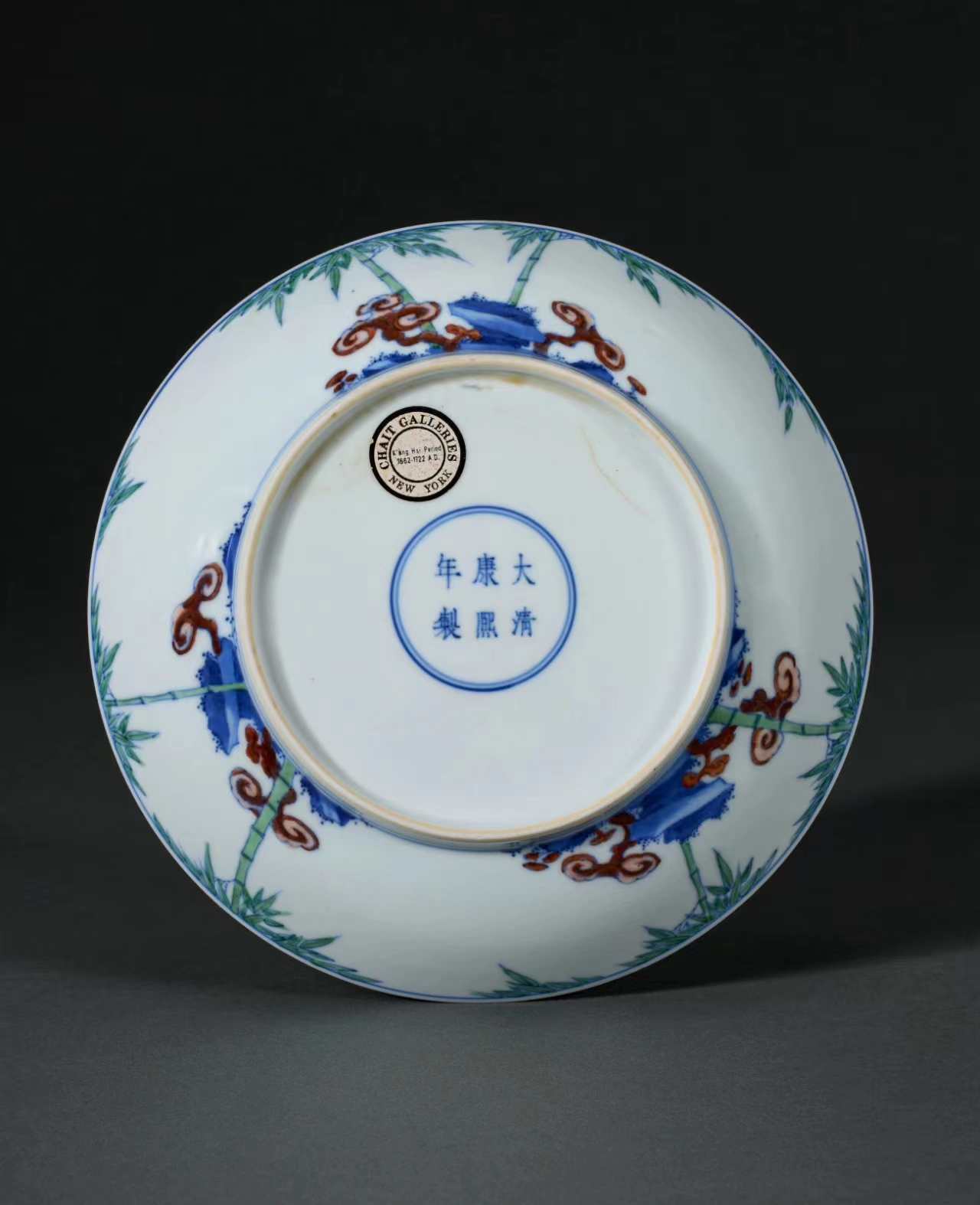
There is another pair of bowls with fruit and flower motifs, which are of considerable interest.
This pair of Doucai bowl exterior decorated with delicate pomegranate, lychee and Buddha's hand, meaning ‘more children, more happiness, more life’ three blessings; The interior is with a leafy peach for the interior.
Produced in the Yongzheng period, there is this kind of decoration bowl is quite rare, quite rare. In addition to doucai, famille-rose glazes were also subtly incorporated into the depiction of pomegranates.
A pair of similar bowls, subsequently sold at Sotheby's Hong Kong on 7 April 2011, were included in Mae-yin-tang Chinese Ceramics (Clare, vol. 4, part II, London, 2010, pp. 271-273, no. 1749), which is also known as the ‘Pomegranate Bowl of the Yongzheng period’. Another pair, from the private collection of Joseph Lau, was unveiled on 9 October 2022 at Sotheby's Hong Kong. And a close example from the Kung Hsiang-Hsi family was sold on 3 June 2015 at Christie's Hong Kong.
▼
Lot 1053
清雍正 斗彩花果纹碗一对
双圈六字楷书款
直径 16 cm.
$60,000-80,000
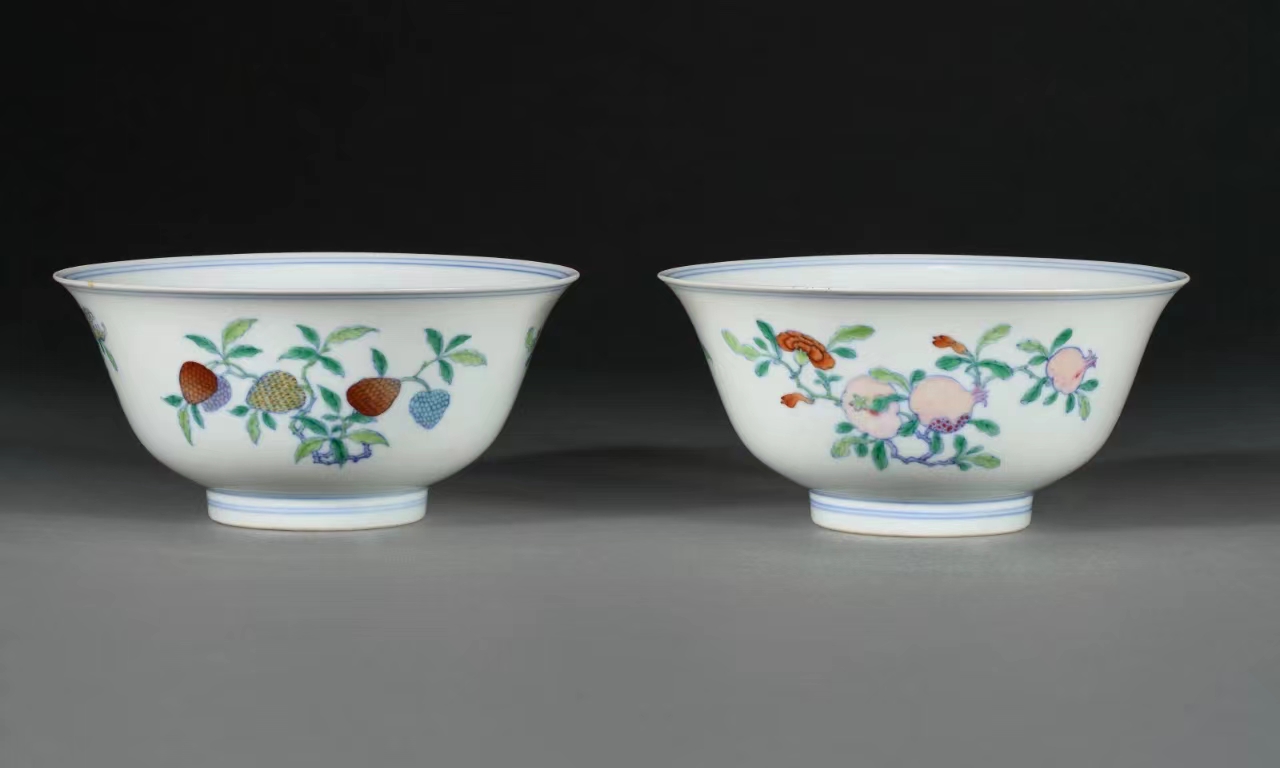
来源:
展览:
M. A. Clark, 《Jade & Other Arts: The Collection of Mr. & Mrs. George F.Jewett,Jr.》,旧金山,1983年
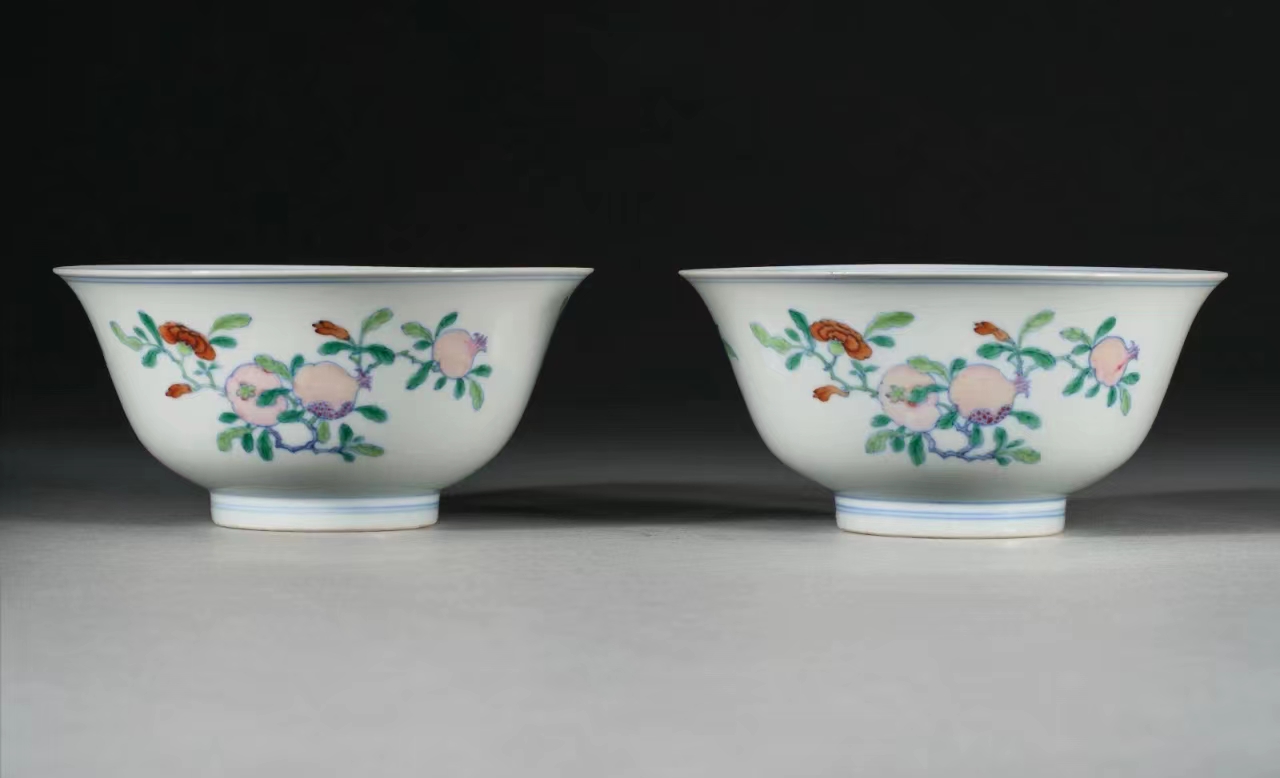
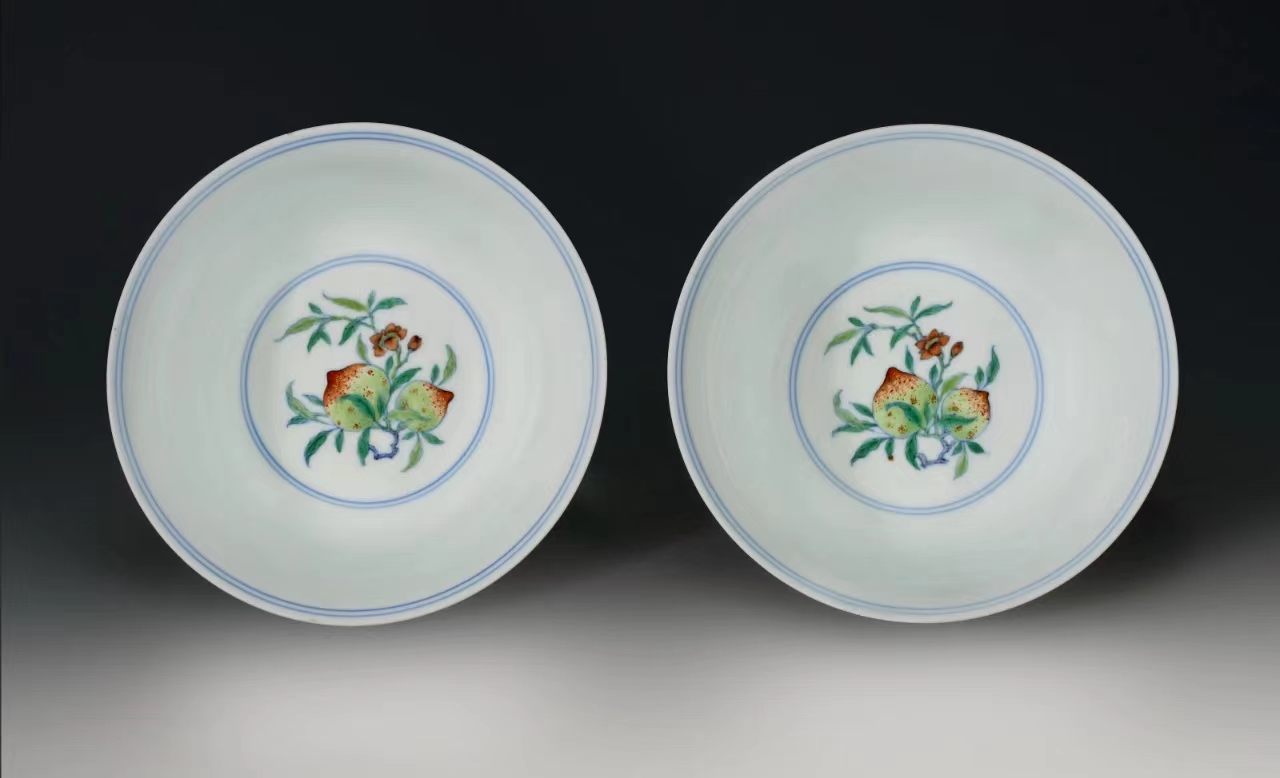
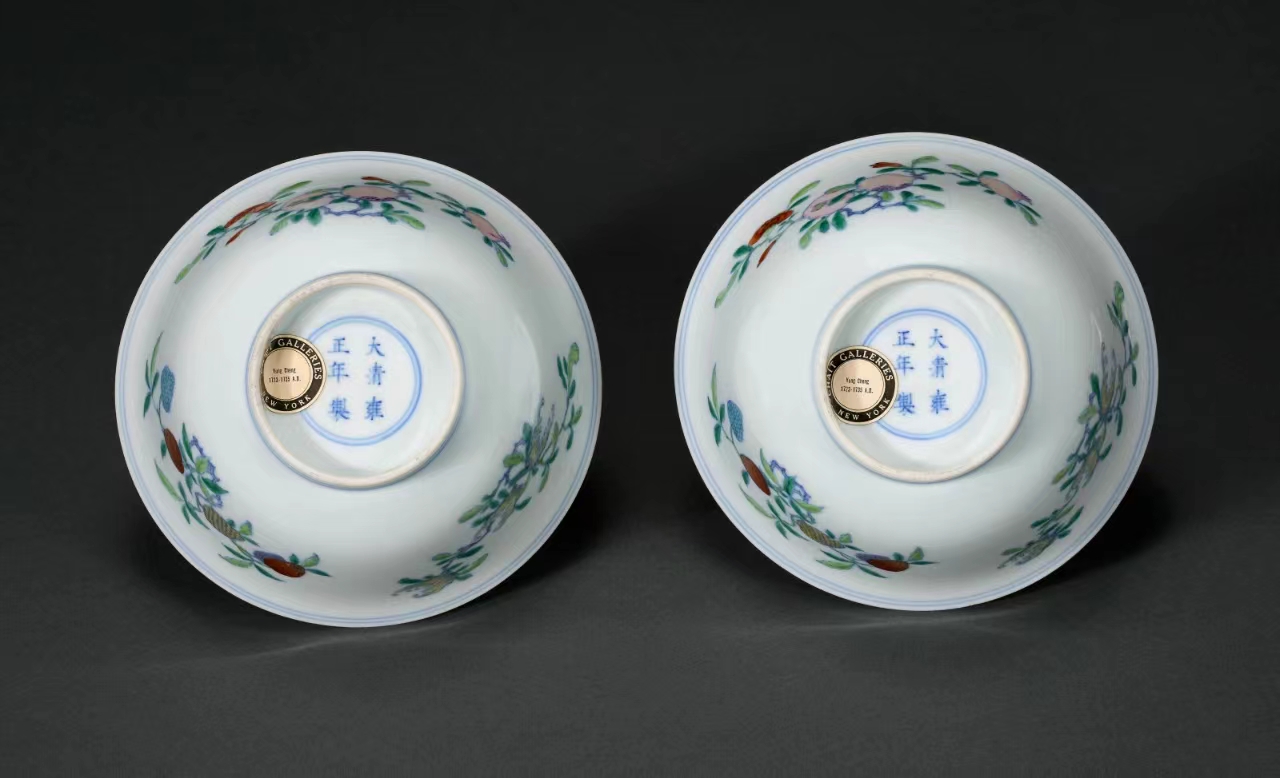
Standing at 18.8 cm tall, this pinkish-green glazed triple-goat kaitai zun is stunning in its warm glaze and elegant form, with the head of a goat decorating the shoulder of the zun, making the whole piece even more distinctive.
There appears to be only one other example of a similar form recorded from the Yongzheng period, a kiln-decorated glazed three-goat kaitai zun from Christie's Hong Kong in 2006, which is 20.3 cm high and slightly larger than this one.
This stylistic orientation towards monochrome bottles, which mimicked the glaze colour and form of the Song period, continued into the Qianlong period.
▼
Lot 1054
清雍正 粉青釉三羊开泰尊
六字篆书款
高 18.8 cm.
$200,000-300,000
来源:
M. A. Clark, 《Jade & Other Arts: The Collection of Mr. & Mrs. George F.Jewett,Jr.》,旧金山,1983年
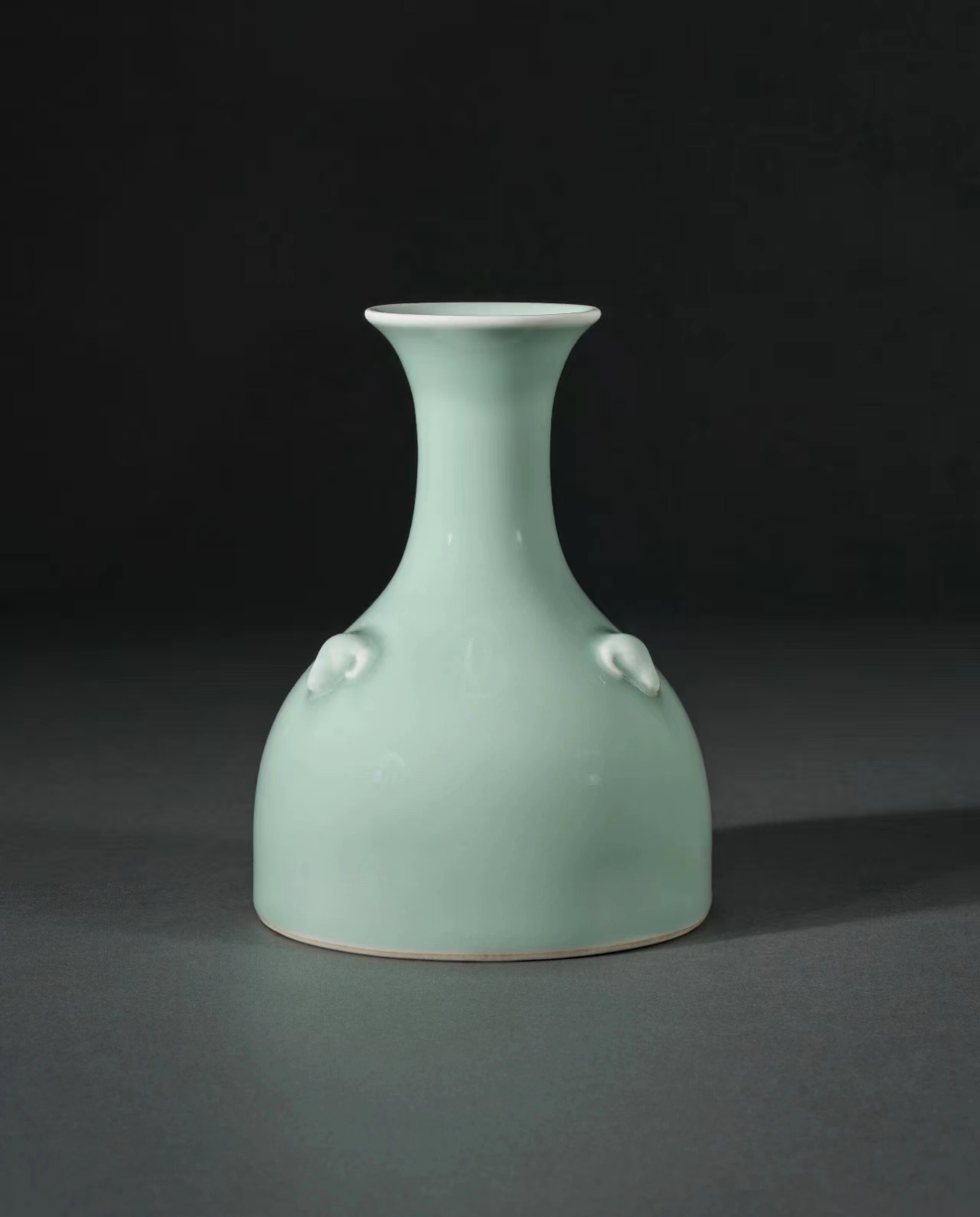
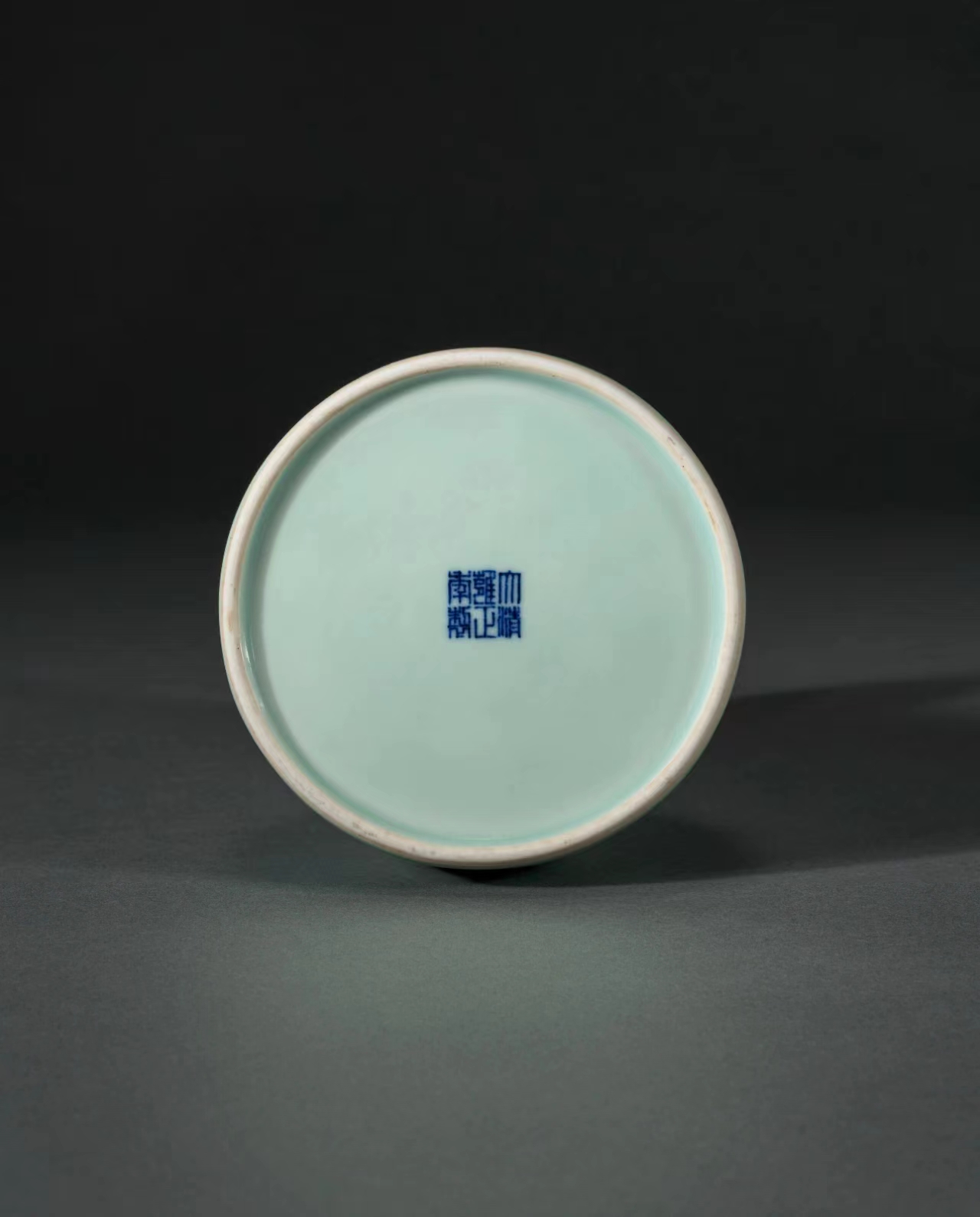
3.
In the ‘Chinese Ceramics from the Stewart Collection’, a number of highly antique Chinese artefacts are presented.
This large, powerful and well-made ceramic horse is very similar in style to the Eastern Han ceramic horses unearthed in Sichuan. Often thought of as warhorses, they have erect ears, long narrow heads, open mouths, bulging eyes, knotted tails, and well-built manes, with the right front leg slightly bent in a forward position, eager to try and full of vigour.
After the Eastern Han Dynasty, there are more and more types and quantities of ceramic artefacts. Similar to this ceramic horse, it can also be seen in Plate VI:5 in the 9th series of Cultural Relics Materials (1985), a ceramic horse excavated from Majiashan, Xindu District, Sichuan Province, which is smaller compared to this one; and Plate 9:3 in the 1st series of the Journal of Archaeology (1958), a ceramic horse excavated in Chengdu, which is also smaller in size.
▼
Lot 1002
东汉 灰陶马
高 123.2 cm.
$12,000-18,000
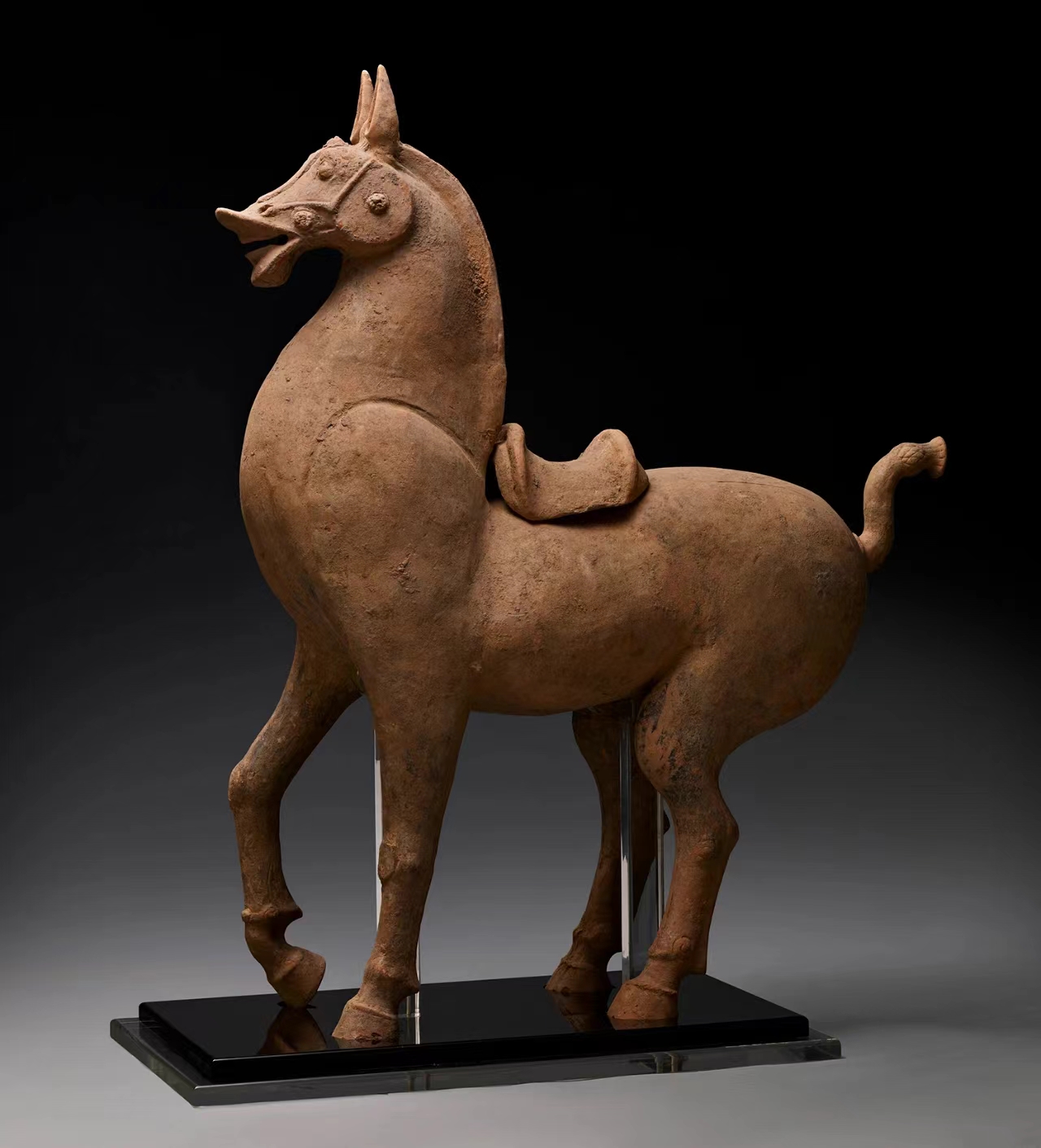
来源:
*此器经牛津热释光测年法测试(测试编号C97e26),证实与本图录之断代相符
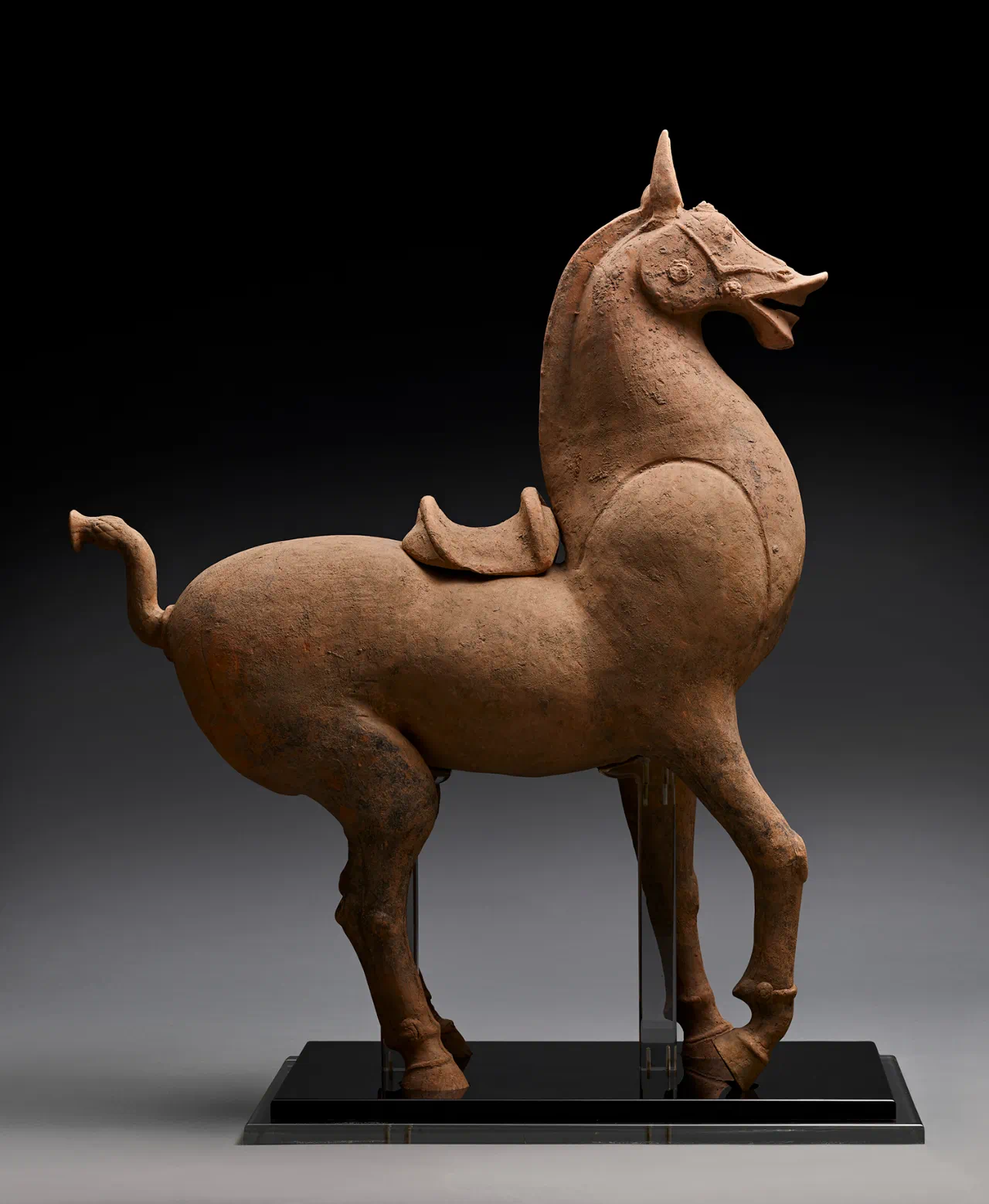
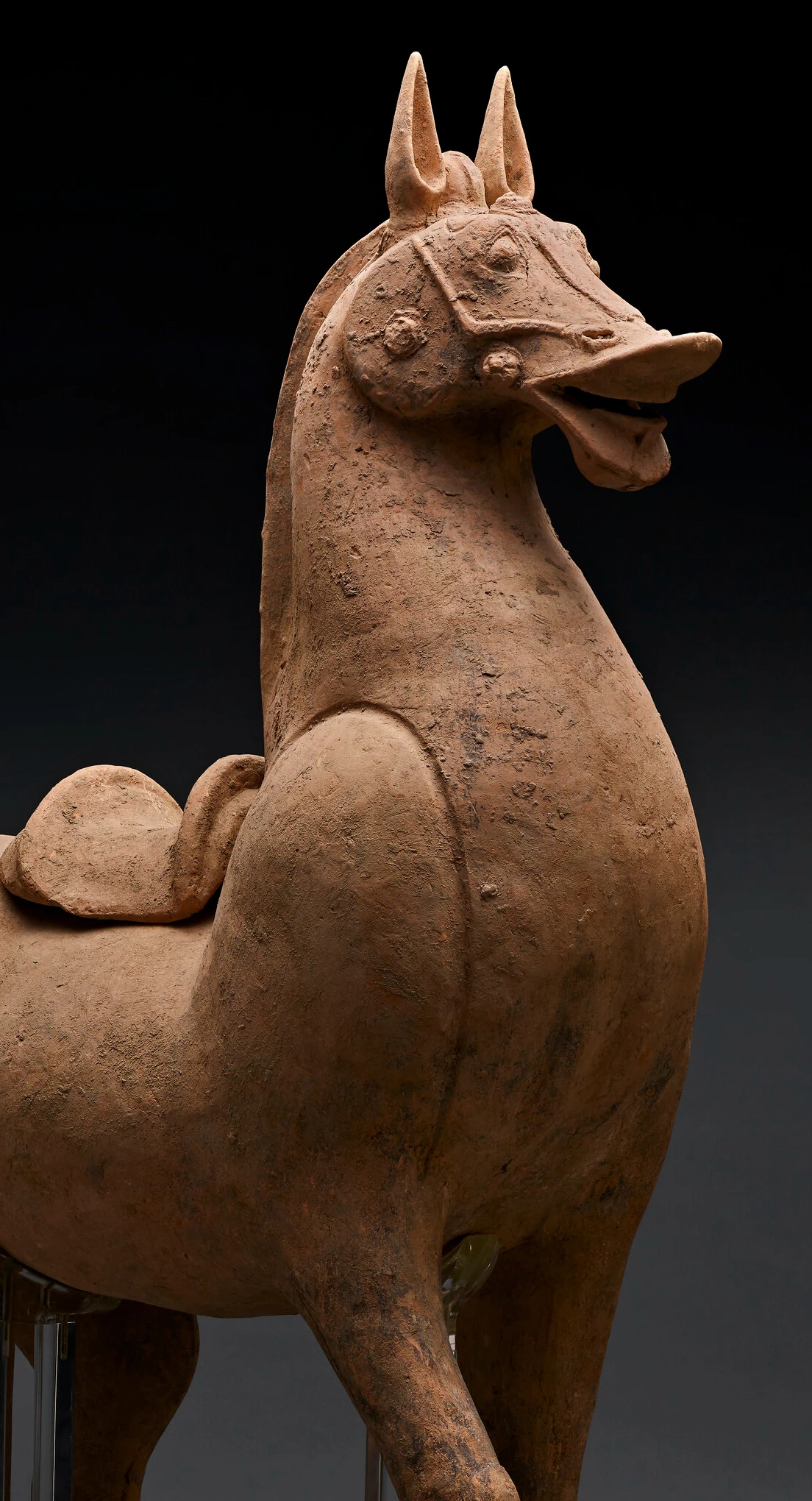
Stuart is also releasing a number of wonderful Tang Three Colours wares from his collection.
‘Tang three-colour pottery was popular during the Tang Dynasty, in which craftsmen added different metal oxides to the colour glazes, which were then baked to form a wide range of colours including light yellow, ochre yellow, light green, dark green, sky blue, maroon and aubergine purple, with most of the colours dominated by yellow, maroon and green, which were brilliant and colourful, and which embodied the aesthetic tastes and characteristics of the Tang Dynasty.
This Tang dynasty three-colour horse is a perfect example of Chinese ceramic sculpture at its peak during the Tang dynasty - not only does it have a wonderful amber glaze, but it is also beautifully decorated. The front of the head is covered in a cream-coloured glaze, while the saddle is covered in three colours and topped with green cloth. The craftsman has sketched the strength and lines of the horse's muscles with the utmost precision, giving the whole piece the appearance of a well-fed, well-boned horse.
In June 2003, Christie's London had auctioned a similarly shaped Tang three-colour horse, slightly smaller in height than this one.
▼
Lot 1007
唐 三彩马
高 74 cm.
$80,000-120,000
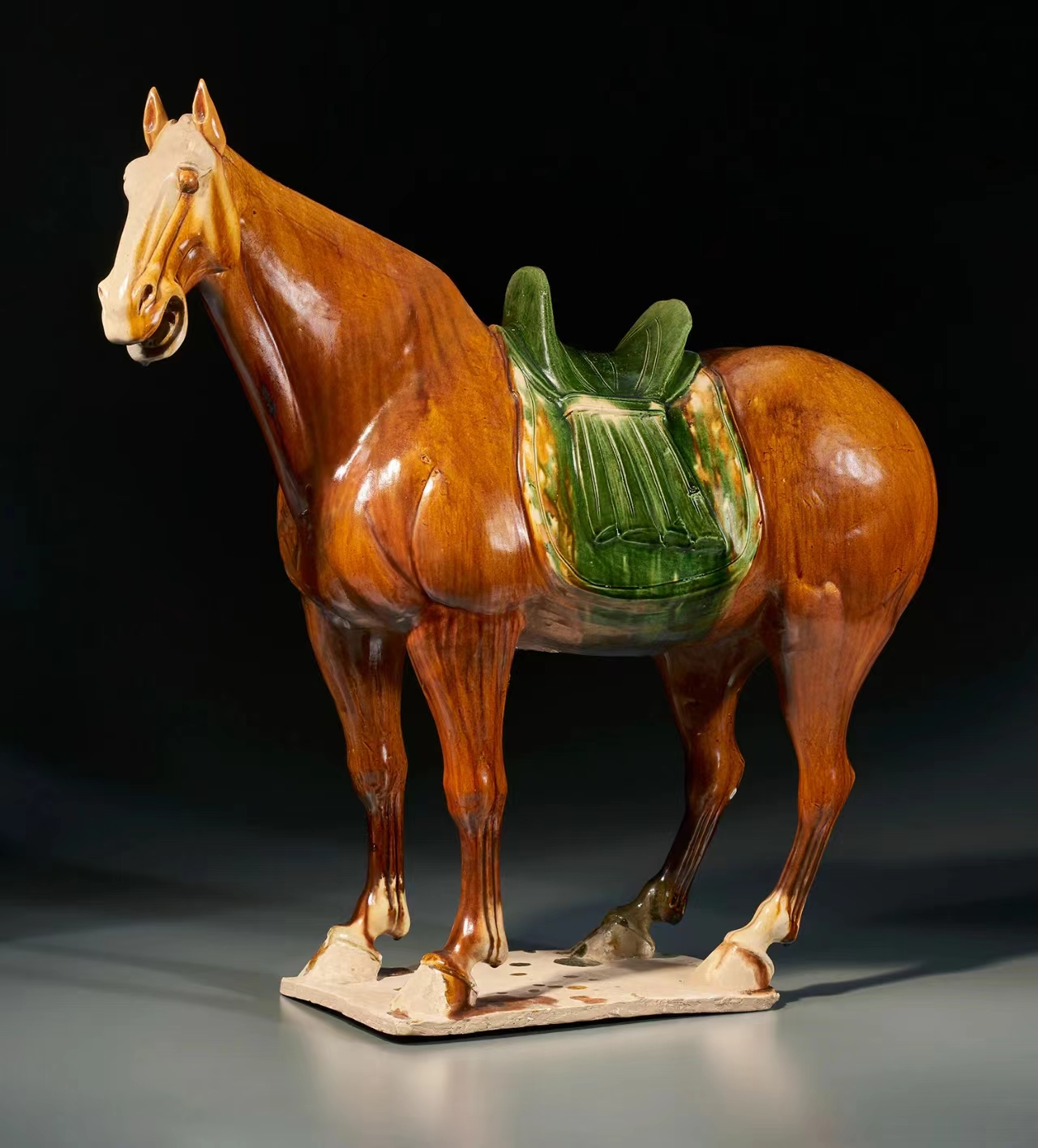
来源:
*此器经牛津热释光测年法测试(测试编号C198m10),证实与本图录之断代相符
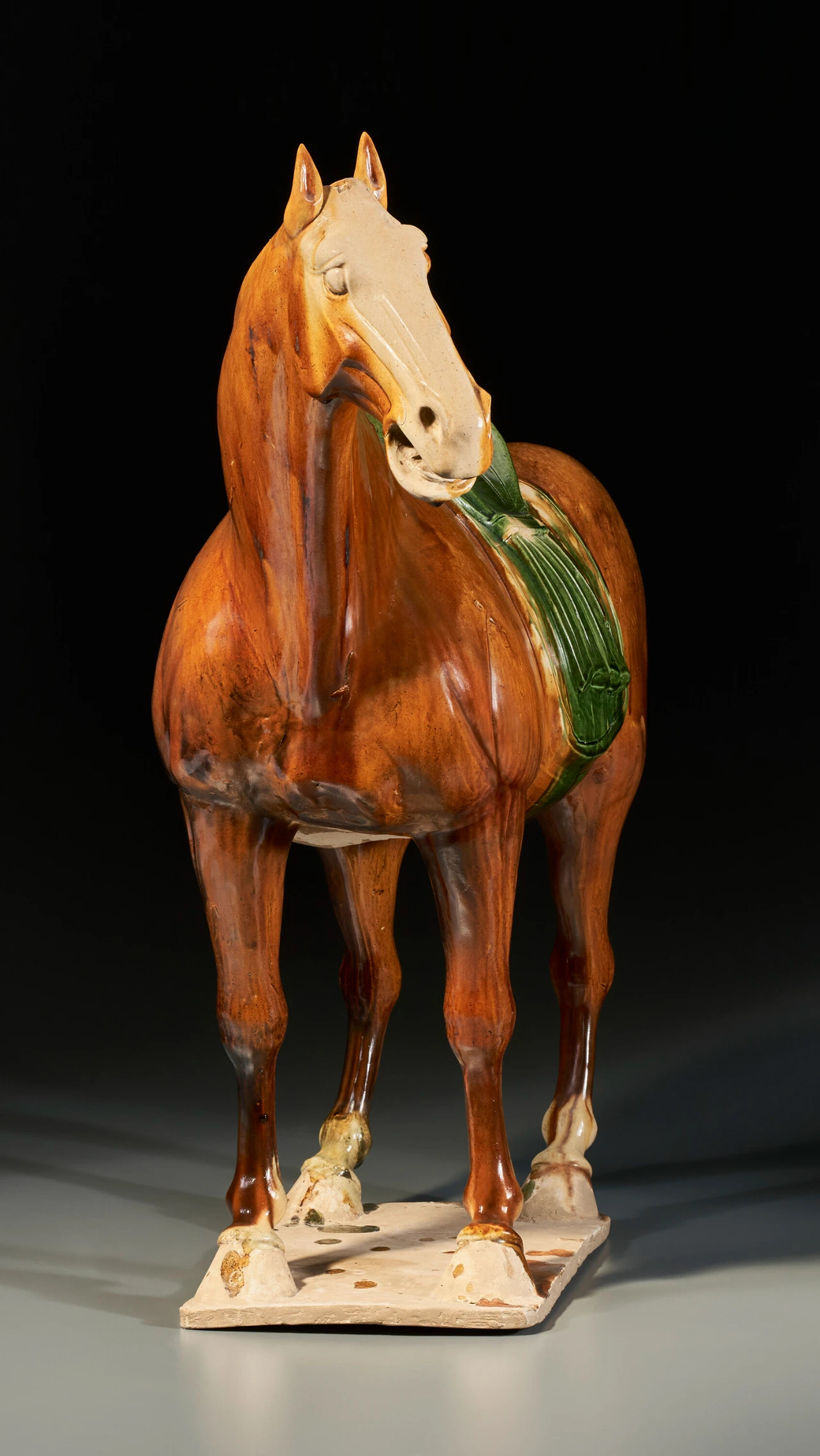
As a god to drive away epidemics and evil spirits, the tomb-suppressing beast, with its peculiar shape and ferocious expression, deterred all evil spirits for its owner. The Sheng Tang Dynasty was the flourishing period for the development of tomb-suppressing beasts, and the tomb-suppressing beasts of this period were elaborately crafted, exquisite and gorgeous, and had a very high artistic ornamental value.
▼
Lot 1008
唐 三彩镇墓兽一对
较大件高 101.3 cm.
$30,000-50,000
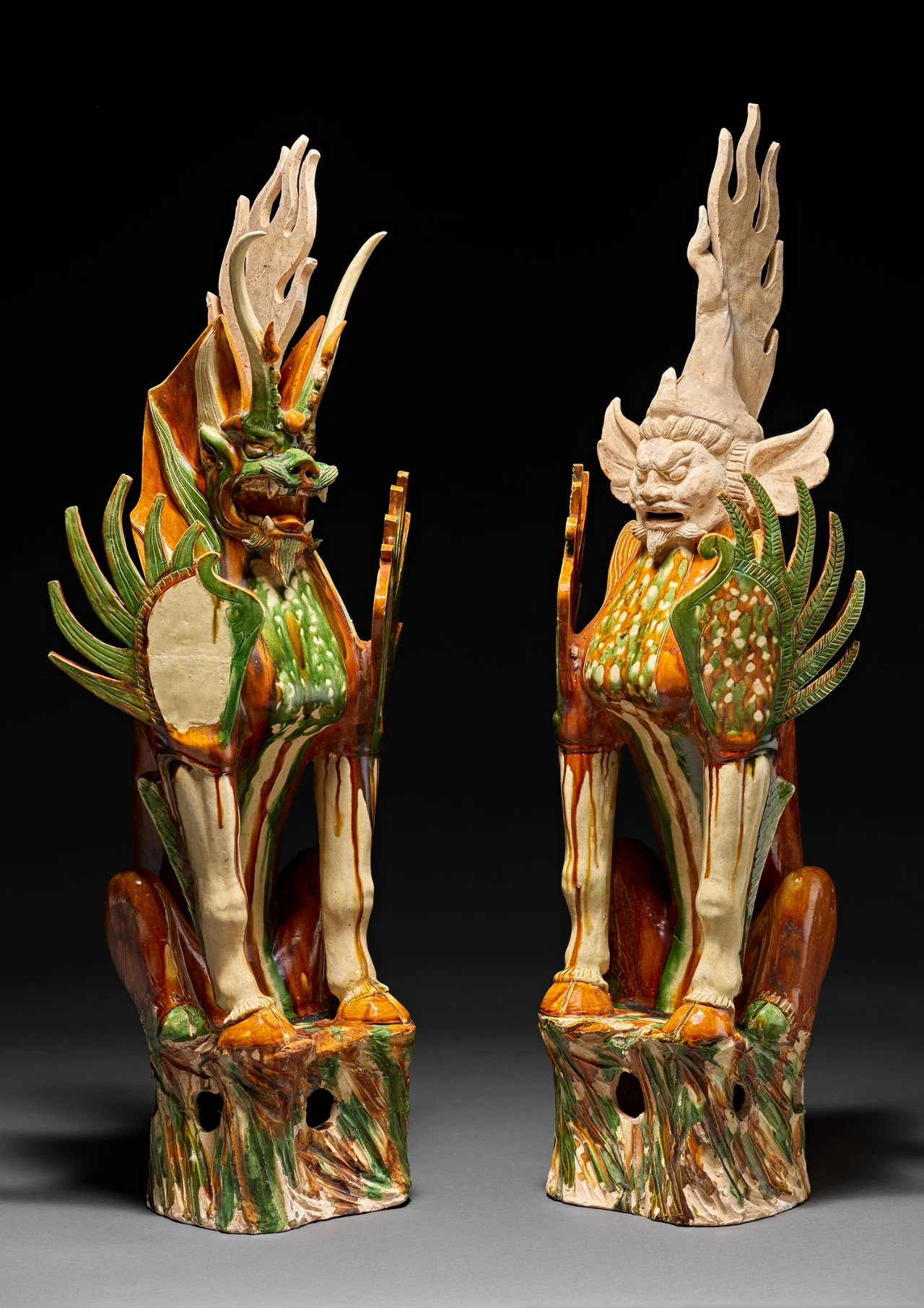
来源:
纽约苏富比,1997年9月23日,拍品编号211(部分)
Figurines are also one of the most typical types of Tang Three Colours, often portrayed vividly and realistically, each with its own style. Civilian figurines, on behalf of the senior court officials at that time, in front of this pair of more than one metre high, tall size, gentle face, clothes splash colour gorgeous, solemn and elegant. Two people wearing a high crown, wearing a wide mouth, low collar coat, one of the main colour with green glaze, the other with brown glaze, foot with pointed shoes, each standing in yellow, green hollow seat. The facial expressions of the figures are particularly delicate and realistic, and the depictions are accurate and realistic. The overall melting and flowing glaze of the figurines best represents the decorative beauty of the Tang three-colour glaze.
▼
Lot 1009
唐 三彩文官俑一对
较大件高 109.2 cm.
$30,000-50,000
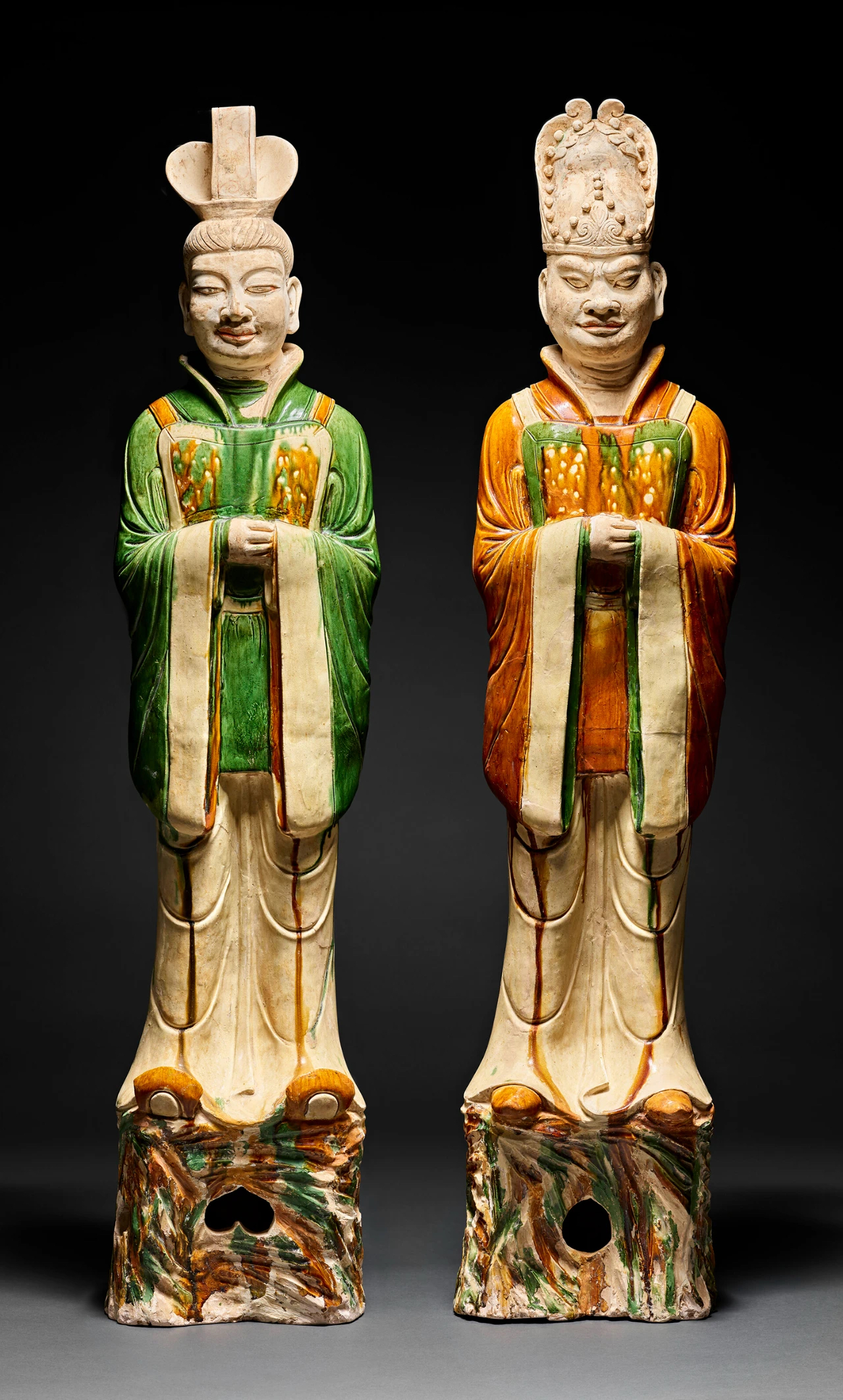
来源:
纽约苏富比,1997年9月23日,拍品编号211(部分)
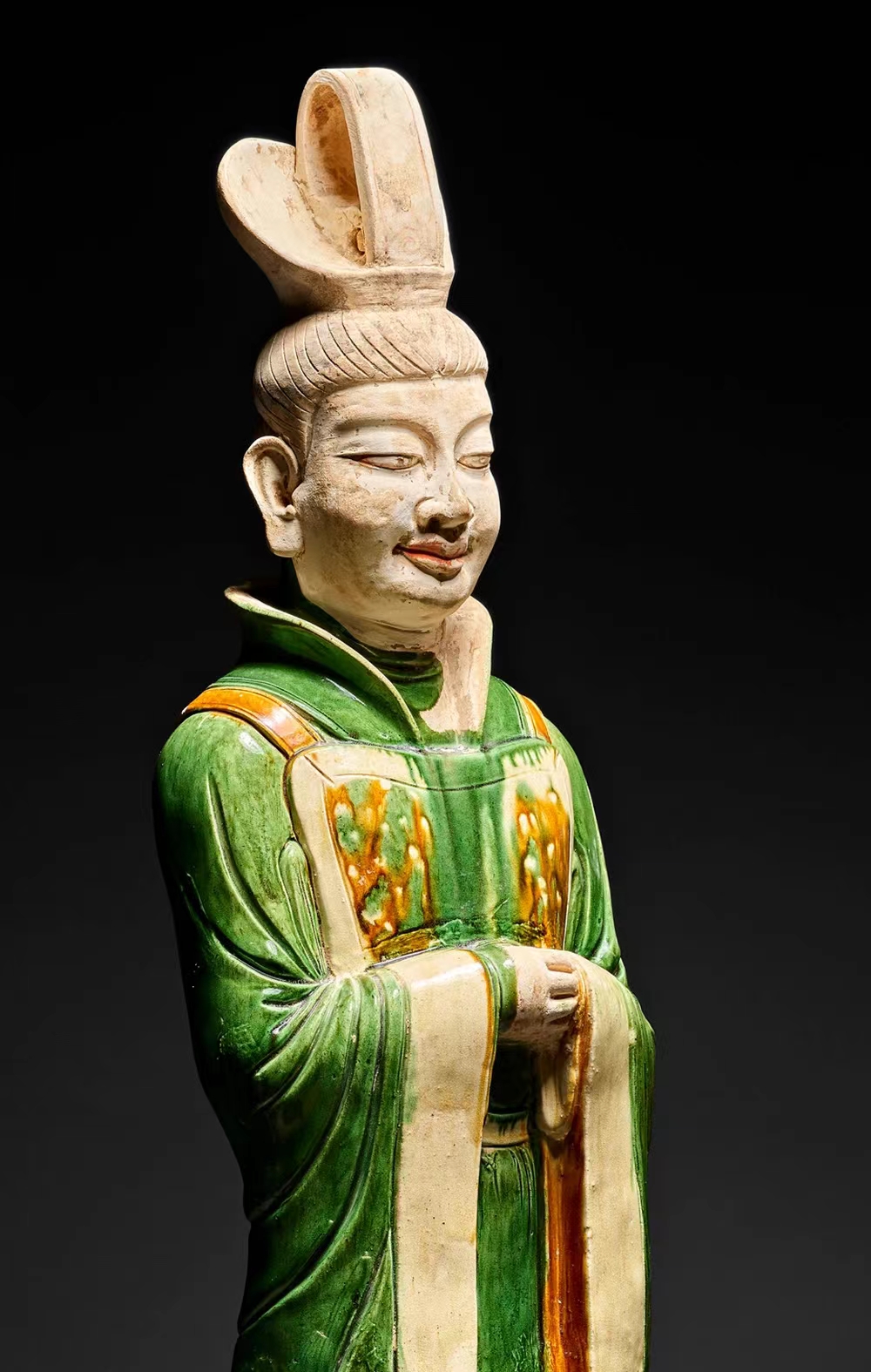
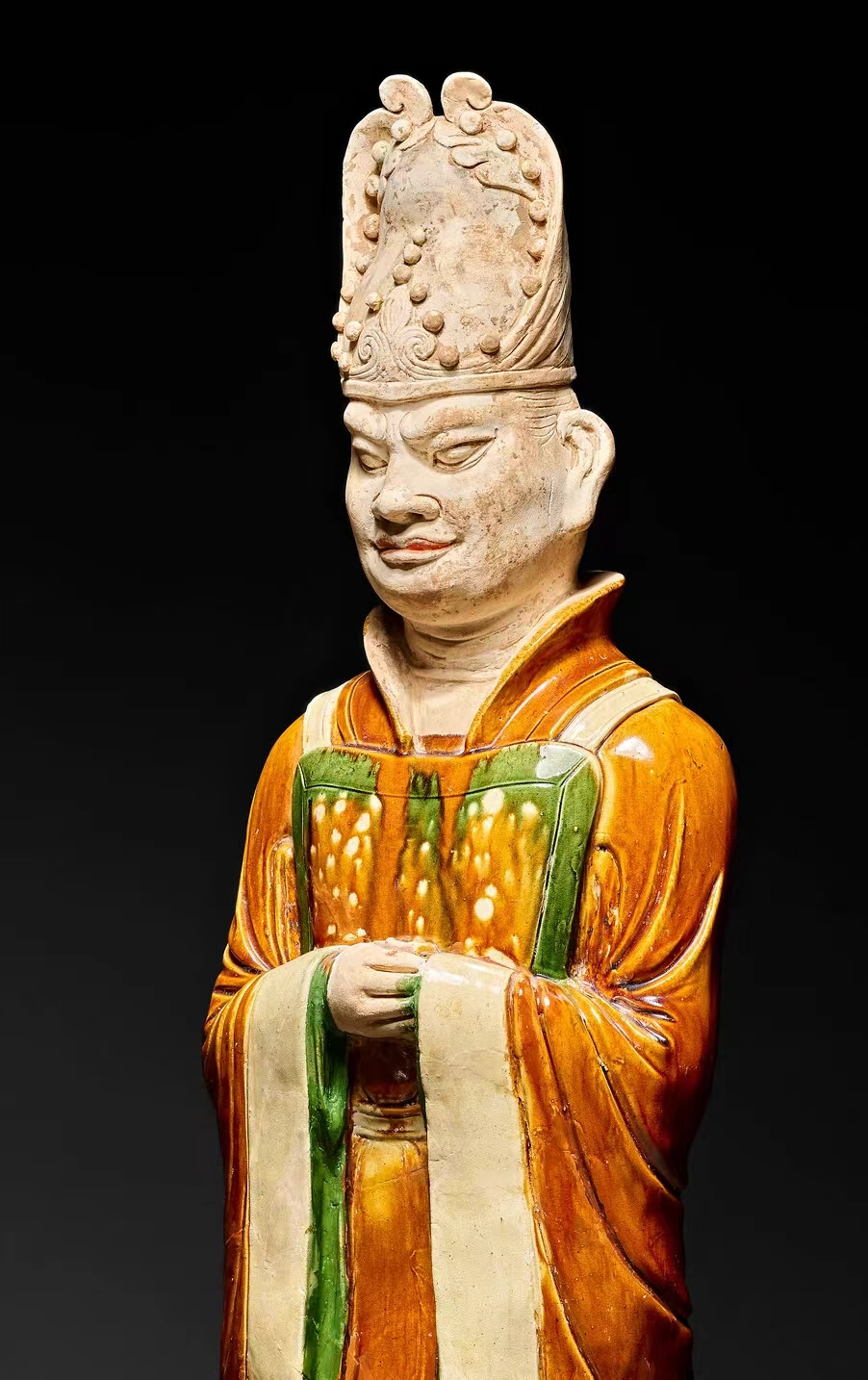
Heavenly King figurines and tomb beasts together, more set up in the tomb or the front of the tomb, tomb beasts in front, Heavenly King figurines in the back, usually appear in pairs, left and right one, known as the ‘four gods’.
This pair of heavenly kings figurines were placed on the top of the head of a bird spreading its wings to fly, the two eyebrows knitted, eyes open, a mouth closed, another open mouth and teeth. They each put out a hand on the waist, one hand clenched fists up posture, dragon head shoulder pads, abdominal armour, waist belt, waist down the knee skirt, under the bound leg, one leg upright, the other leg slightly curved, stepped on top of the reclining bull. The mountain-shaped seat under the reclining bull is covered with green, brown and white glazes, which are bright and colourful.
There are many similar figurines of the Heavenly King in major museums around the world, including the Palace Museum in Beijing and the Victoria and Albert Museum in London.
▼
Lot 1010
唐 三彩天王像一对
较大件高 111.8 cm.
$40,000-60,000
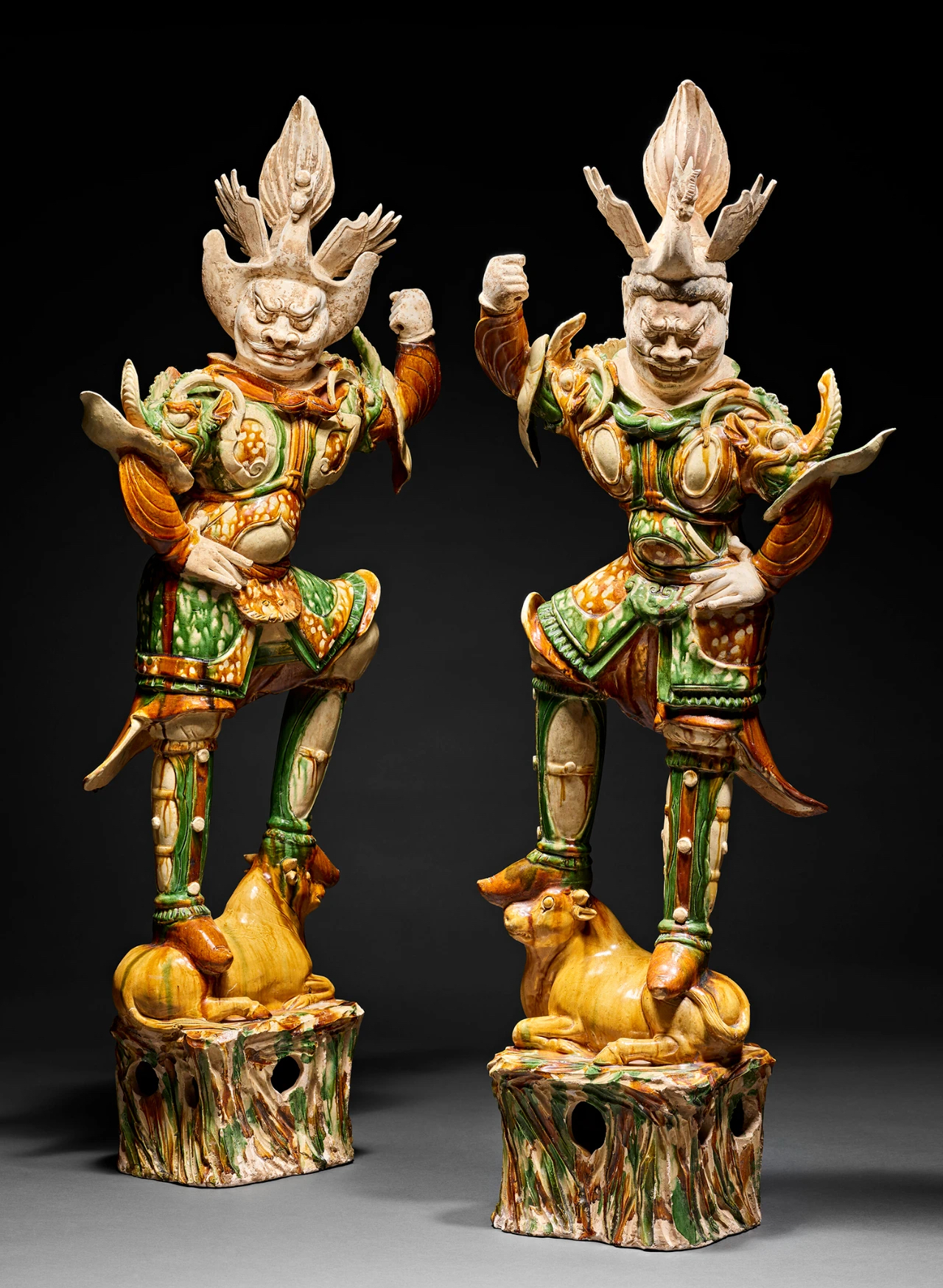
来源:
纽约苏富比,1997年9月23日,拍品编号211(部分)
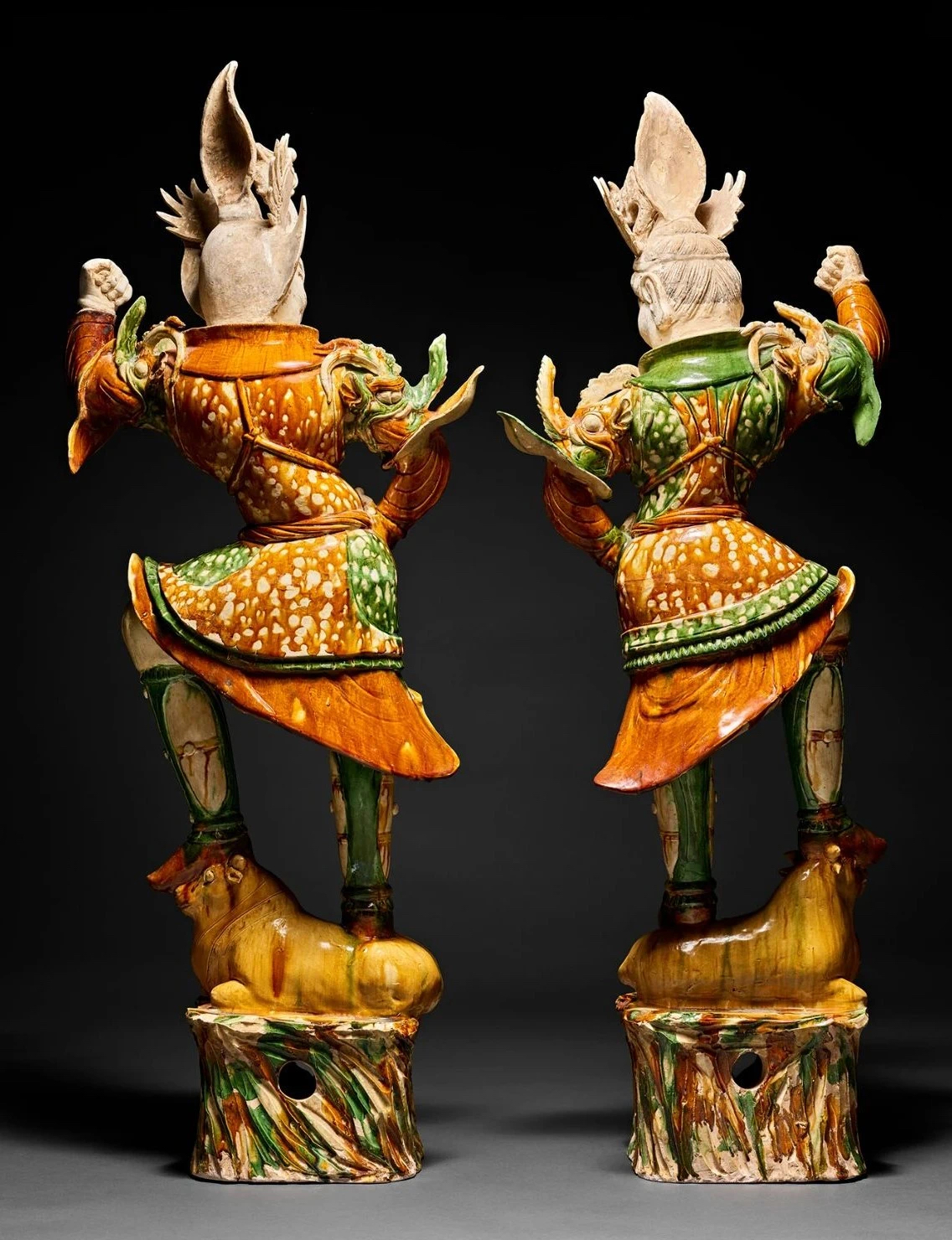
The stunning kiln-change glaze pulls the eye from the Tang Dynasty to the Yongzheng period of the Qing Dynasty.
The so-called kiln change, that is, ware in the firing process, there is an unexpected coloured effect, because the glaze contains a variety of colour-presenting elements, out of the kiln will often get unexpected glaze colour effect. As the ‘compilation of barnyard history’ in: ‘porcelain with a quality, so into the heterogeneous, the same is a colour, so into the different colours, water and soil, non-manpower trick can be added, it is called the kiln change.’ The vagaries of kiln change can lead to unique pieces.
This long-necked vase with a string pattern in kiln-damaged glaze is from the court of Yongzheng, and is inscribed in seal script on the footrim with Yongzheng nian zhi (Yongzheng year system), which is an official kiln from Jingdezhen. As early as in the Yongzheng three years (1725), Yongzheng six years (1728), the emperor asked to identify the palace of jun porcelain, and asked Jingdezhen kilns to copy this glaze, to be Yongzheng seven years (1729), the famous imperial kiln governor Tang Tang Ying according to the imperial decree for the imitation of burned jun porcelain, specially sent to the factory office of the staff of friends Wu Yaopu went to Junzhou, investigating the glaze of Jun kiln preparation method. According to the Qing Palace Office of the archives, the Yongzheng eight years (1730) in March has been done to imitate the Jun kiln bottles, in October Nian Xiyao presented into the imitation of Jun kiln porcelain furnace size of twelve, by the emperor's appreciation of the ‘this furnace firing is very good, and Nian Xiyao according to this kind of burning a few more’.
Under the efforts of Tang Ying, Yongzheng imitation kiln porcelain has reached a fairly high level. Craftsmen in the imitation of the Song dynasty kiln based on the development of this unique copper-red art glaze. Detailed examination, set moon white, purple red, brown and yellow and sauce colours as a whole, as if jumping clumps of flames, mottled brilliant, natural drape to the near the bottom, beautiful, psychedelic and exuberant.
▼
Lot 1013
清雍正 窑变釉弦纹长颈瓶
四字篆书刻款
高 38.4 cm.
$150,000-180,000
来源:
纽约佳士得,2000年3月21日,拍品编号380
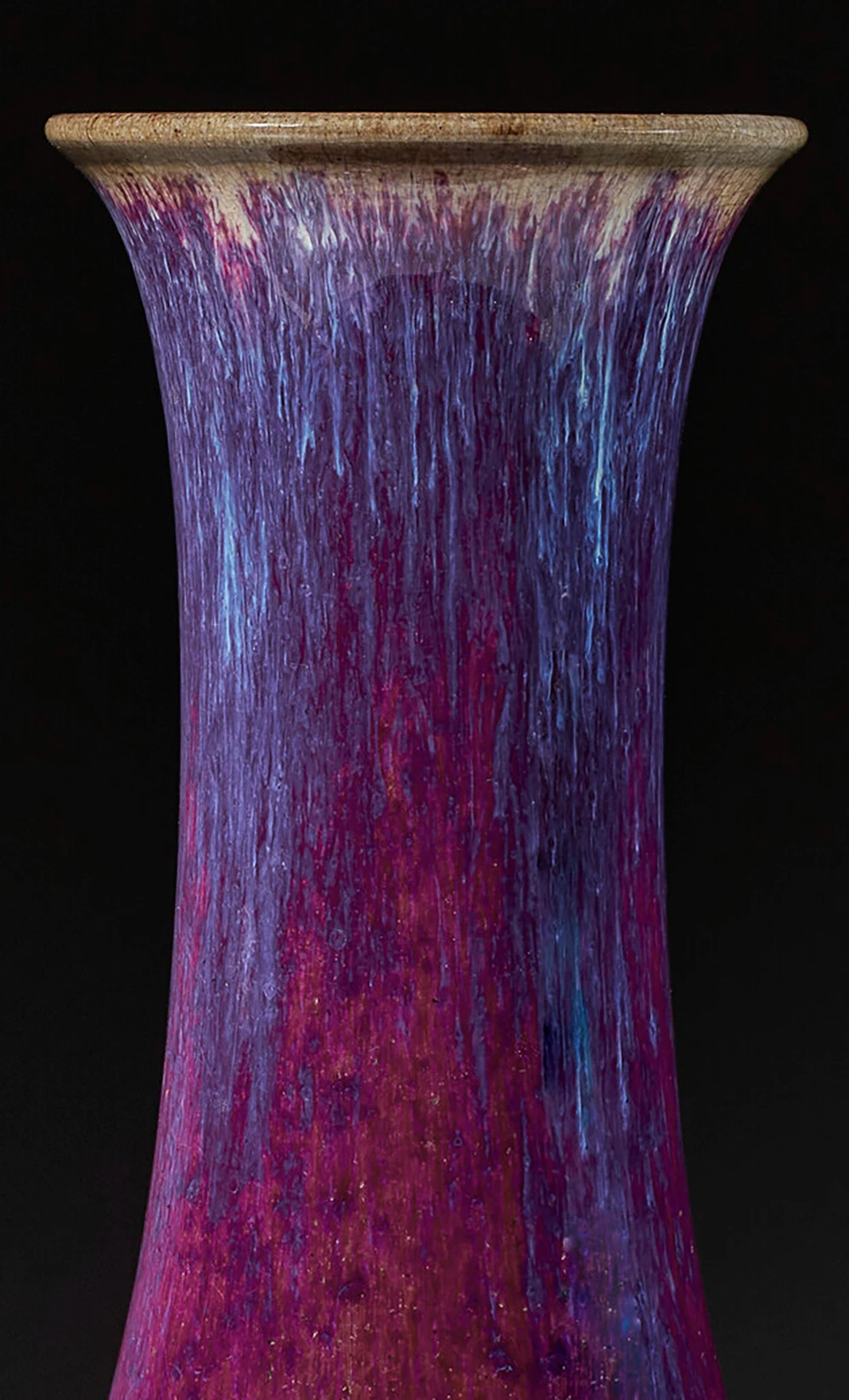
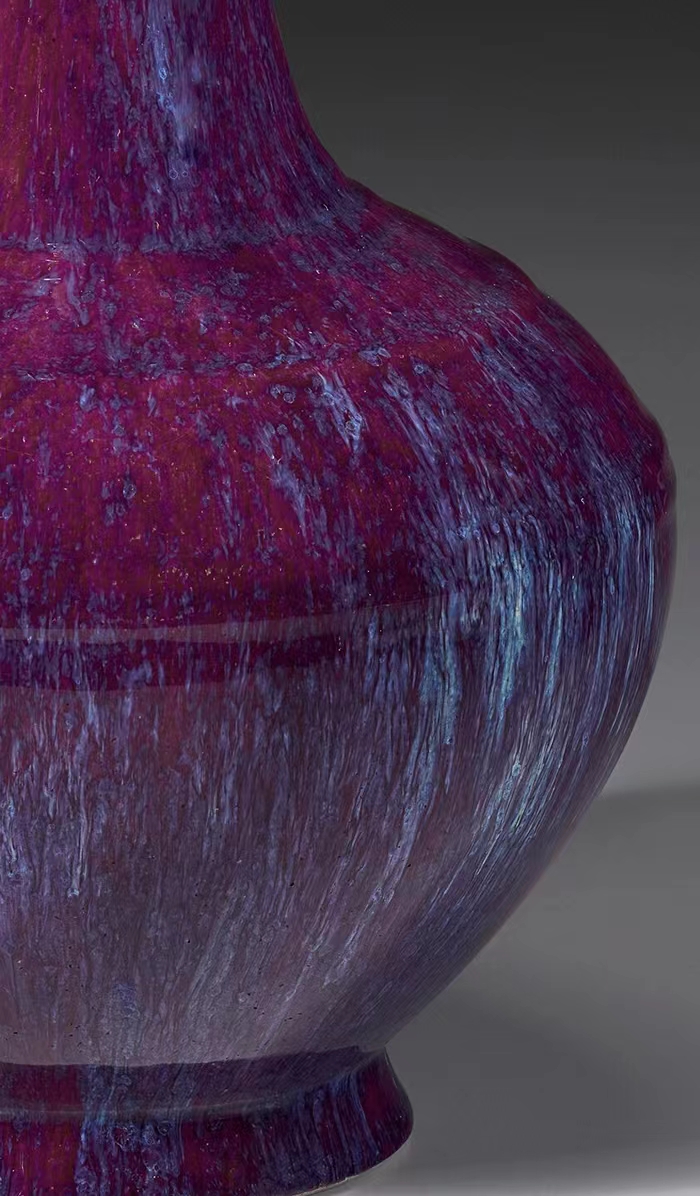
Recently, there have been a number of exquisite works of painted porcelain, which have become a big hit recently. In the Stewart Collection, there is a Qing dynasty Qianlong blue and white bowl with landscape figures and a Qing dynasty Kangxi five-colour dish with a painting of Yanqing. This kind of ware is very suitable for fine play, if the blue and white bowl in the hands of the slow rotation, like a small size of the ink landscape figures scroll, full of interest.
▼
Lot 1014
清乾隆 青花通景山水人物图碗
直径 39.8 cm.
$20,000-30,000
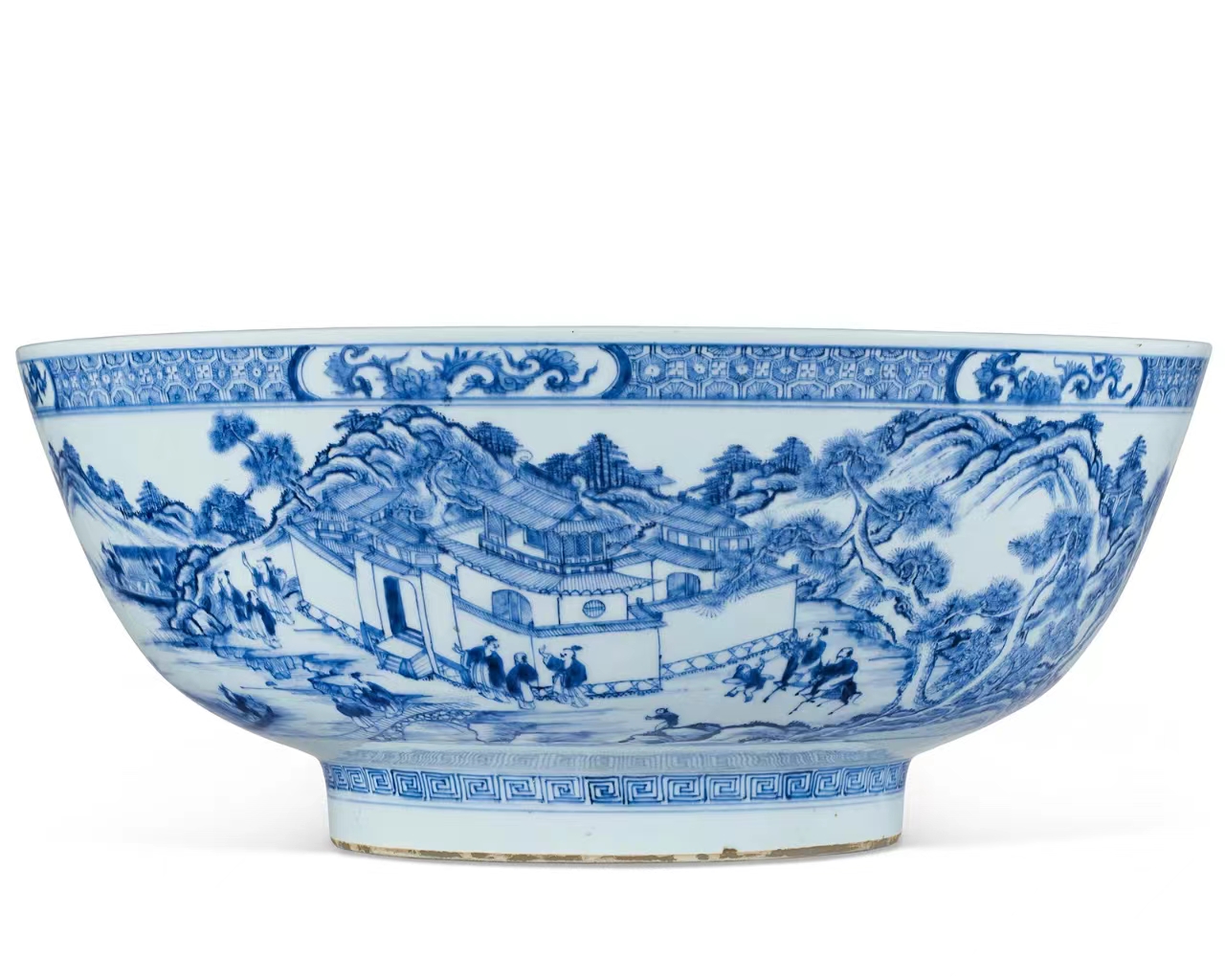
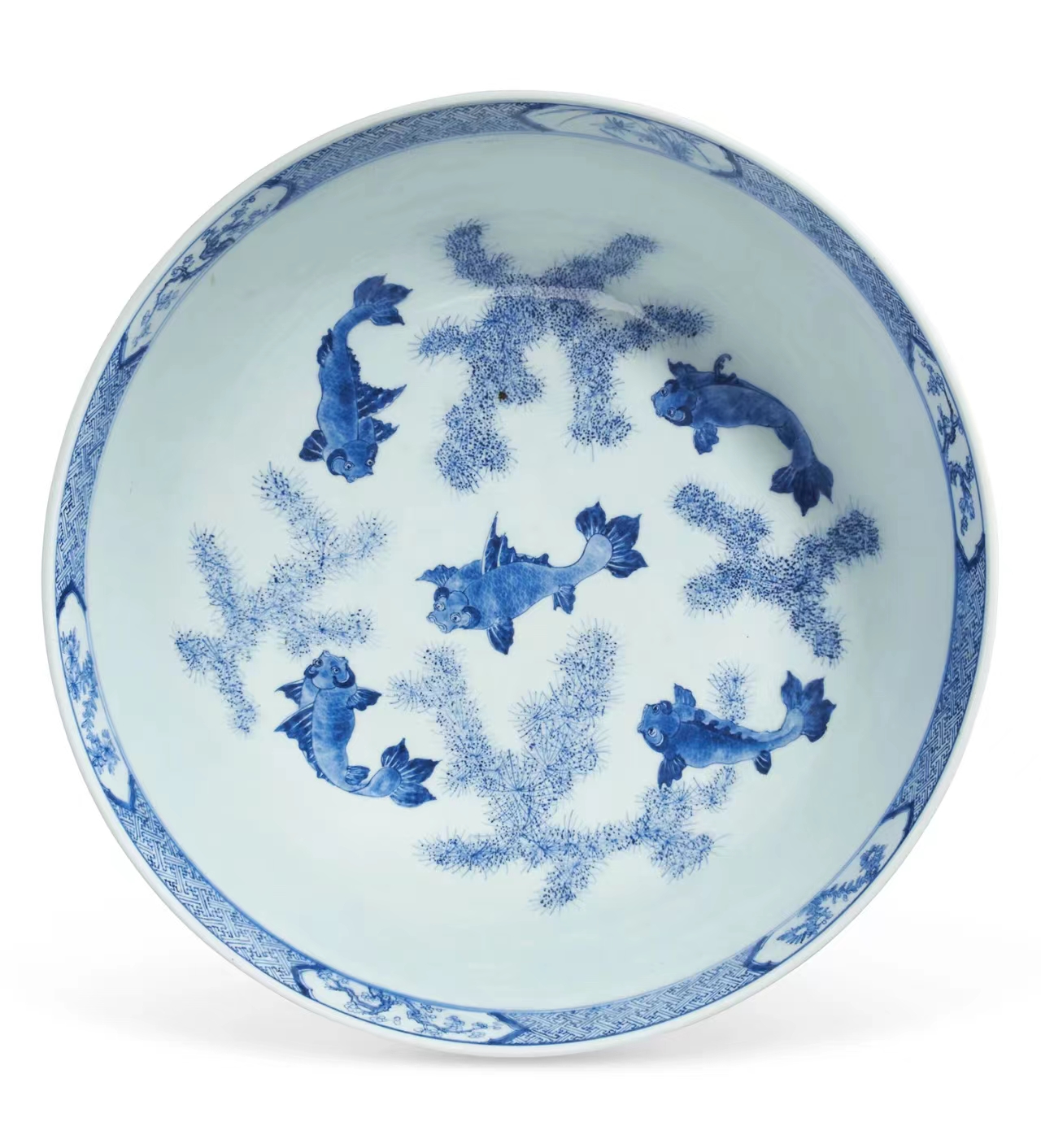
来源:
《The F. Gordon Morrill Collection: Chinese and Chinese Export Porcelain》;Doyle艺廊,纽约,2003年9月16日,拍品编号108
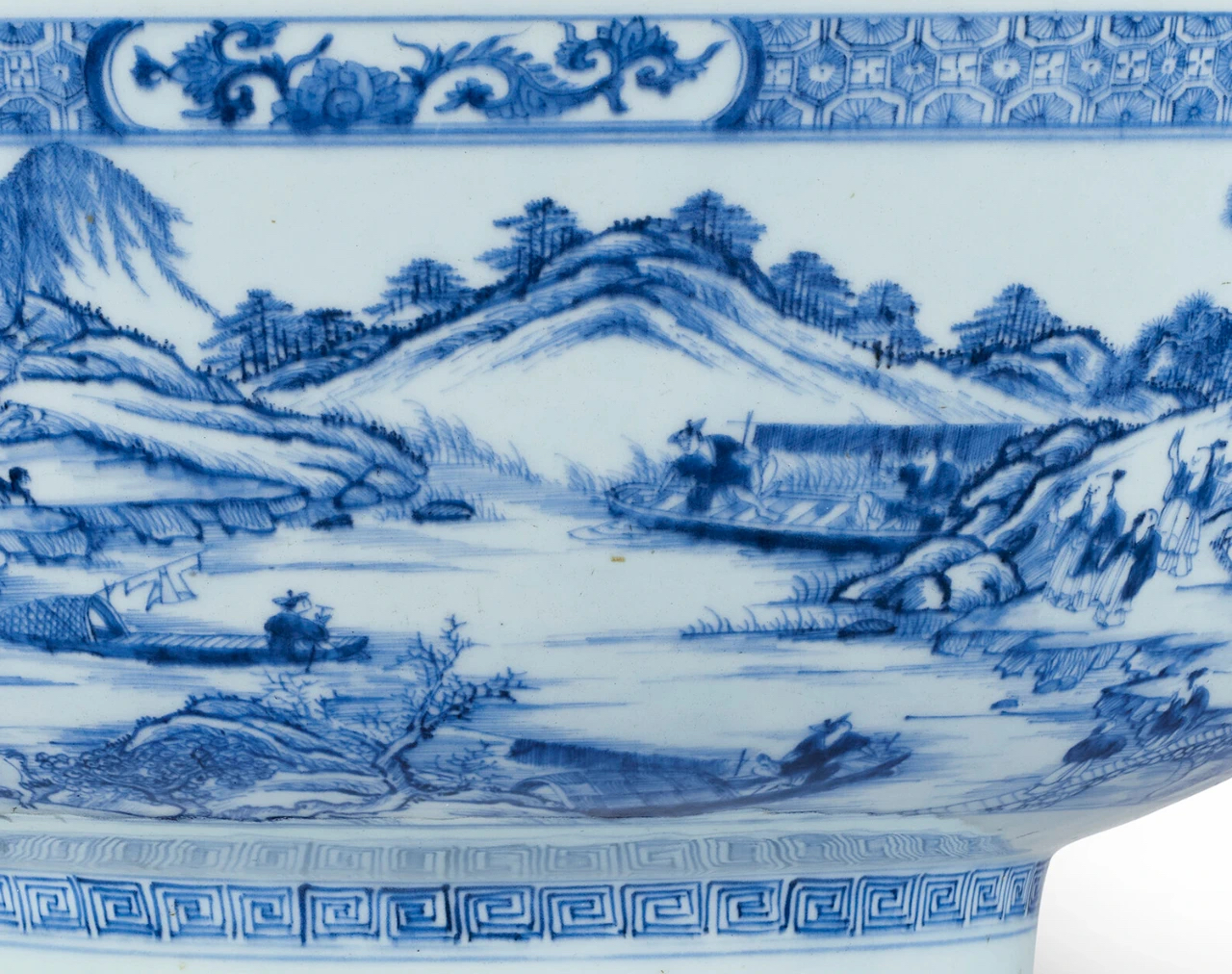
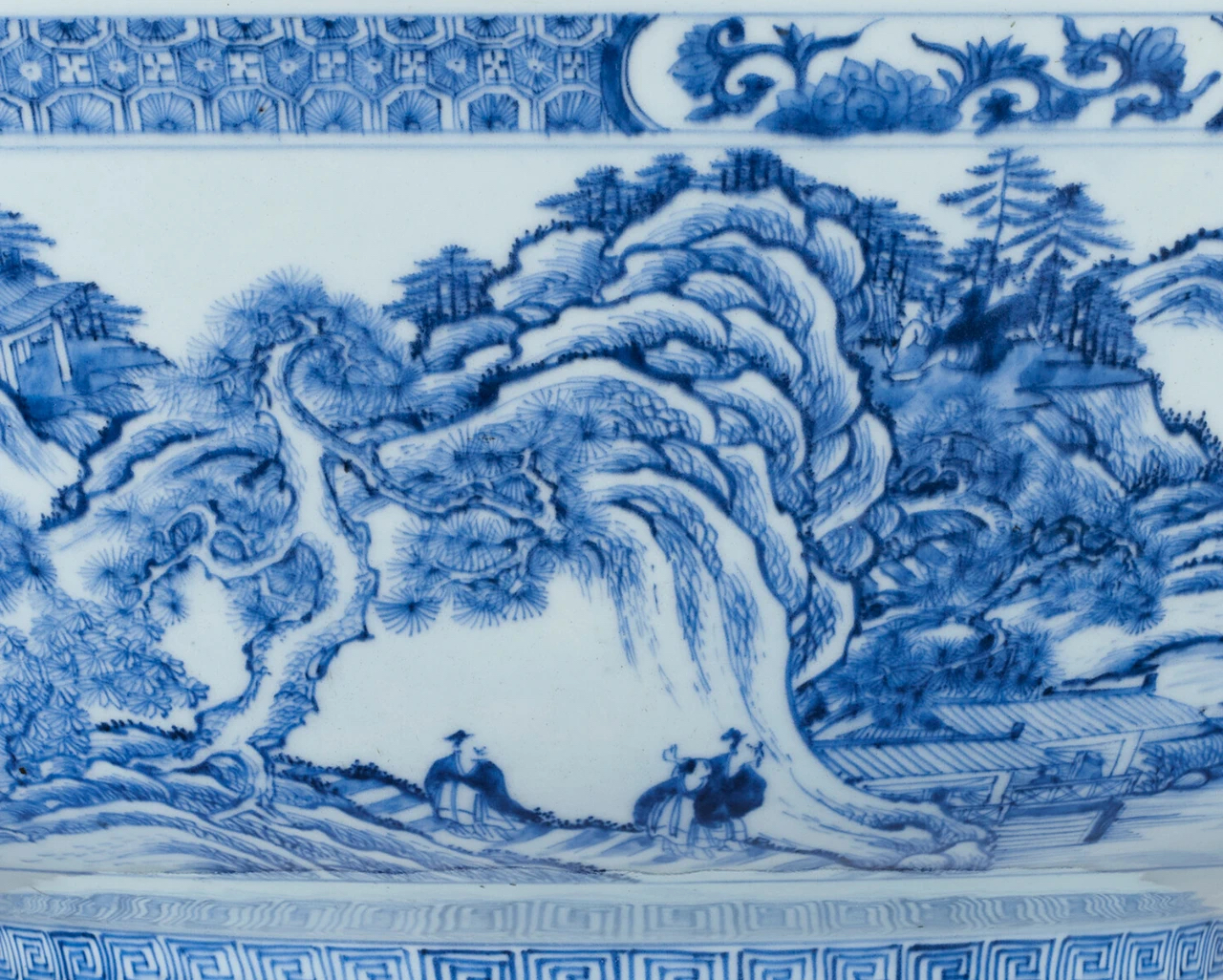
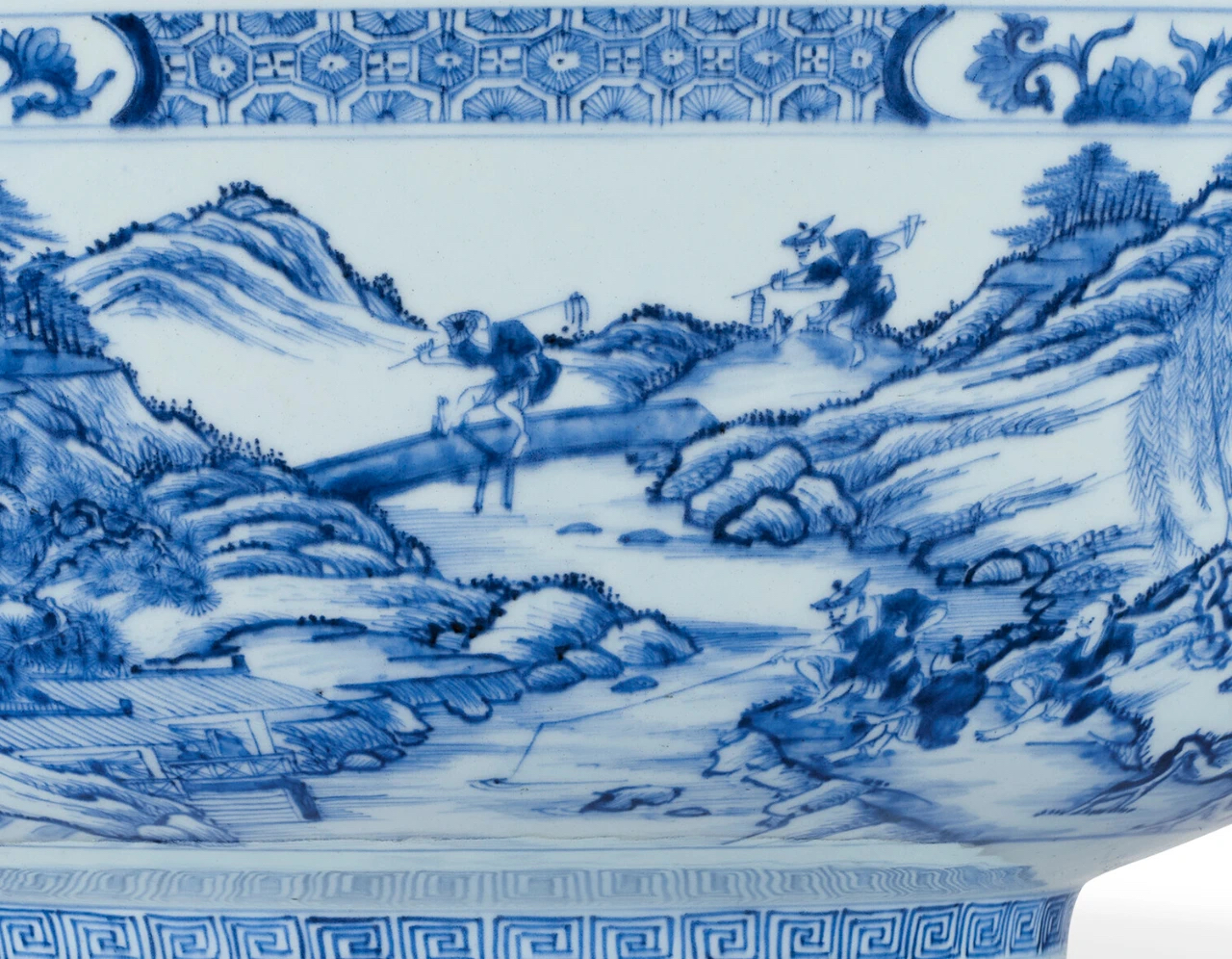
The five-colour plate is painted with the famous story of ‘Yanqing fighting’ from the classic novel ‘Water Margin’ of the Ming Dynasty. Kangxi five-colour is one of the most representative varieties of porcelain in the Kangxi dynasty, in the Ming dynasty on the basis of five-colour and the creative use of blue and gold colours on the glaze, can be said to be ‘the best in the world’. The late Ming and early Qing dynasty literati painting trend, woodblock prints and engraved books, the prosperity of the industry, all to the Kangxi porcelain painting provides a blueprint. The late Ming and early Qing period of literati painting trend, woodblock prints and engraved books boom, but also to the Kangxi porcelain painting provides a blueprint, in combination with porcelain, the birth of a number of vivid and grounded in the new ideas.
The Water Margin’ is one of them, the late Qing Dynasty, Silent Garden in the “pottery” has commented: ’Kangxi dynasty, the painter is good. However, the class of painting by the guest goods are ‘Water Margin’, ‘West Wing’ of the story is more. Like this absurd rate of wild interest of the pen, more difficult to meet also.’ Thus, the current see often painted in the Kangxi dynasty five colours on the Water Margin hero image, not only the shape of God, beard and hair, and vividly present the tension of the storyline, this piece of five colours yanqing beat map plate, that is, one of the best examples.
▼
Lot 1017
清康熙 五彩燕青打擂图盘
直径 51.8 cm.
$20,000-30,000
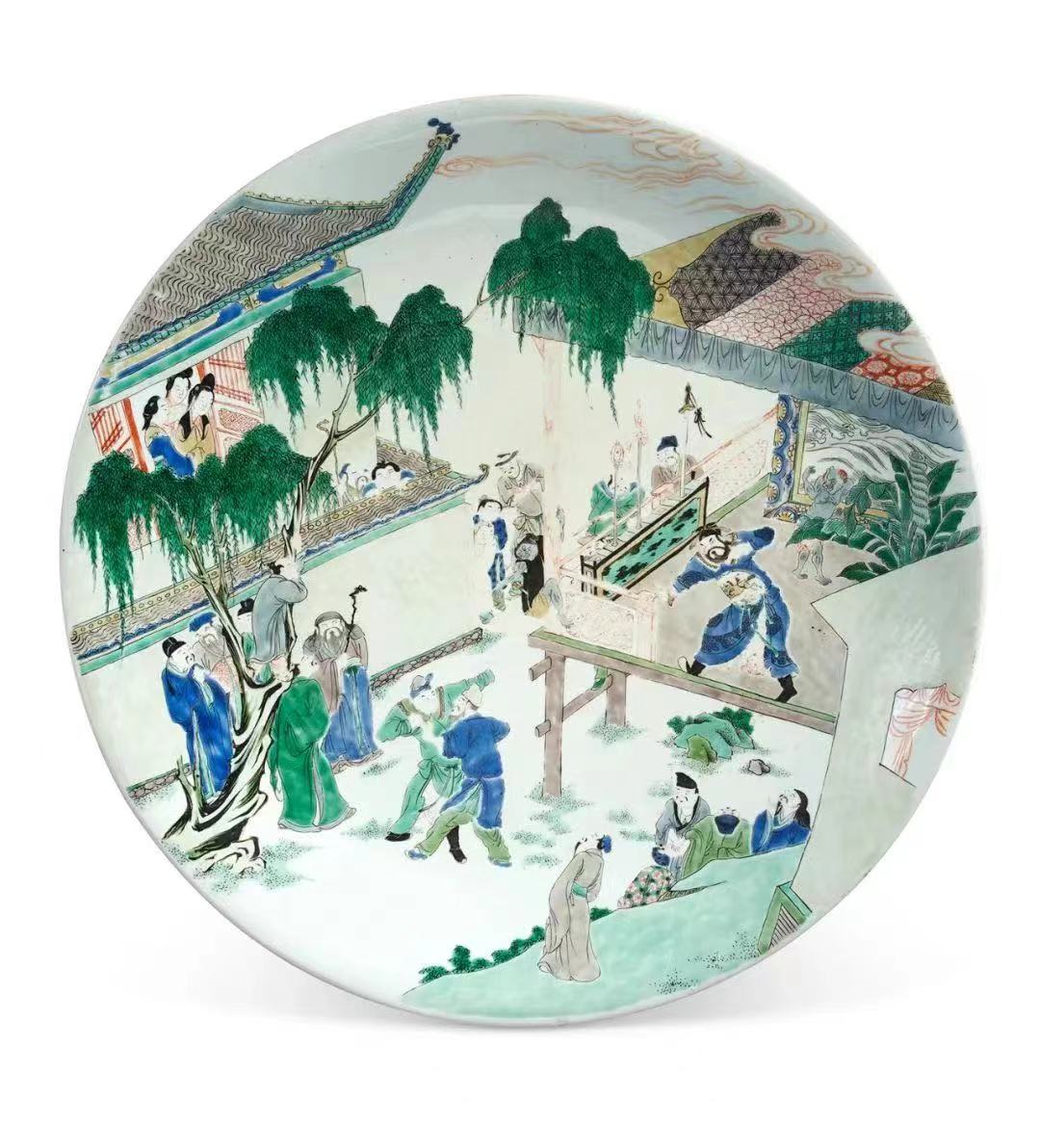
来源:
Butterfield Butterfield,旧金山,1998年5月26日,拍品编号5868
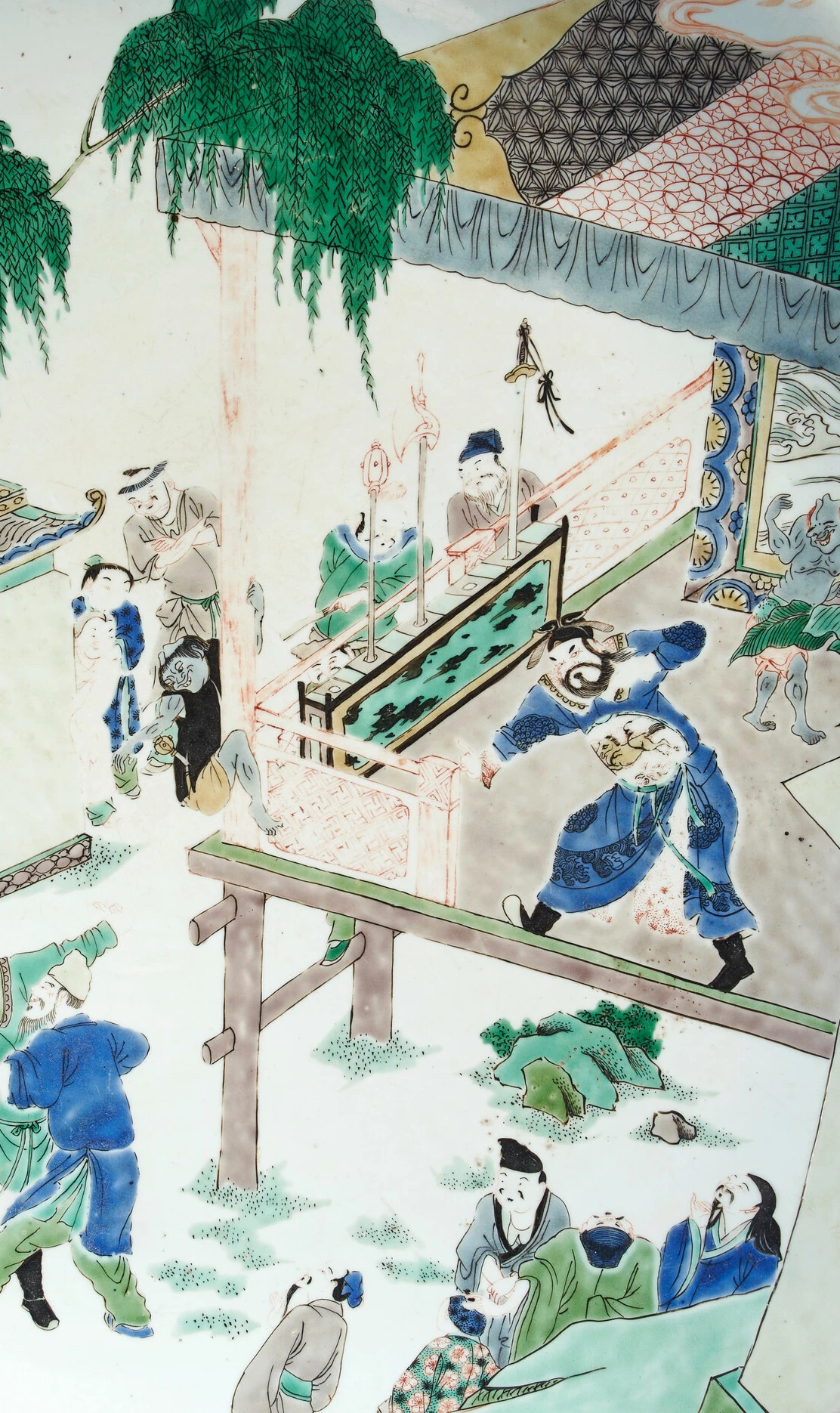
4.
More exciting Qing dynasty porcelain collections will be presented in the ‘Important American Private Collection of Qing Dynasty Porcelain’ feature.
The special and elegant glaze colours and shapes of these wares are a tribute to the ingenuity of ancient craftsmen.
This lavender-coloured sky blue glaze, sometimes referred to as moon white glaze, is stunningly beautiful and sophisticated, inspired by the Ru kilns of the Song dynasty. A slightly smaller example, also with a double-ringed Yongzheng mark on the bottom, and a moon white glazed dish slightly larger than this pair were included in Five Colours of Qiongxia: Yuan, Ming and Qing Dynasty One-Glaze Porcelain in the Collection of Bamboo and Moon (Hong Kong, 2005, p. 141 no. 73), and sold at Christie's in New York in September 2018 (no. 128).
▼
Lot 1059
清雍正 天蓝釉盘一对 双圈六字楷书款
直径 16 cm.
$30,000-50,000
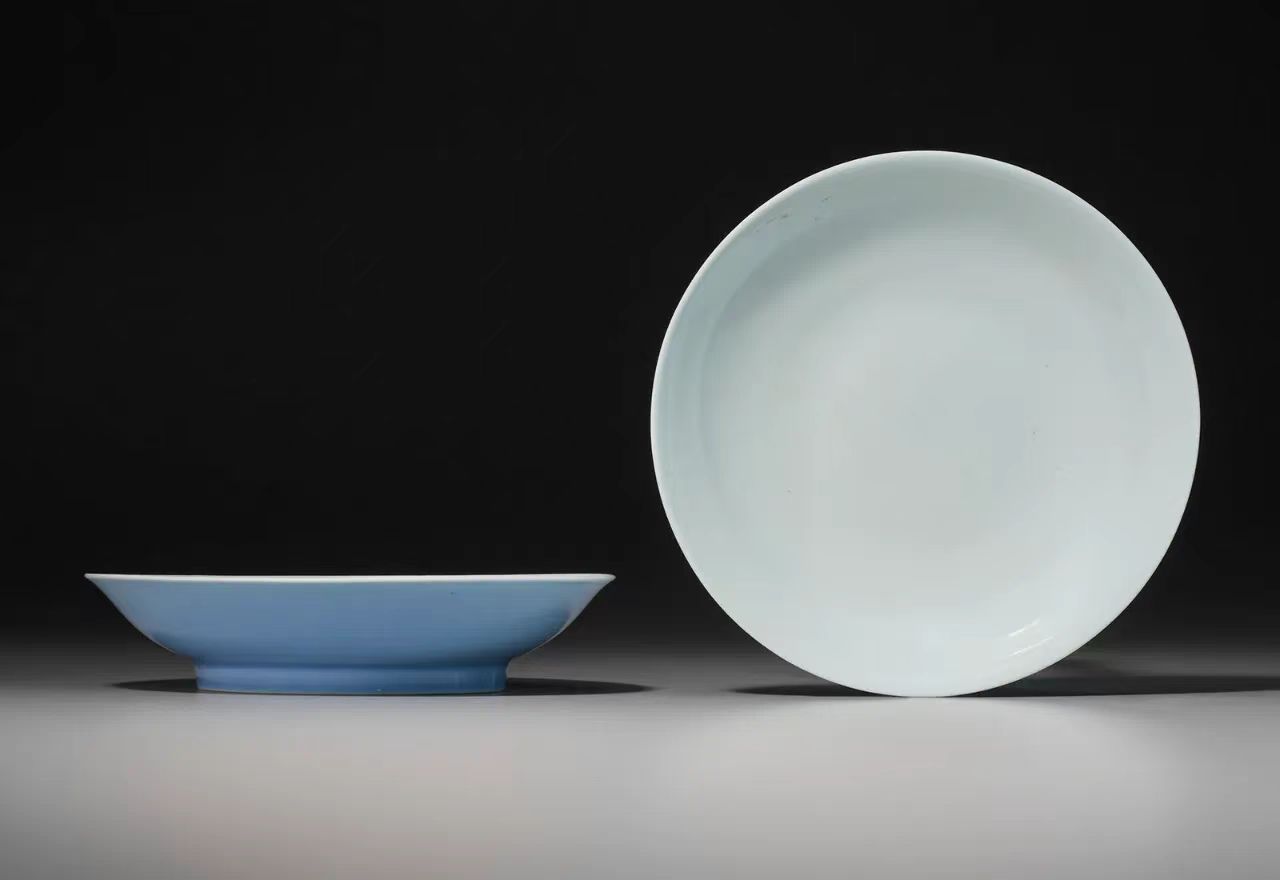
来源:
伦敦苏富比,2005年11月9日,拍品编号306
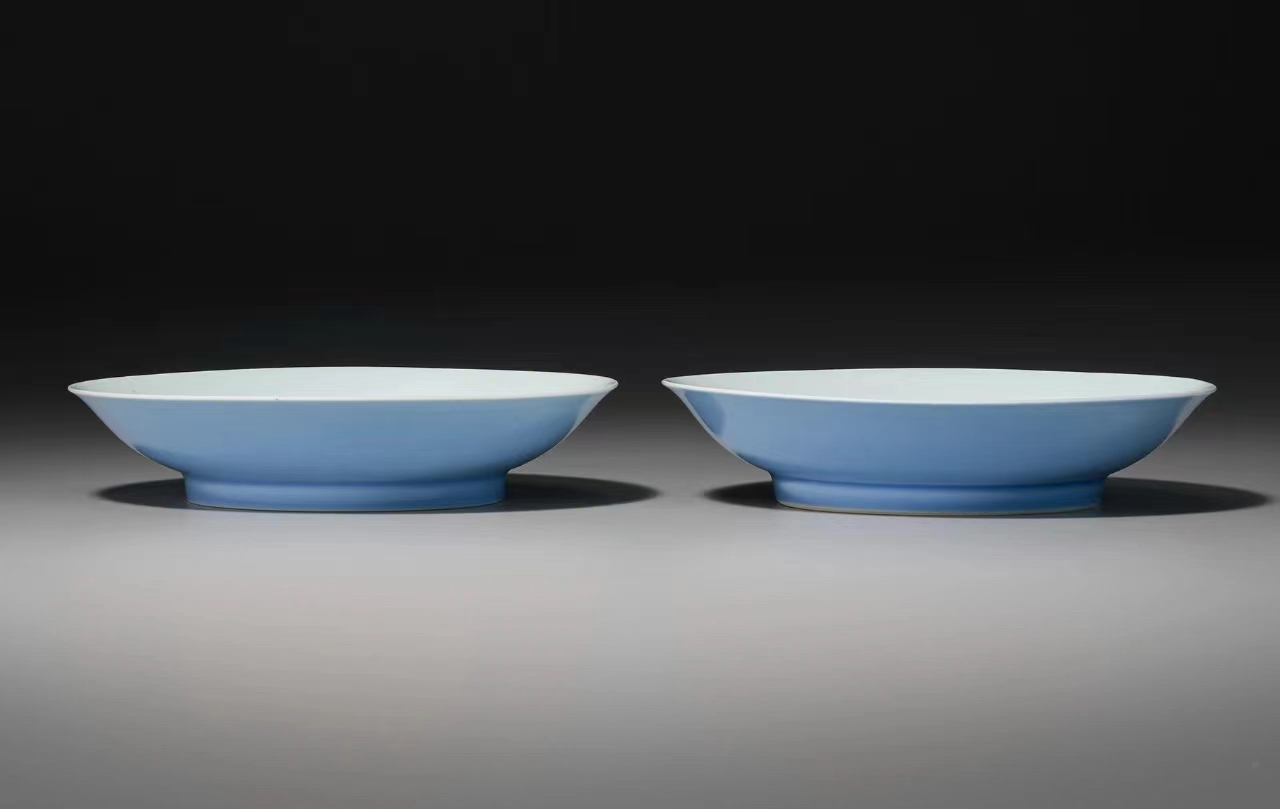
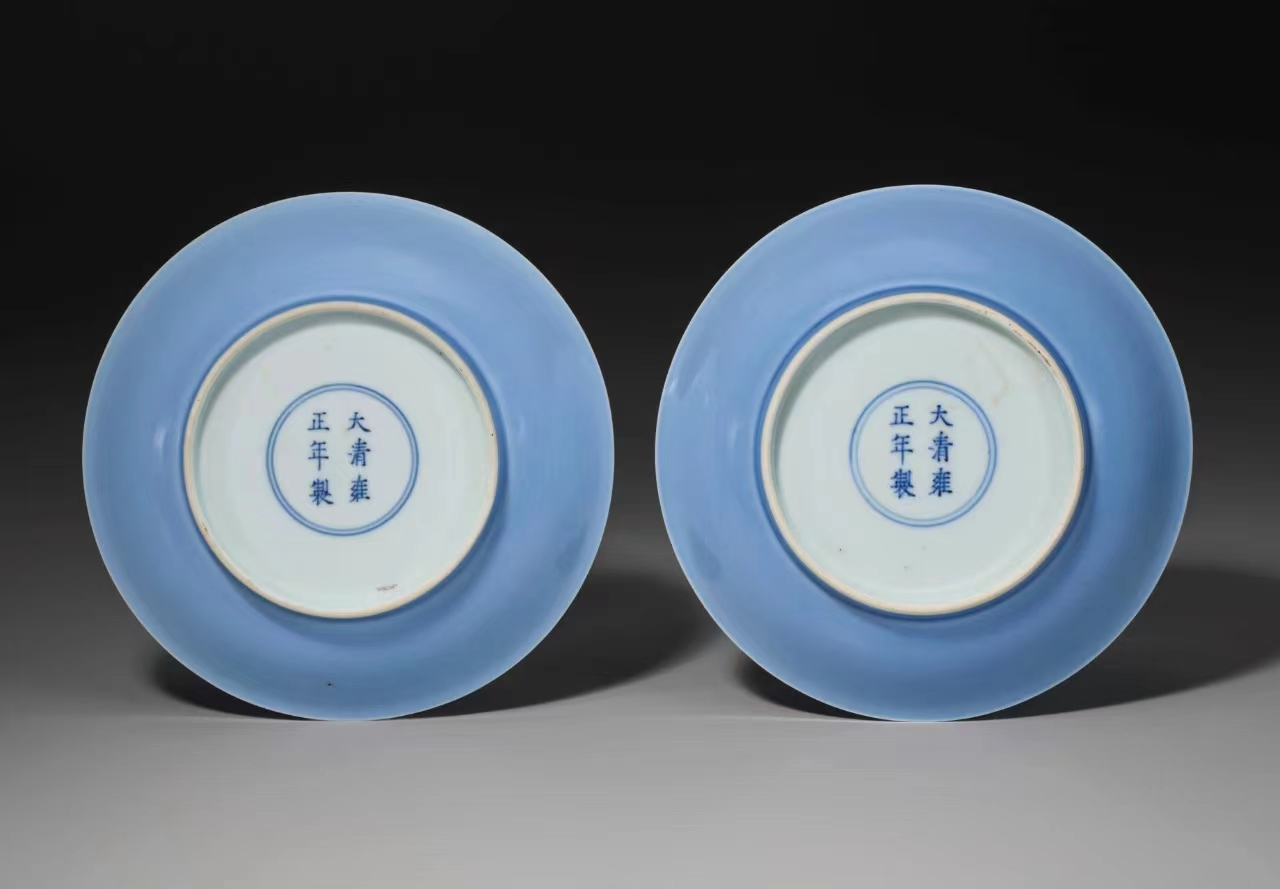
As the previous generation of antiques is quite keen on the emperor, Yongzheng especially hope that the dynasty fired porcelain can be comparable to the Song dynasty porcelain, in this aesthetic guidance, the birth of a unique style, the extraordinary elegance of the imperial porcelain. This imitation of Ru glaze Ruyi ears embracing the moon vase is one of the perfect example of fine imperial porcelain at that time.
The Ru kiln is one of the five famous kilns of the Song Dynasty. In the late Northern Song Dynasty, Ru kiln as the official kiln was monopolised, exclusively for the court to burn imperial porcelain, but soon after it was destroyed in the Song and Jin war, and thus the heirloom Ru kiln is extremely rare. Yongzheng was particularly enamoured of Ru porcelain, and the glaze of the Ru kiln at that time is thought to have been copied by Tang Ying.
The elegance of this vase is strongly influenced by the early Ming blue-and-white vases, and it is rare to find a vase of this shape and size from the Yongzheng period; Christie's Hong Kong offered a similar example in May 2012, but in a slightly smaller size (53.3 cm); and a similarly sized vase is illustrated in A leisurely appreciation of the Qing dynasty porcelain vases from the Huaihai tang collection (Hong Kong, 2023, pp. 114-45, no. 31), which is also of a similar size, but in a smaller size (53.3 cm). No. 31) also records a related bottle of smaller size. A large blue-and-white vase of this type was also made during the Yongzheng period, and Christie's London offered one in November 2018 (no. 171) that was slightly smaller than this (53.3 cm).
▼
Lot 1060
清雍正 仿汝釉如意耳抱月瓶
六字篆书款
高 57 cm.
$150,000-250,000
来源:
伦敦苏富比,2006年7月12日,拍品编号131
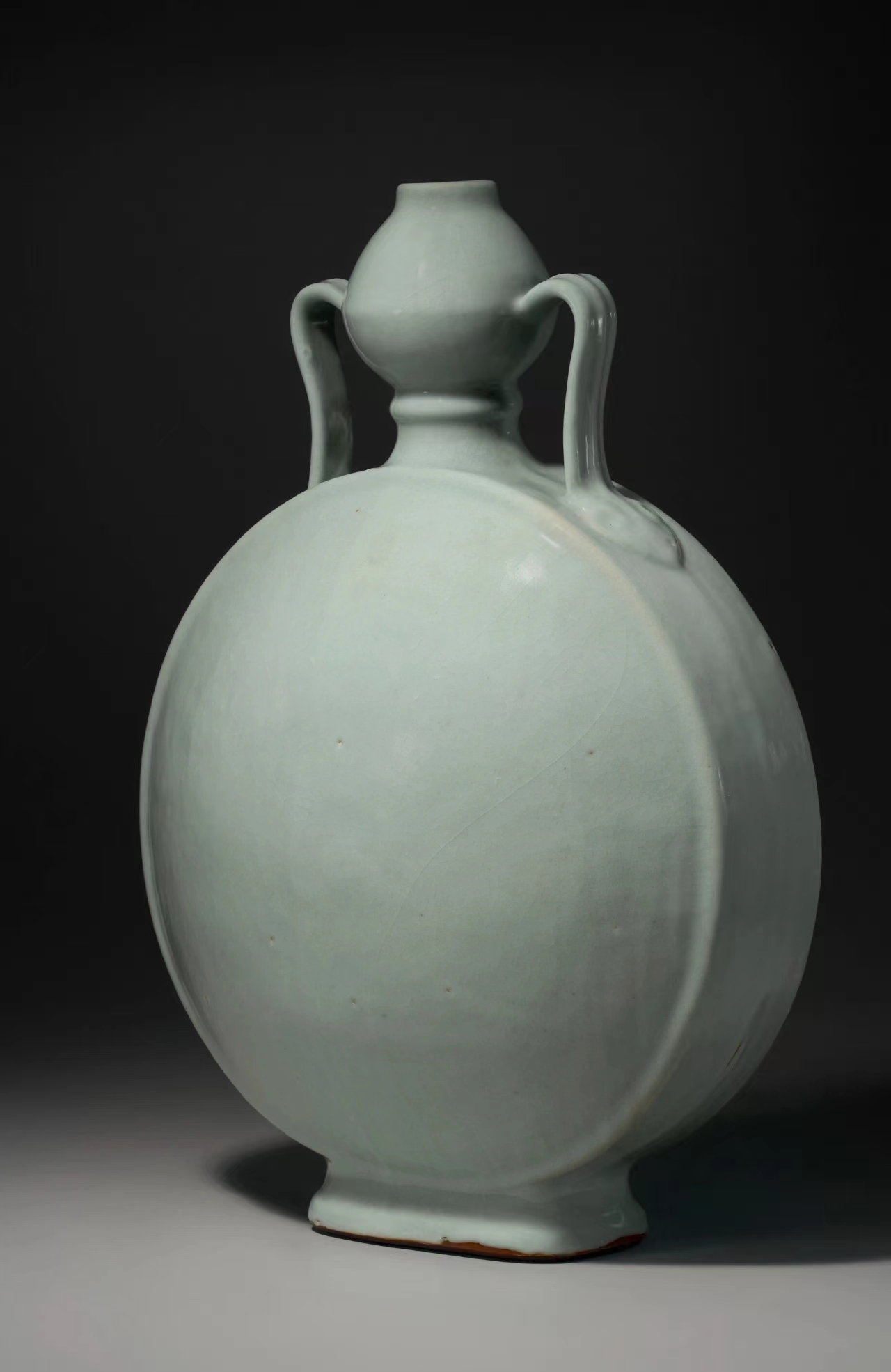
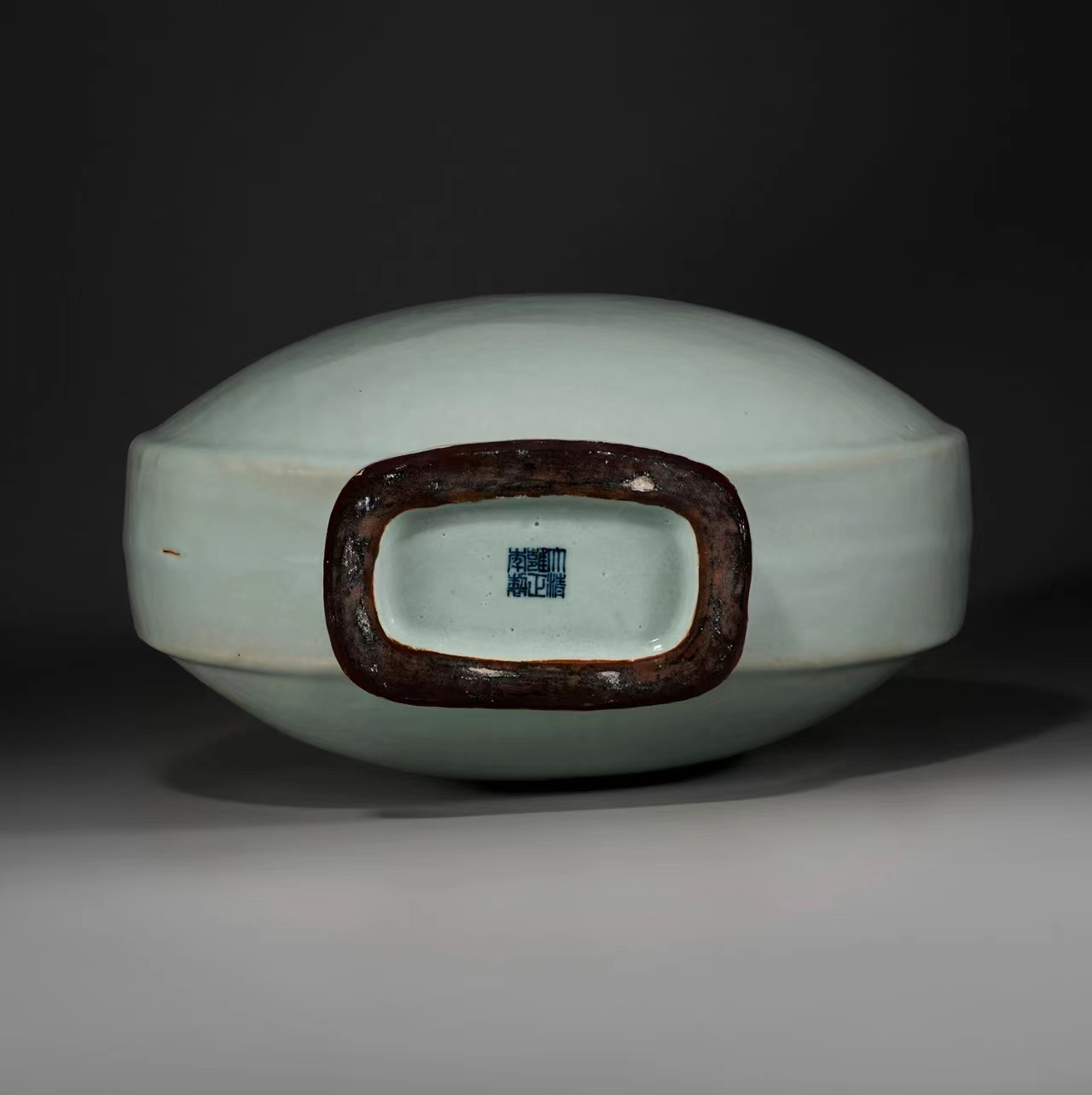
This Qianlong-period bottle with elephant ears in a clear blue glaze is of a particularly rare glaze colour, and its shape is derived from the ancient Chinese jade cong of Liangzhu, which the Qianlong emperor was particularly keen to emulate, making this type of bottle one of the most popular styles of monochrome-glazed porcelain of the period.
In public and private collections, there is a Qianlong-period example of this type in the Palace Museum in Beijing, and a similar bottle in the form of an octagonal octagonal glazed bottle (no. 3339) was offered by Christie's Hong Kong in June 2016, where a similar bottle in the form of an octagonal glazed bottle in the form of an octagonal glazed bottle in the same colour was offered for sale.
▼
Lot 1062
清乾隆 蓝釉象耳琮式瓶
六字篆书款
高 29 cm.
$40,000-60,000

来源:
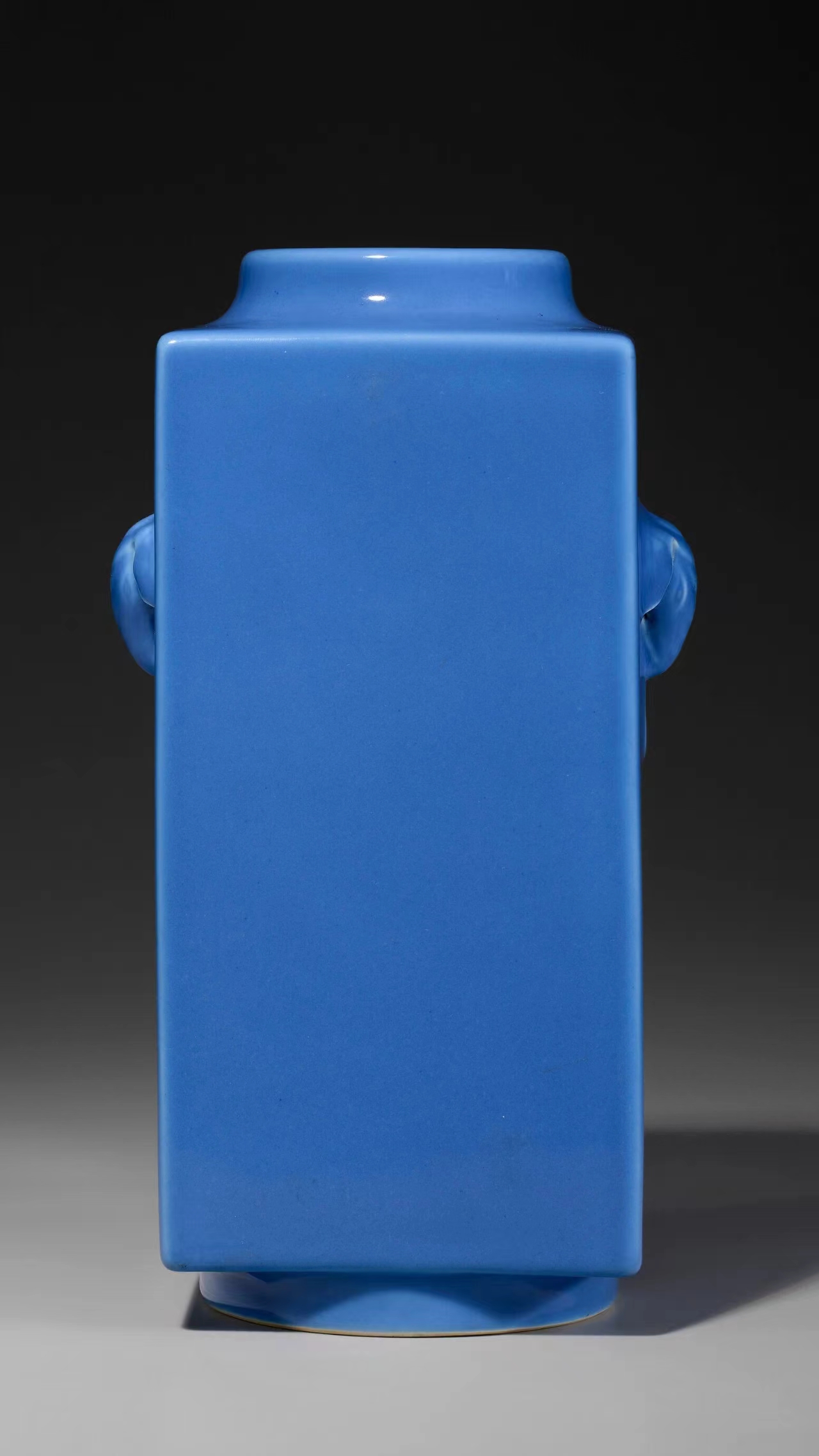
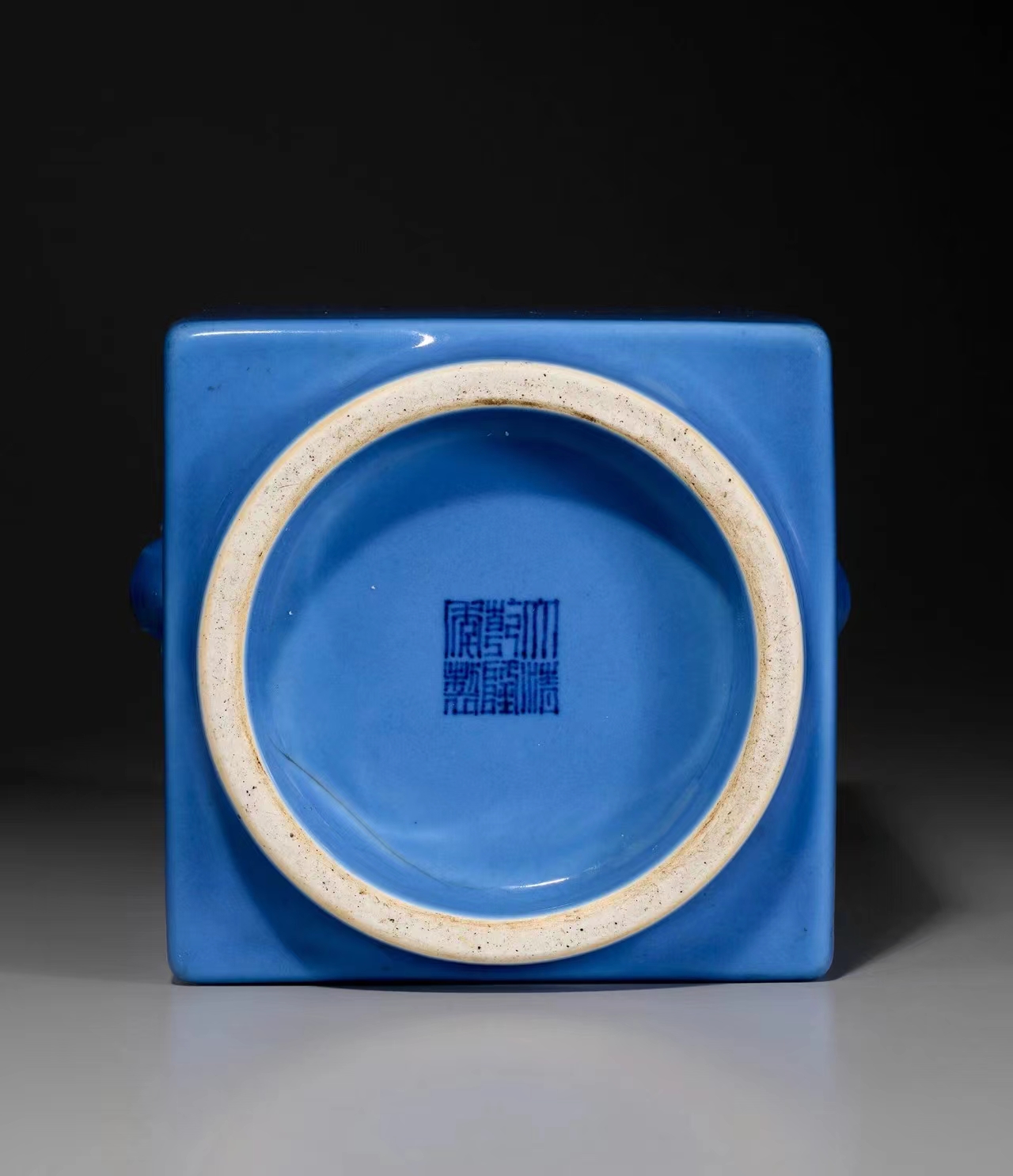
As the Qianlong emperor pursued the aesthetics of porcelain and as firing techniques progressed, more fascinating monochrome glazes were created. Tang Ying, the pottery inspector, had studied the treasures of Song dynasty imperial porcelain in depth, and under his supervision, the imperial kilns of Jingdezhen in the Qing dynasty created the Furnace Jun glaze, inspired by the Jun kilns of the Song dynasty - in the famous Taocheng Chronicle, it is stated that the Furnace Jun glaze was the first of nineteen types of official porcelain successfully fired during his term of office, and that the best quality ever seen in this world was born during the Yongzheng and Qianlong dynasties.
As Mr. Geng Baochang exclaimed of his time, ‘...... There are all sorts of vertical stripes of different lengths, some vertical, some curved, and some resembling mountain mist and clouds. ...... It is as neat and beautiful as the colourful peacock's tail feathers. ’
This Qing dynasty Qianlong Fenjun-glazed elephant ear jug is a perfect example of the fine glaze and elegant lines that characterised imperial porcelain of the Qianlong period, made even more fascinating by the incredible effect of the Fenjun glaze.
A similar, slightly smaller (12.6 cm), elephant-eared pot in the Museum of Oriental Culture, Durham University, is illustrated in A Descriptive and Illustrated Catalogue of the Malcolm Macdonald Collection of Chinese Ceramics (London, 1972, XX. pl.). London, 1972, pl. XCIII, no. 257).
▼
Lot 1065
清乾隆 炉钧釉象耳壶
高 31 cm.
$30,000-50,000
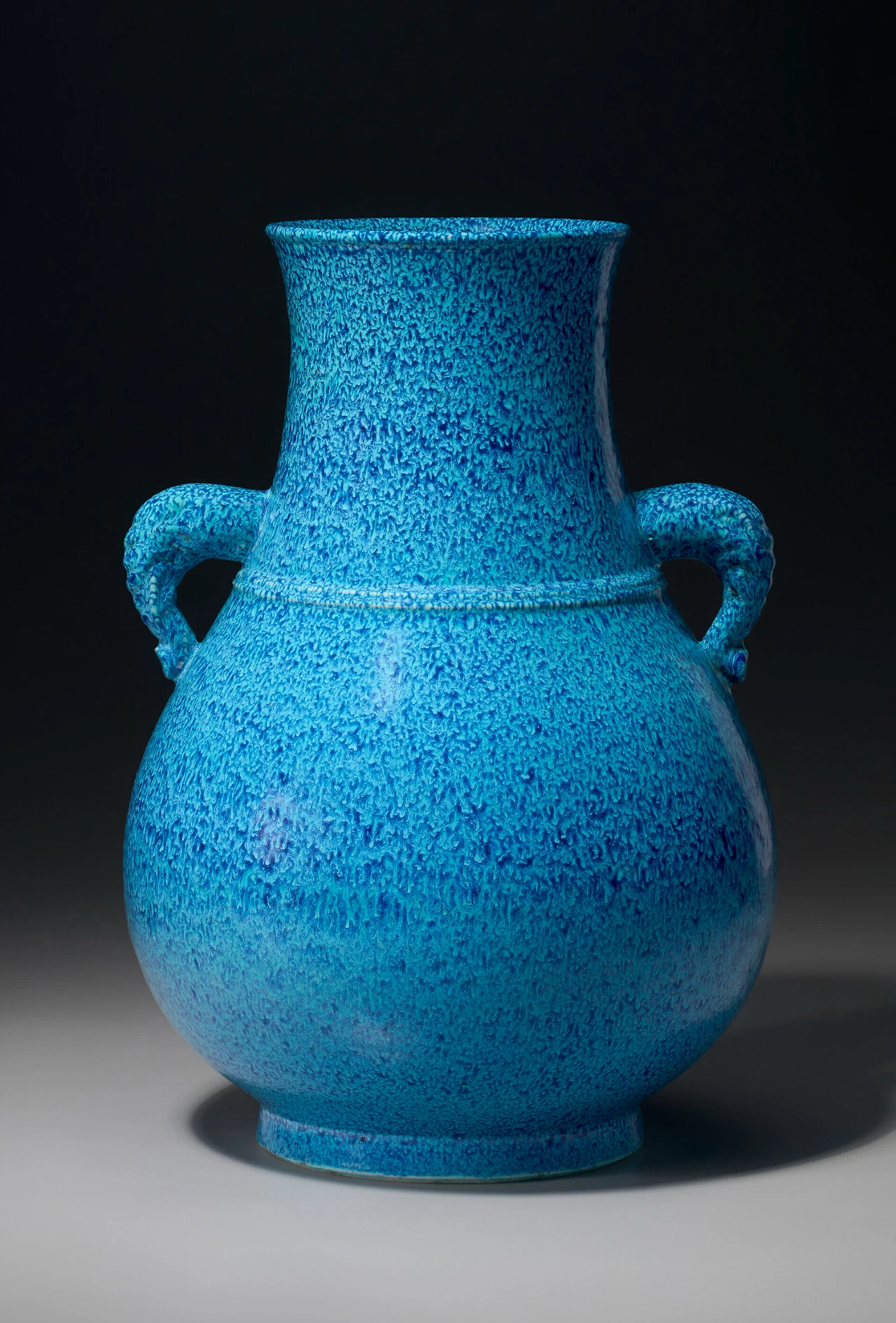
来源:
纽约苏富比,2005年3月31日-4月1日,拍品编号124
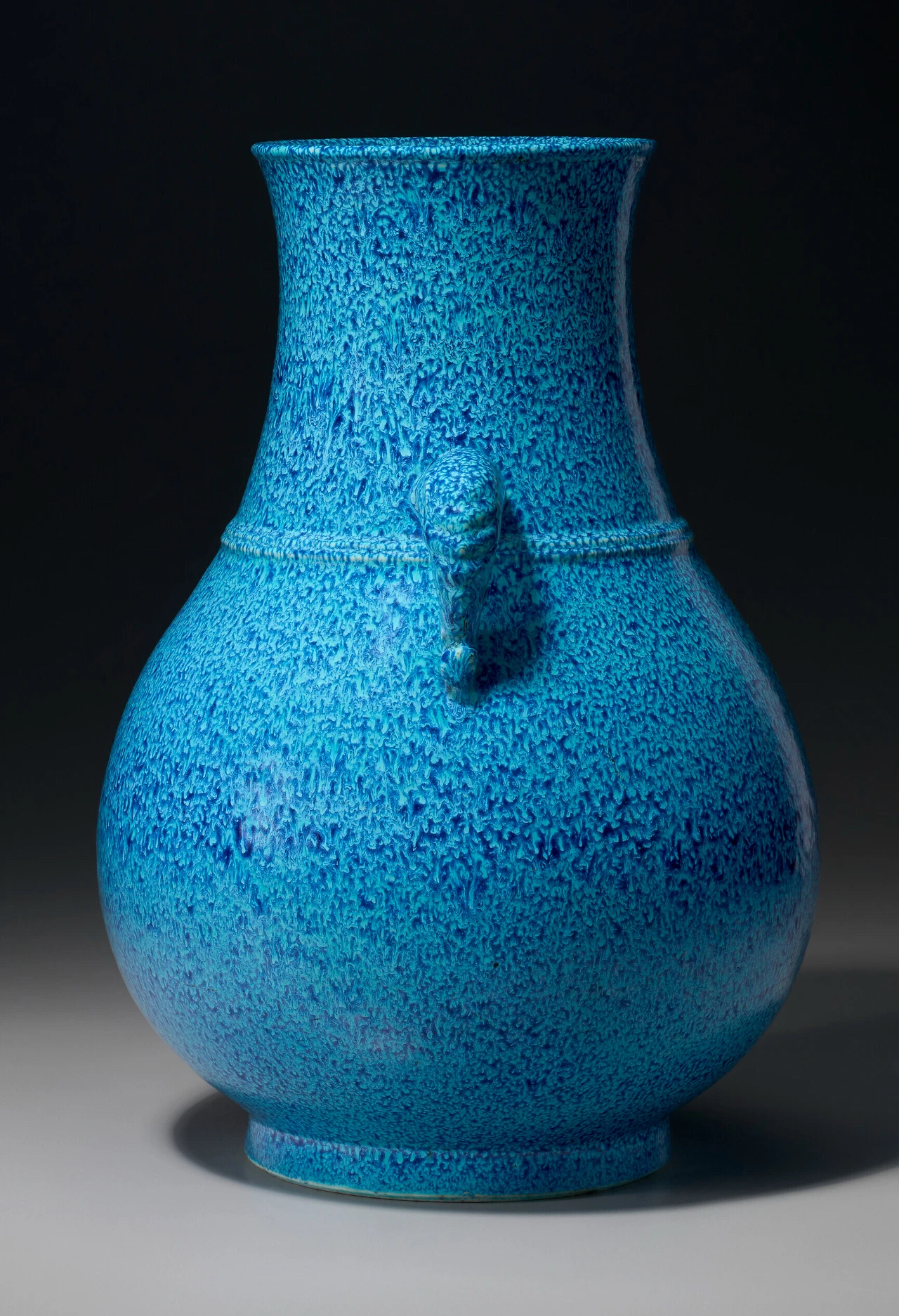
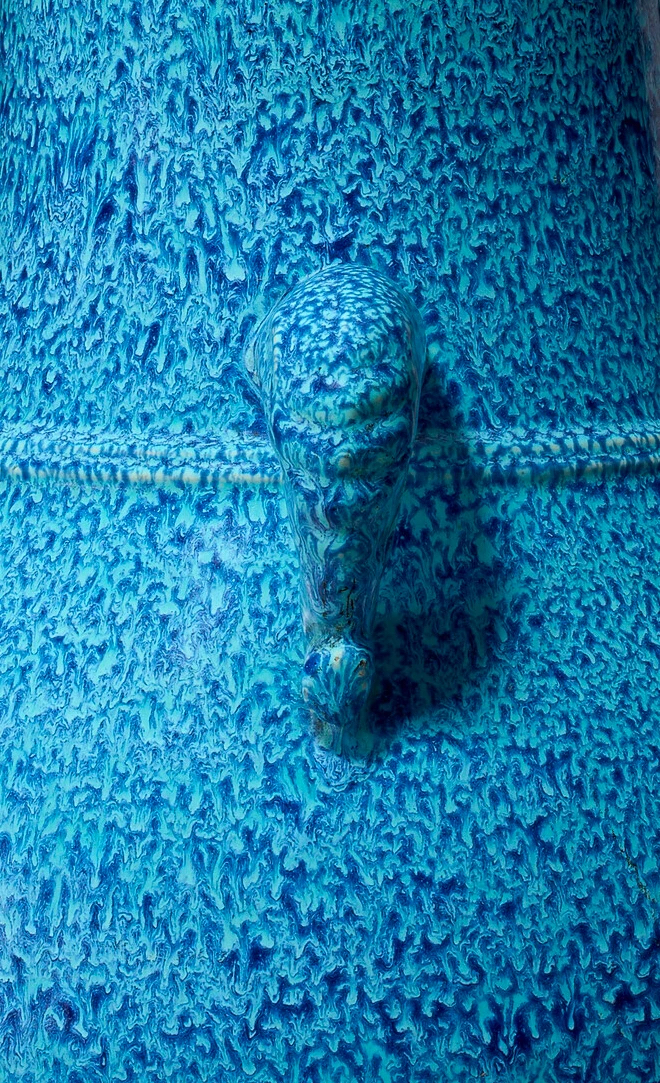
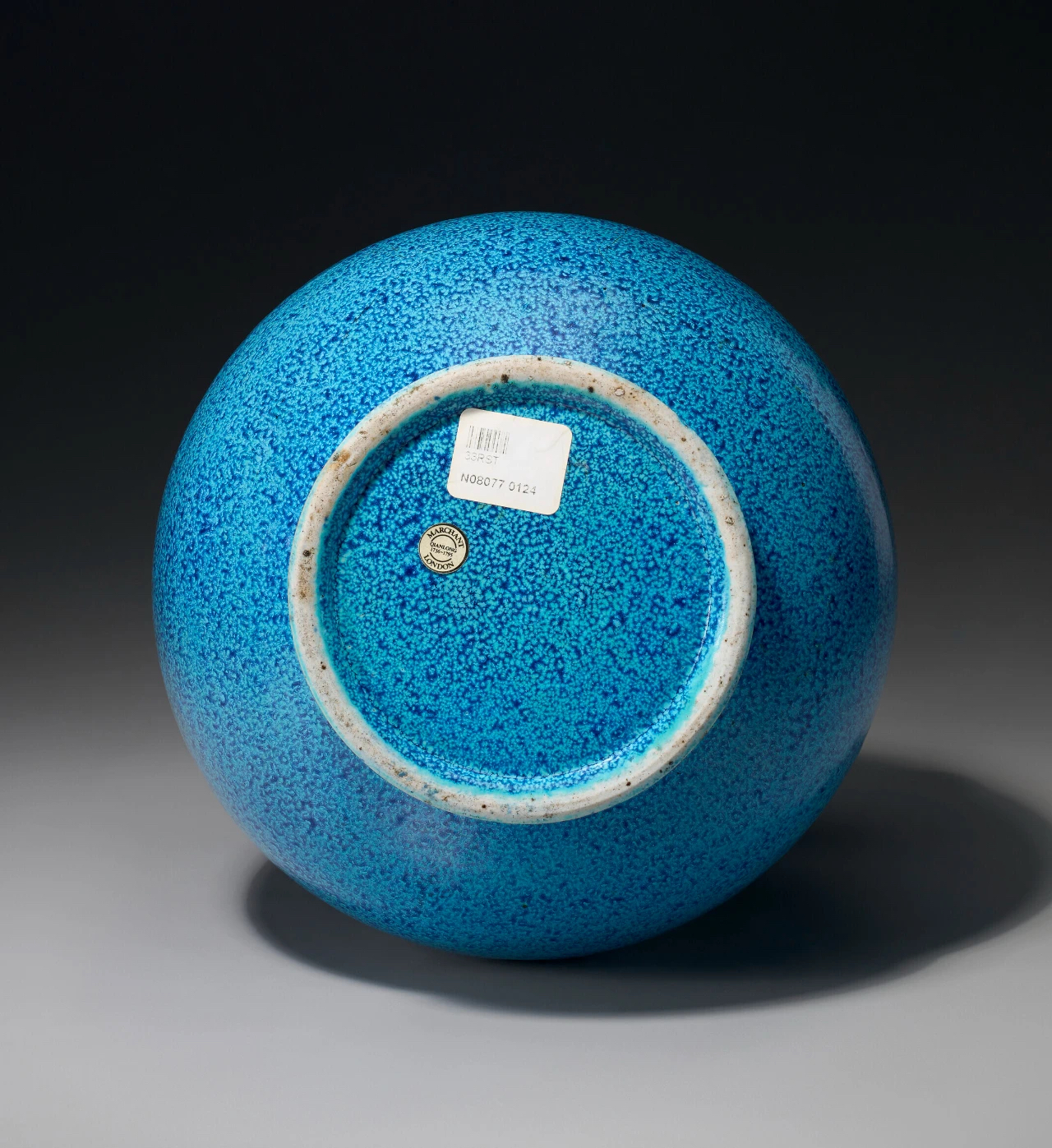
👇
9月13日 10:00 – 17:00
9月14日 10:00 – 17:00
9月15日 13:00 – 17:00
9月16日 10:00 – 17:00
9月17日 10:00 – 17:00
9月18日 10:00 – 14:00
拍 卖:
9月19日 上午9:00(拍品 801-917)
9月20日 上午9:00(拍品1001-1093)
* The above are all New York times

